How is cruise ship speed measured, and how fast is a knot in miles per hour?

Have you ever wondered how cruise ship speed is measured? Ships aren't the fastest method of transportation, but that doesn't mean it's not fun to calculate your speed when you're sailing. Unlike land travel, ship speed is not measured in miles per hour.
Here, I'll cover how cruise ship speed is measured, how to calculate your ship's speed in miles per hour and some considerations that could affect how fast you're going.
For cruise news, reviews and tips, sign up for TPG's cruise newsletter .

What is a knot in nautical terms?
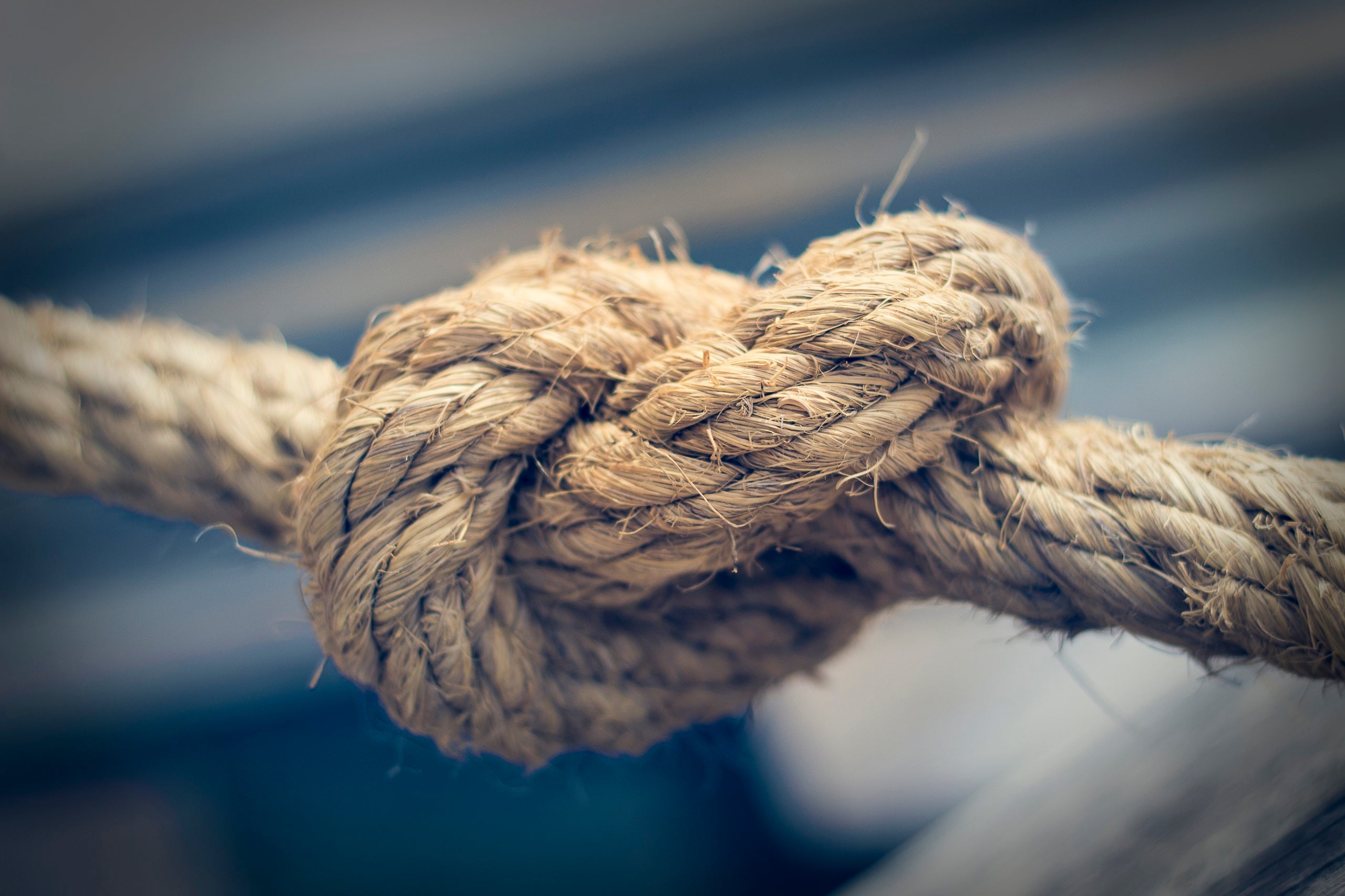
A knot is the nautical measure of speed used by cruise ships and other maritime vessels. One knot represents 1 nautical mile per hour.
But "knot" isn't simply a misspelled nickname for "naut" (as in nautical mile). Its origins are far more literal, according to the United States' National Ocean Service .
In the 17th century, ship crews measured vessel speed by tossing a rope with several evenly spaced knots and a triangular-shaped piece of wood into the water. As the ship moved, currents created resistance against the wood, causing more rope to be pulled into the water over a specified period of time. When time was up, crew members would pull the rope in and count the knots.
In short, the number of knots pulled out into the water over a specific period of time translated into the speed of the vessel's travel.
How fast is a knot in miles per hour?
When you convert 1 knot to miles per hour, it works out to 1.15 standard miles per hour for every nautical mile per hour. That's knot speed. So, although land-based miles per hour are just slightly faster than knots, for general purposes, it's a close comparison. For example, if your ship is sailing 20 knots, it's sailing roughly 23 mph.
How fast do cruise ships go?
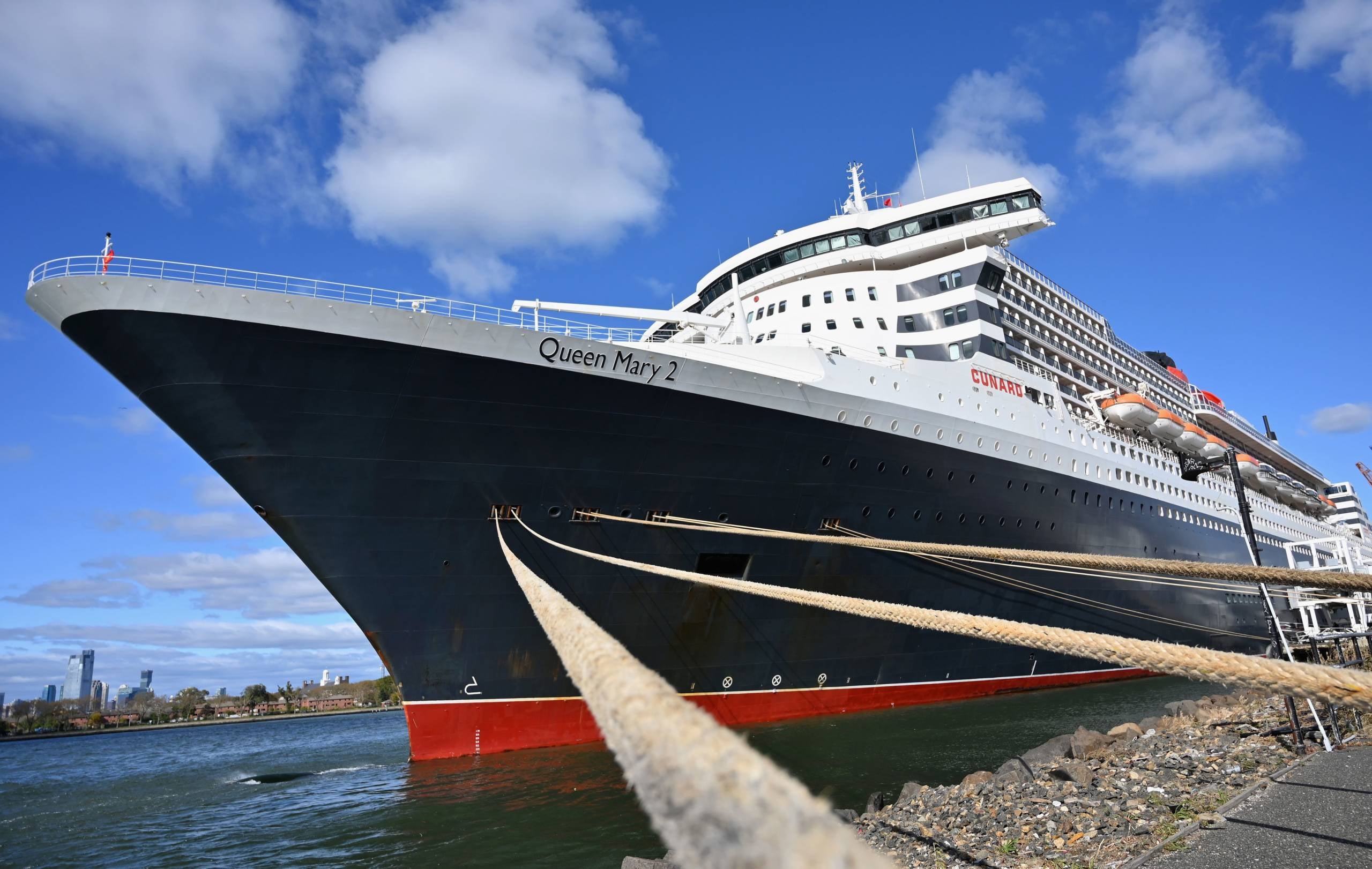
What is the maximum speed of a cruise ship? The maximum speed for most modern vessels is about 30 knots or 34.5 mph, but just because they can glide along that fast doesn't mean they actually do, or at least not all the time.
Officers on the bridge will adjust speed to account for weather and ocean conditions — rough seas and high winds mean slower speeds — and port arrival times. Early arrival into port can come with extra fees that cruise lines are loath to incur, which usually means they prefer to take their time by slowing their speed.
What is the average cruise ship speed?
Cruise ship average speed is affected by lots of outside forces, as mentioned above. In relatively calm conditions, the average present-day vessel travels about 20 knots or 23 mph between ports of call.
What is the fastest cruise ship?
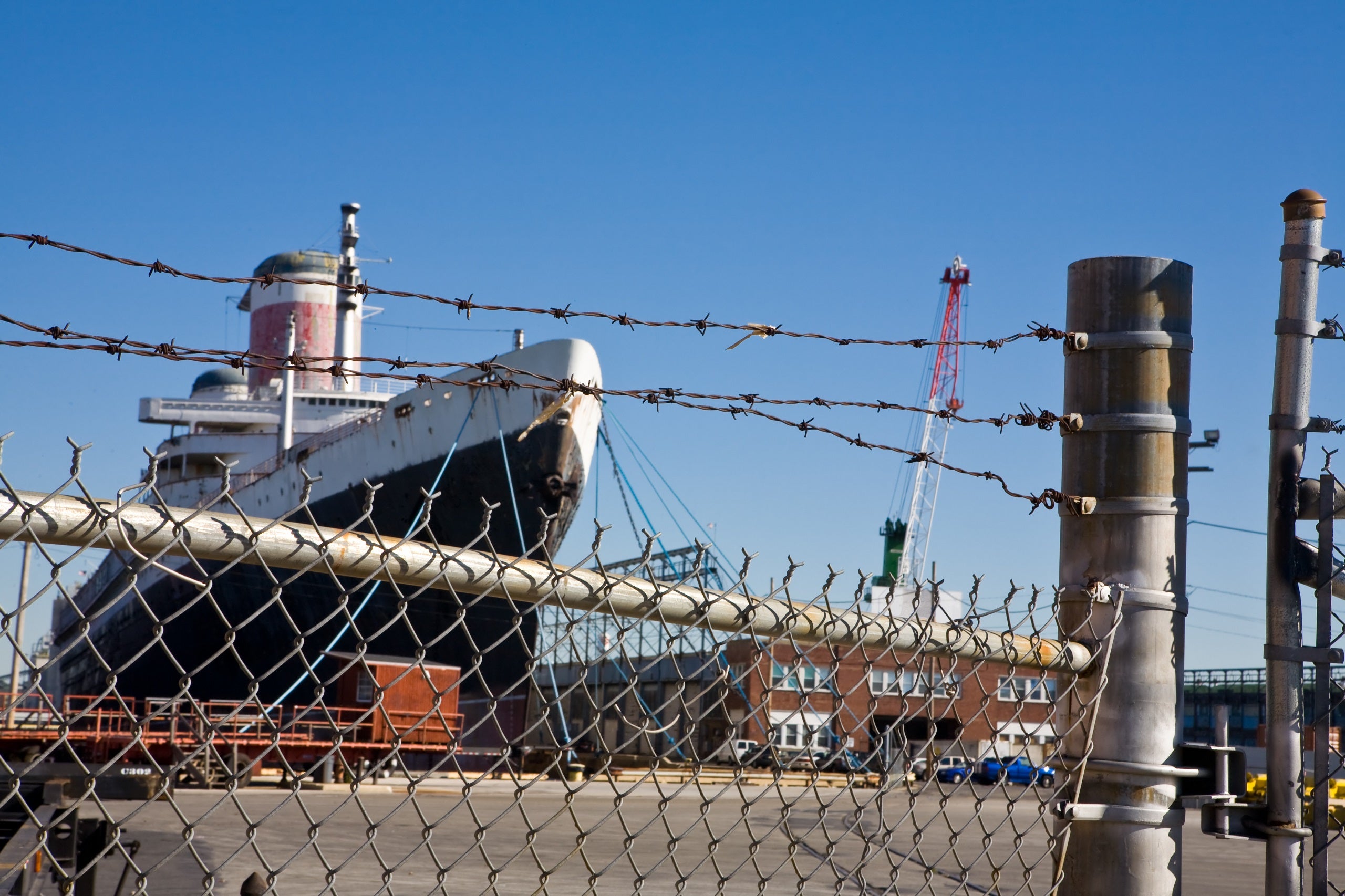
Currently, the fastest cruise ship that's operational is Cunard Line's Queen Mary 2, which often serves as an ocean liner to ferry people back and forth between the U.S. and the United Kingdom. Its maximum speed is 30 knots.
Cunard, which has operated historically fast vessels throughout the years, won the Blue Riband — a coveted prize for the ship to cross between the U.S. and Europe while maintaining the highest speed — 18 times. The last ship in the fleet to hold the unofficial award, which dates back to the 1800s, was Queen Mary, which is currently a floating hotel in Long Beach, California, near Los Angeles.
Queen Mary was dethroned as the winner in 1952 by SS United States, which was operated by rival United States Lines and made the crossing in just three days, 10 hours and 40 minutes at a speed of nearly 35.6 knots or almost 41 mph. (Its maximum speed was 39 knots or about 45 mph.)
Today, SS United States is docked in Philadelphia and maintained by a nonprofit conservancy that hopes to find investors to restore the languishing liner, which is now more than 70 years old. It might not be operational, but its previous accolades make it the fastest passenger vessel currently afloat.
Planning a cruise? Start with these stories:
- The 5 most desirable cabin locations on any cruise ship
- A beginners guide to picking a cruise line
- The 8 worst cabin locations on any cruise ship
- A quick guide to the most popular cruise lines
- 21 tips and tricks that will make your cruise go smoothly
- 15 ways cruisers waste money
- 12 best cruises for people who never want to grow up
- The ultimate guide to what to pack for a cruise
- CRUISE TIPS
- Carnival Cruise Lines
- Celebrity Cruise Line
- Disney Cruise Line
- Holland America Line
- MSC Cruises
- Norwegian Cruise Line
- Princess Cruises
- Royal Caribbean
- Virgin Voyages
- Windstar Cruises
- Travel Deals
- CRUISE SHIP TRACKER
- Port Webcams

Imagine a skyscraper-sized object cruising through the ocean’s vastness. That’s the reality of today’s modern cruise ships. Despite their colossal proportions, some of the world’s most massive cruise ships achieve mind-boggling velocities. The average cruise ship speed hovers around a swift 20 knots, translating to about 23 mph.
How Fast Can A Cruise Ship Go?

However, this pales compared to the record-breaking SS United States , which reached a staggering cruise ship top speed of 38 knots or, better said, an incredible 44 miles per hour during its 1952 maiden voyage.
Key Takeaways
- The average cruise ship speed is approximately 20 knots, equivalent to 23 mph.
- Top-end cruise liners can reach speeds between 21 to 24 knots under optimal conditions.
- On its inaugural trip , the SS United States holds the historical record with a top speed of 38 knots.
- Various factors, including fuel efficiency and passenger comfort, influence cruising speeds below maximum capabilities.
- Cruise ships demonstrate incredible engineering feats, balancing high-speed potential with operational practicality.
Cruise Ship Speed: What is the Top Speed?

Modern cruise ships , recognized for their vast amenities and focus on passenger experience, commonly cruise at 20 to 23 knots. However, these vessels can push the envelope up to 30 knots in certain circumstances, amounting to nearly 35 mph on the open sea. This upper range is seldom utilized but demonstrates the potential power these ocean liners possess.
Royal Caribbean maintains an advertised average sailing speed of 18 to 20 knots for its illustrious fleet. Like many other cruise operators , their decision is influenced by multiple factors that extend beyond the mere capability of the ship’s engines. Fuel efficiency , passenger comfort , meticulously planned itineraries , and port schedules contribute to this balanced cruising tempo.
With technological advances, the question of cruise ship mph becomes more pronounced compared to historical data, reflecting considerable improvements in marine engineering. However, it’s essential to acknowledge that the prime ocean liner’s speed is not just a representation of machinery and horsepower. It symbolizes the intricate balance of economic viability, maritime strategy, and the quest to deliver an enjoyable and leisurely voyage.
The Fascinating World of Cruise Ship Velocity

The concept of ship velocity on the high seas is more complex than measuring speed. It intertwines history, nautical science, and maritime craft. Grasping the underlying principles of marine travel , including the importance of using cruise ship knots instead of land miles.
Understanding Nautical Miles
Distance at sea is distinctly different from that on land. A nautical mile, the cornerstone of maritime navigation, spans 1.852 kilometers or about 1.15078 miles. This unit of measurement is derived from a minute of latitude, ensuring a link between the earth’s geometry and sea travel . This small yet significant difference amplifies when calculating long distances over sea voyages, making the nautical mile an irreplaceable metric in maritime travel.
The Significance of Knots in cruise ship travel
The term ‘knot’ has been synonymous with seafaring speed for centuries, originating from the archaic method of using a knotted rope to measure velocity. This timeless tradition has carried over to modern-day navigation, where cruise ship knots remain the universal gauge of speed. The knot is embedded in history and represents a practical unit, aligning with the nautical mile and specific to the unique conditions of marine travel.
Understanding these measurements is fundamental in appreciating the design and performance of modern seafaring vessels, from majestic cruise ships that gently glide across the ocean’s expanse to swift sailboats dancing with the wind. Each relies on an ancient yet unyielding system that continues to guide their journey across the vast blue.
What is the Top Speed of a Cruise Ship

When we talk about the allure of the high seas and the vessels that conquer them, the conversation often turns toward speed. The thrill of racing across the ocean’s surface, powered by precision engineering and prodigious horsepower, is a narrative dominated by legendary names and modern advancements. Understanding the peak performance capabilities of these marine titans offers insights into naval architecture and an appreciation for maritime travel’s sheer possibility.
Record Holders and Their Achievements
The illustrious SS United States holds the historical benchmark for the fastest cruise ship speed. She boasted an unrivaled top speed in her heyday—a staggering 38 knots. This feat was underpinned by her groundbreaking design and a propulsion system that few could match, featuring four colossal 18-foot propellers. Though she last sailed the seas many decades ago, her legacy inspires and sets a high bar in cruise ship engineering excellence.
Modern Marvels: Current Cruise Ships and Their Capabilities
The Queen Mary 2 is a modern successor to the historic liners, with an impressive cruise ship top speed of its own. She glides through the water at a swift 30 knots. Although categorized as an ocean liner designed primarily for transatlantic voyages , she embodies the fusion of luxury and performance that defines contemporary cruising. Today’s cruise ships, helmed by industry titans like Carnival and Royal Caribbean, can exceed 25 knots. Nevertheless, such speeds are seldom utilized in regular service, with operational constraints and efficiency taking precedence over maximum velocity.
In summary, while the SS United States and the Queen Mary 2 stand as emblematic beacons of the fastest cruise ship speed , they also represent the evolution of a segment where the pinnacle of speed, luxury, and technological mastery coalesce. Their storied voyages continue to capture the imagination of those who yearn for the romance of the seas and the thrill of unmatched velocity.
How the Queen Mary 2 Sets the Standard for Speed

The Queen Mary 2 is more than an ocean liner; it is a testament to the advancement of maritime engineering. As the flagship of the Cunard Line , this vessel boasts a cruise liner top speed seldom matched by others in its class. The Queen Mary 2 often dominates the conversation when discussing ocean liner speed, marking a pinnacle in ocean travel with its ability to sustain a maximum speed of 30 knots.
The above comparison’s figures reflect Queen Mary 2’s exceptional capabilities, and Queen Mary 2 often dominates the conversation when discussing ocean liner speeds, such as the SS United States. Yet, what sets the Queen Mary 2 apart is its consistent performance and reliability on transatlantic routes, a hallmark of Cunard’s prestigious heritage.
Why Cruise Ships Don’t Use Their Full Speed Potential

In the vast and luxurious world of cruising , a vessel’s velocity is a finely tuned dance between fuel efficiency, passenger comfort, and meticulous scheduling. While technological advancements have given cruise ships the power to race across the oceans, economic realities and pursuing an unrivaled guest experience often dictate a more measured pace.
Fuel Efficiency and Economics
Fuel costs constitute a significant portion of a cruise ship’s operational expenses. Fuel efficiency plays a pivotal role, so it’s financially prudent for ships to navigate at speeds that conserve fuel. This avoids the exponential increase in fuel consumption that comes with pushing a vessel’s engines to their limits. This economical and environmentally conscious balance reduces the cruise industry’s carbon footprint.
Passenger Comfort and Safety
Beyond the economics, cruising is about the comfort and safety of its passengers. A gentle journey across the sea ensures tranquil waters and a stable environment, free from the discomfort of turbulent waters that higher speeds might induce. Cruise lines prioritize a serene onboard experience, extending from the gentle swaying of the ship to the seamless delivery of amenities and activities.
Scheduling and Port Arrivals
Timing is everything when it comes to successful cruise ship itineraries. Adhering to a schedule harmonizing with planned activities, excursions, and docking times is essential. To avoid the complications and expenses associated with off-schedule port arrivals, such as increased docking fees or logistical conflicts, ships use their speed strategically to ensure timely but cost-effective operations.
Weather Conditions
Weather conditions can significantly affect a cruise ship’s speed. Some contemporary cruise ships have a top speed of 30 knots, while others may travel at a slower speed of around 10. Weather conditions such as rough seas, heavy rain, and strong winds will impact the ship’s speed and can significantly slow a cruise ship down.
Cruising Speed
Cruising speed refers to the speed at which a ship is sailing when it is not at its fastest speed. This cruising speed allows the ship to navigate various weather and ocean conditions and reduce its carbon footprint on sea days. Some cruise ships are being redesigned to travel slower to reduce their carbon footprint and make their voyages more environmentally friendly.
The Impact of a Cruise Ship’s Design on Its Speed
When it comes to the performance of a maritime behemoth, cruise ship design is a critical factor influencing various aspects like speed, fuel efficiency, and guest comfort. A cruise ship’s engineering encapsulates visual aesthetics and integrates advanced ship propulsion technologies, directly influencing sea navigation. Operating at optimal speed is a balancing act that accounts for economic considerations, safety, and the overall travel experience highlighted by luxurious cruise ship amenities .
Final Thoughts

While capable of reaching impressive speeds, modern cruise ships often prioritize itineraries that favor fuel economy, onboard serenity, and well-timed port arrivals over the thrill of hitting their maximum cruise ship mph . This pragmatic approach does not detract from a cruise ship’s marvel; instead, it showcases an evolution of priorities within the industry. Cruise liners today promise a seamless blend of leisurely pace and punctuality, ensuring each voyage is enjoyable and respects the intricate scheduling that modern sea travel demands.
Cruise Ship Top Speed – FAQ
How fast do cruise ships go.

Cruise ships can travel at varying speeds depending on weather conditions and design. On average, they travel around 23 miles per hour or one knot, with some reaching speeds of up to 30 knots.
How is the speed of cruise ships measured?
Cruise ship speed is typically measured in knots, with one knot equivalent to one nautical mile per hour. This measurement is standard in maritime navigation and travel.
Do cruise ships travel at a constant speed?
Cruise ships have a maximum speed capability, but they often travel at a more economical cruising speed to conserve fuel during long journeys. Factors such as sea conditions and the ship’s itinerary can also impact the speed at which a cruise ship travels.
How do new cruise ship designs impact their speed?

New cruise ship designs consider hull design and engine efficiency to improve the ship’s speed and performance. Technological innovations allow for faster and more fuel-efficient cruising experiences.
What are some notable cruise ships known for their speed?

Cruise ships such as Cunard’s Queen Mary 2 and Royal Caribbean’s fleet are known for their impressive speed capabilities. These ships are designed to offer passengers a balance of speed, comfort, and luxury.
Have you ever wondered how fast a massive cruise ship can go?

Massive cruise ships can reach up to 30 knots, equivalent to approximately 34.5 miles per hour on land. Their size and power allow them to navigate various sea conditions efficiently.

- #cruiseliner
- #cruiseship

Related Articles
Embark on the ultimate adventure: a cruise guide to paradise, best pokie casinos to play on the go for travellers, four ways to relax this coming summer.

Popular Categories
- Oceans 1545
- Cruise News 1322
- Cruise Tips 346
- Carnival Cruise Line 345
- River Cruises 229
- Royal Caribbean 174
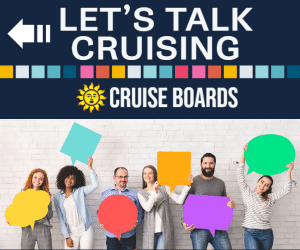
© Copyright 2024 - Cruise Addicts
- Affiliate Disclaimer
- Privacy Policy
- CruiseMapper
- Ships and Lines
Cruise Ship Cruising Speed
How fast is a cruise ship, which is the fastest cruise ship in the world? Read all about the cruise ship speed (average/top cruising speed) which is generally measured in knots, but also in mph/kph. This page is integrated with our surveys on ship dimensions , ship propulsion/engines, power and our cruise tracker (current positions).
How fast is the fastest cruise ship in the world?
Cunard Line 's Transatlantic liner RMS Queen Mary 2 (QM2) weighs almost 151,500 tons, with a cruising speed of 29 knots (33,5 mph / 54 kph). This unique vessel is the only currently operational Atlantic Ocean liner crossing weekly the huge distance between Southampton (Great Britain's maritime capital) and NYC New York USA (world's financial capital). The below photo shows an engine room telegraph (aka engine order telegraph or Chadburn). This device was used on older ships and submarines for communication between Navigation Bridge and Engine Room, where crew powered the vessel at certain (fixed) speeds.
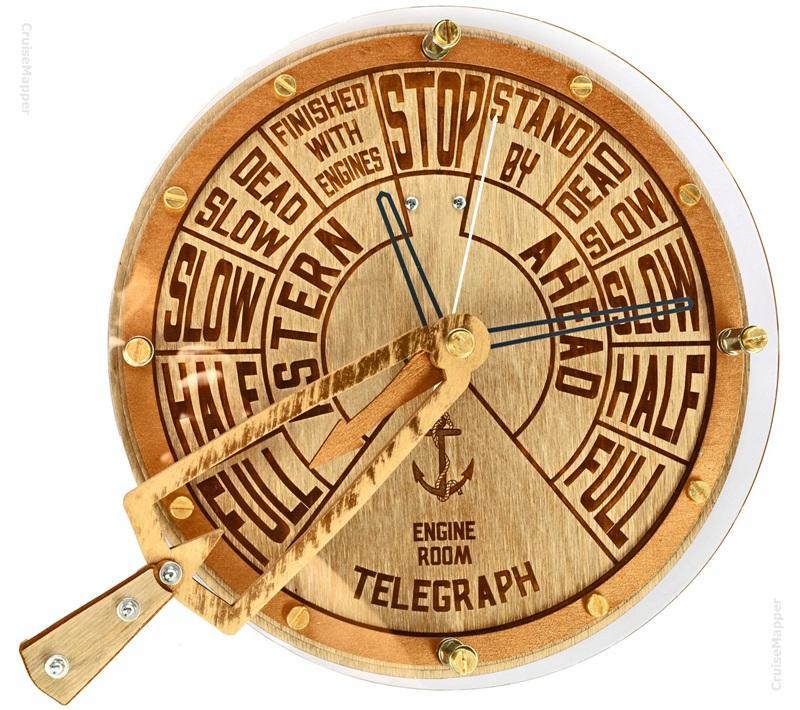
QM2's Transatlantic crossing distance is almost 3,000 nautical miles, or ~3,400 statutes/normal miles (5,500 km), and this is done in less than 7 days. The world's most famous ocean liner (maybe after RMS Titanic ) has an exterior deck space of 14,200 m2 for passengers to enjoy the "fastest sea ride" ever, and, of course, transparent windscreens to shield them at the high speeds.
The world's second-fastest cruise ship is MS Voyager (last named Costa Voyager ), now owned and operated by a Chinese company. Liner's service speed is 28 Kn (32 mph - 51,5 kph). But there's a trick - this vessel weights just 24,400 tons. In comparison, the world's largest cruise ships - Royal Caribbean's Oasis-Class (nearly 225,300 tons each) cruise with an average speed of 20 knots (23 mph / 37 kph) and can go with "top speed" 22,5 Kn (26 mph / 42 kph).
The world's third-fastest cruise ship is P&O Oriana (now Piano Land) . In 1997, it won the "Golden Cockerel" award for being the company's fastest vessel - accomplishing a maximum cruising speed of 26,2 Kn (31 mph / 50 kph).
Cruising Speed
By definition, the term "cruising speed" signifies the speed for any vehicle (could be cars, ships, aircraft) and it's usually about a speed somewhat below the maximum (as specified by the manufacturer) that is comfortable, but also economical.
Generally, modern cruise ships don't have to be fast - it's not necessary at all. Instead, the new cruisers' demand is for big vessels (as tonnage and passenger capacity), stable and safe (related to propulsion and generators), comfortable, regular as departures, excitingly thrilling as to onboard activities and amenities, and also alluringly tempting as itineraries. And the latest trend is cruise ships also must be more and more fuel-efficient.
For bigger ships, the optimum cruising speed is 20-22 Kn (23 mph / 37 kph). Bigger passenger ships have a large draft (the "invisible" part of the vessel, beneath the waterline), which causes huge resistance and hampers "fast and furious at sea" performances. In return for it, drafts of 23-30 ft (7-9 m) allow smooth rides when traveling even with 25-27 mph (over 40 kph). The vessel's close to top speed cruising is generally used when avoiding storms (especially during the Caribbean summers), during tests, and sometimes when assisting other vessels.
The speed of cruise ships is measured in knots (Kn), 1 knot is 1 nautical mile per hour. Cruise help - for the "normal" speed values, multiply knots by 1,15 (mph), or 1,852 (kph). Below, you may compare the average passenger ship speed in the huge fleets of several big cruise ship companies and lines.
The knot is a nautical term, meaning cruising one hour the distance of one nautical mile. And one nautical mile (by the contemporary world standards) equals 1,15 statue (or "land") miles (6,080 "modern" feet) or 1,852 kilometers. So, to convert the speed values of ships (and riverboats, and of whatever floats) simply multiply knots by the above constants. Worldwide, the knot speed measuring is also used in meteorology and air navigation.
Cruise ship speed (knots to mph/kph conversion)
Speed of cruise ships in knots (kn), miles per hour (mph) and kilometres per hour (kph).
The cruise ship top speed is 2-3 knots higher than its service speed, and it's required rarely - in cases of emergencies (to avoid storms or on rescue operations) and during tests. The average speed of cruise ships is about 20-24 knots. But if you really need the details - well, enjoy the data from our table!

Cruise Ship Speeds or How Fast Do Cruise Ships Go? 7 Popular Cruise Ships Compared
Cruise ship speed typically has an average cruising speed between 20 and 25 knots (23-29 mph or 37-46 km/h) . Some of the fastest cruise ships, like the Queen Mary 2, can reach speeds of up to 30 knots (34.5 mph or 55.5 km/h) . It’s important to note that these speeds are not constant, as they can fluctuate depending on the factors mentioned above.
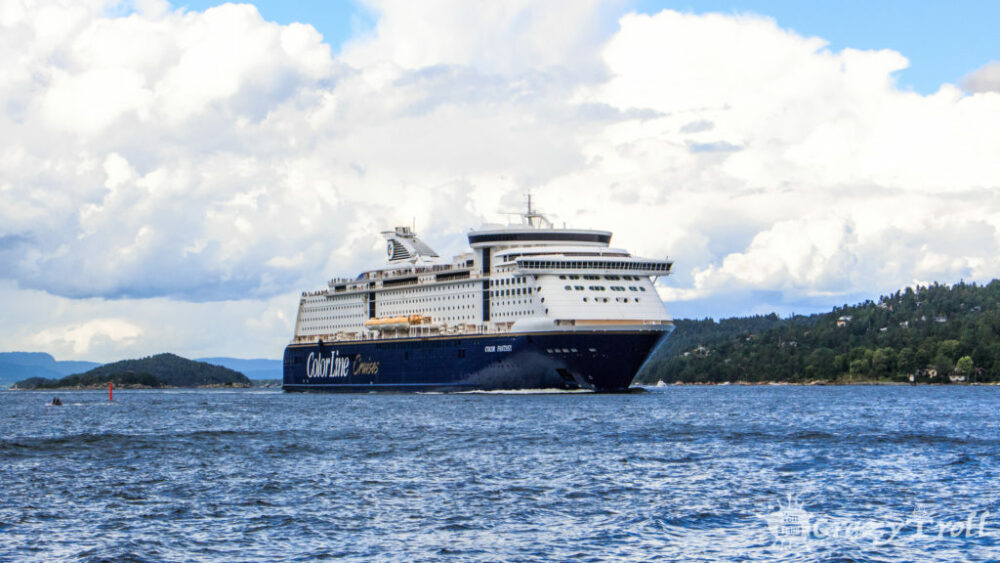
Average Speeds of Popular Cruise Ship Models
Other modern and notable cruise ships with impressive speeds include:
- Harmony of the Seas – This Royal Caribbean ship is one of the largest cruise ships in the world and can reach speeds of up to 22 knots (25 mph or 41 km/h) . As a flagship of the company, it is known for its innovative design, diverse entertainment options, and environmental initiatives.
- Norwegian Bliss – Belonging to the Norwegian Cruise Line, the Norwegian Bliss can achieve a top speed of 23.2 knots (26.7 mph or 43 km/h ). It is a flagship vessel offering a wide range of amenities, including the largest race track at sea and a stunning observation lounge.
- MSC Meraviglia – MSC Cruises’ MSC Meraviglia can travel at speeds of up to 22.7 knots (26.1 mph or 42 km/h) . This ship is known for its cutting-edge technology, environmentally friendly features, and impressive entertainment options, including the world’s first Cirque du Soleil at sea.
- Carnival Vista – The Carnival Vista from Carnival Cruise Line can reach speeds of up to 23 knots (26.5 mph or 42.6 km/h) . As the flagship of the fleet, it boasts unique features like an IMAX theater, a SkyRide attraction, and an extensive water park.
- Celebrity Edge – This innovative ship from Celebrity Cruises can reach a top speed of 22 knots (25.3 mph or 40.7 km/h) . The Celebrity Edge is known for its revolutionary design, transformative spaces, and luxurious accommodations, setting a new standard in the industry.
- Disney Dream – Part of the Disney Cruise Line fleet, the Disney Dream can achieve speeds of up to 23.5 knots (27 mph or 43.5 km/h) . The ship is designed to provide a magical experience for families, with themed areas, Broadway-style shows, and unique Disney touches throughout.
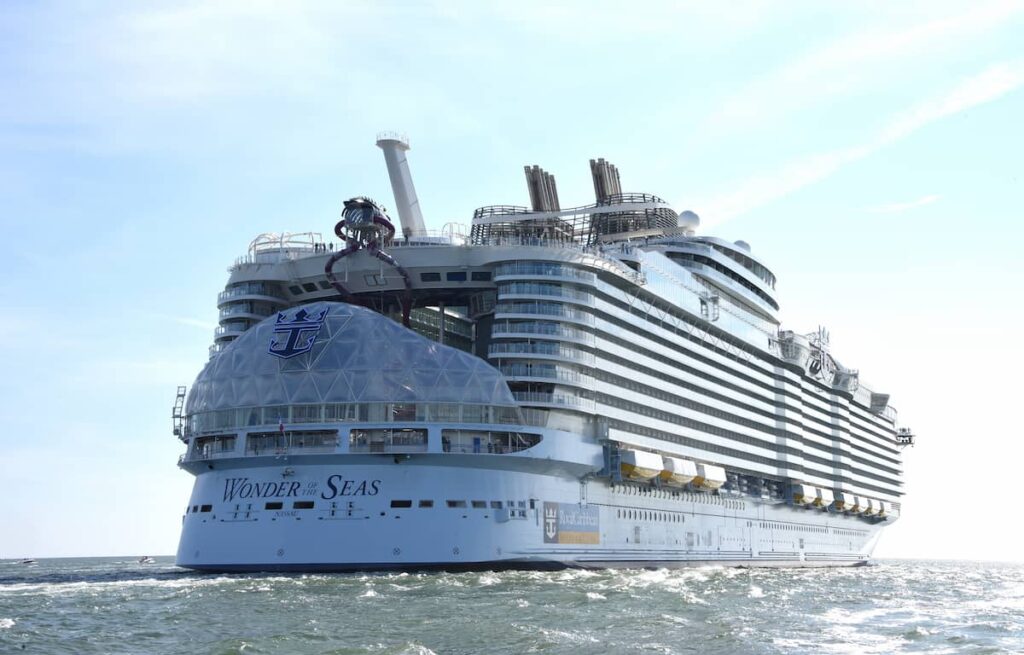
These modern cruise ships showcase the advancements in technology, design, and efficiency that have shaped the industry in recent years. Each flagship vessel represents its respective company’s commitment to innovation, sustainability, and exceptional guest experiences. The speed of cruise ships is much higher compared to cargo ships in most cases travel at speeds from 12 to 16 knots , however, container ships stand out in comparison to cargo ship speeds and can have speeds up to 20 – 25 knots.
When comparing modern cruise ships to historic vessels, it’s interesting to see how far the industry has come. For instance, a comparison of the Titanic and modern cruise ships reveals significant advancements in size , design, safety, and speed over the past century.
To better understand the speeds of various cruise ship models, it’s helpful to know the meaning behind their prefixes. Our guide to ship prefix meanings provides an overview of the prefixes used for different types of vessels.
As you plan your next cruise, it’s essential to consider the ship’s speed and how it may affect your itinerary. For example, if you’re visiting Mexico’s top cruise ports , a faster ship may allow you to spend more time exploring each destination.
Finally, if you’re concerned about motion sickness, it’s crucial to choose a cabin that minimizes the ship’s movement. Our guide to the best rooms on a cruise ship for motion sickness can help you make the right decision for a comfortable journey.
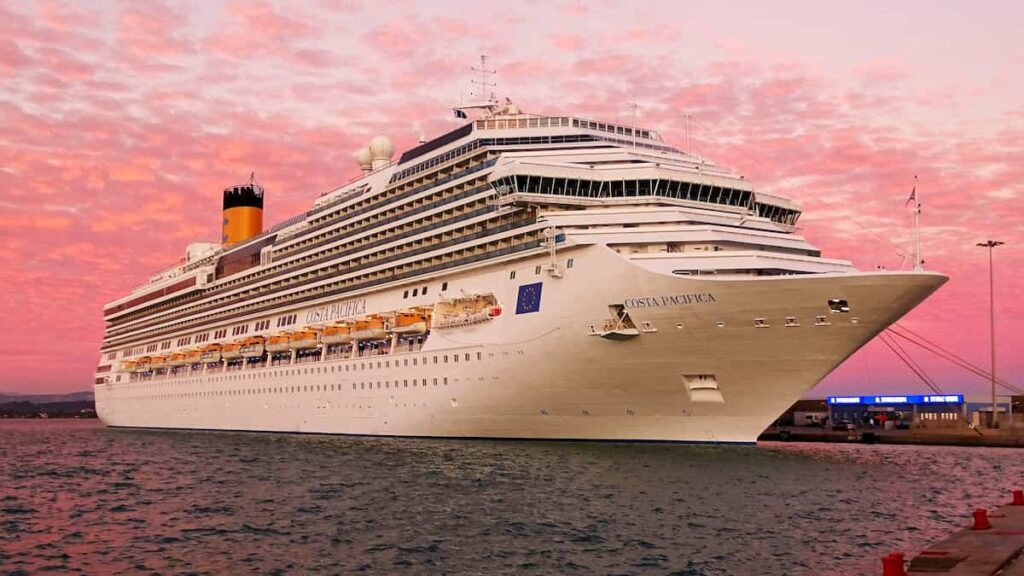
Factors Affecting Cruise Ship Speed
Cruise ship speeds depend on a variety of factors, including the ship’s size, design, propulsion system, and weather conditions. Generally, larger ships are slower due to their increased mass and greater resistance in the water. Weather conditions like strong winds and currents can also have a significant impact on a ship’s speed.
Ship design also plays a critical role in determining a cruise ship’s speed. Modern ships are engineered to optimize hydrodynamic efficiency, reducing drag and increasing overall speed. A ship’s propulsion system, which can vary between traditional diesel-electric engines and gas turbines, can also influence its speed. You can learn more about how these propulsion systems work in our article about cruise ship stability .
Additionally, it’s essential to understand the terminology used when discussing a ship’s speed. Cruise ships’ speeds are often measured in knots. To learn more about what a knot is and how it relates to speed, check out our article explaining how fast a knot is .
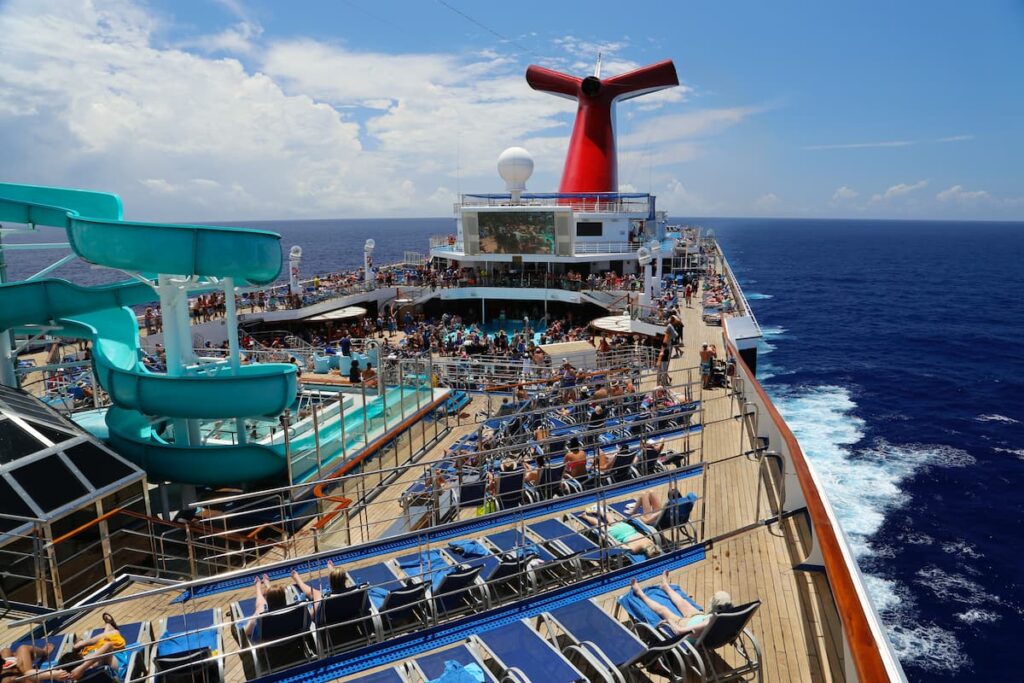
The Importance of Speed in Cruise Ship Travel
The importance of speed in cruise ship travel cannot be understated. It directly impacts fuel efficiency, passenger comfort, and itinerary planning, all of which contribute to a memorable and enjoyable vacation experience for cruise ship passengers.
Fuel Efficiency
Cruise ships need to strike a balance between speed and fuel efficiency. The faster a ship travels, the more fuel it consumes, which can significantly increase operational costs. Cruise lines aim to find the optimal speed that allows them to cover the desired distance in a reasonable amount of time without excessively consuming fuel. Our article on fuel consumption provides a deeper understanding of how fuel usage impacts the maritime industry.
Passenger Comfort
While speed is essential, passenger comfort is also a priority for cruise lines. Ships are designed to minimize the effects of motion sickness by employing advanced stabilization techniques. Furthermore, maintaining a steady and comfortable speed ensures a smoother and more enjoyable voyage for passengers. In comparing the Titanic and modern cruise ships , it’s evident that there have been significant improvements in passenger comfort and safety over the years.
Itinerary Planning
Cruise ship speed plays a crucial role in itinerary planning. Faster ships can cover more distances in a shorter time, allowing them to visit more destinations within a set time frame. However, speed must be balanced with other factors, such as time spent in port, to create an attractive and feasible itinerary for passengers. For example, a faster ship could enable passengers to spend more time exploring the best Mayan ruins in Costa Maya, Mexico , providing an unforgettable experience.
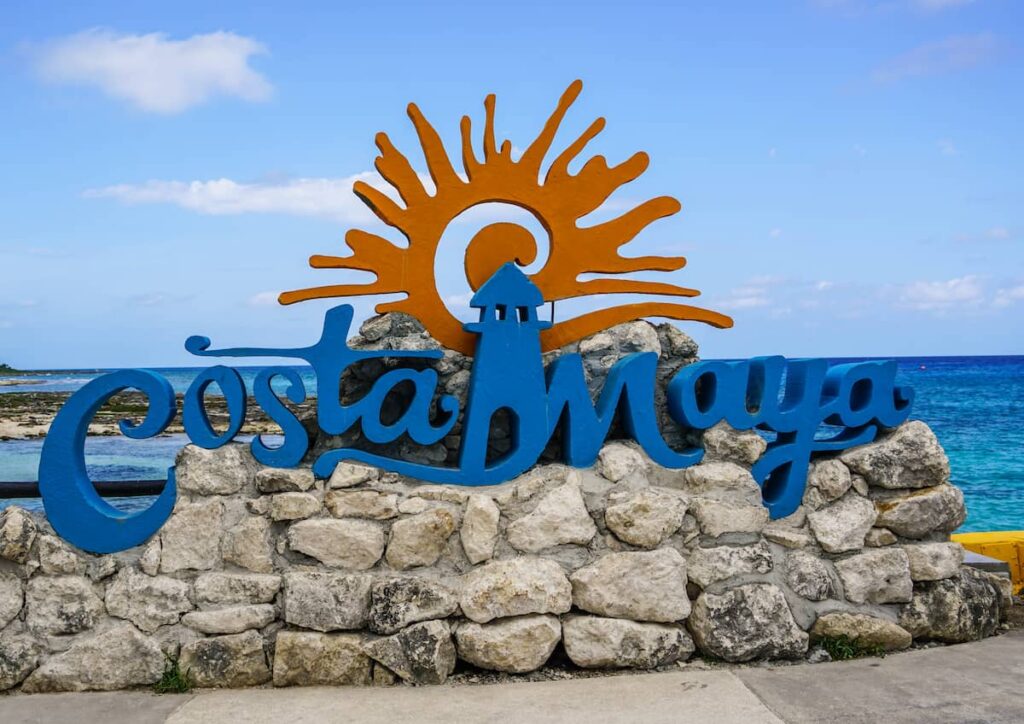
Cruise ship speed is not only essential for large vessels but also for smaller charter boats , such as yachts and sailboats. When planning a vacation, it’s essential to understand the speed capabilities of different types of vessels. Our guide to yacht and sailboat charters in Miami provides insight into the various options available to travelers seeking a more personalized and intimate boating experience.
How Cruise Ships Maintain Their Speeds
Propulsion systems.
Cruise ships use various propulsion systems, such as diesel-electric engines or gas turbines, to generate power and maintain their speed. These systems are designed to be efficient and reliable, ensuring that the ship can maintain a consistent speed throughout its journey. Our article on cruise ship stability provides an in-depth look at the relationship between propulsion systems and a ship’s overall stability.
Stabilization Techniques
To maintain a smooth and comfortable ride, cruise ships employ advanced stabilization techniques. Modern cruise ships use stabilizers , such as fins and gyroscopic stabilizer systems , to counteract the effects of waves and minimize the ship’s rolling motion. These technologies help ensure a steady speed and a more enjoyable experience for passengers.
Advanced Navigation Systems
Cruise ships are equipped with sophisticated navigation systems that allow them to determine the most efficient routes and maintain their speed in varying weather conditions. These systems use GPS, radar, and weather data to help the crew make informed decisions about the ship’s course and speed.
Speed vs. Sustainability
Environmental impact of cruise ships.
While speed is an essential aspect of cruise ship travel, it’s important to consider the environmental impact of these vessels. The faster a ship goes, the more fuel it burns, contributing to air pollution and greenhouse gas emissions. Additionally, high-speed travel can also cause noise pollution and disturbance to marine life.
Innovations for a Greener Future
As the cruise industry continues to grow, there is an increasing focus on sustainability and reducing the environmental impact of these ships. Some innovations include the development of hybrid and electric propulsion systems, the use of cleaner fuels, and advances in the hull design to reduce drag and improve fuel efficiency. These efforts aim to balance the need for speed with the industry’s responsibility to protect the environment, ensuring a more sustainable future for cruise ship travel.
Cruise ship speeds vary based on factors such as size, design, and weather conditions, with average speeds, typically ranging between 20 and 25 knots. While speed is crucial for itinerary planning and passenger comfort, cruise lines must balance this with fuel efficiency and sustainability concerns. As the industry evolves, we can expect to see continued innovation to minimize the environmental impact of cruise ships while still providing a comfortable and efficient mode of travel.

What is the fastest cruise ship?
The Queen Mary 2 is one of the fastest cruise ships, capable of reaching speeds up to 30 knots (34.5 mph or 55.5 km/h).
How do cruise ships maintain their speed?
Cruise ships maintain their speed using propulsion systems, advanced stabilization techniques, and sophisticated navigation systems that help them determine the most efficient routes.
Do cruise ships travel faster at night?
Cruise ships generally maintain a consistent speed throughout the day and night. However, speeds may be adjusted based on weather conditions or other factors.
What is the environmental impact of cruise ship speeds?
Faster cruise ships consume more fuel, leading to increased air pollution and greenhouse gas emissions. High-speed travel can also cause noise pollution and disturbance to marine life.
What innovations are being developed to improve cruise ship sustainability?
Some innovations include hybrid and electric propulsion systems, cleaner fuels, and advances in hull design to reduce drag and improve fuel efficiency.
About the author
I worked as an officer in the deck department on various types of vessels, including oil and chemical tankers, LPG carriers, and even reefer and TSHD in the early years. Currently employed as Marine Surveyor carrying cargo, draft, bunker, and warranty survey.
Leave a Reply Cancel reply
Your email address will not be published. Required fields are marked *
Save my name, email, and website in this browser for the next time I comment.
Latest posts
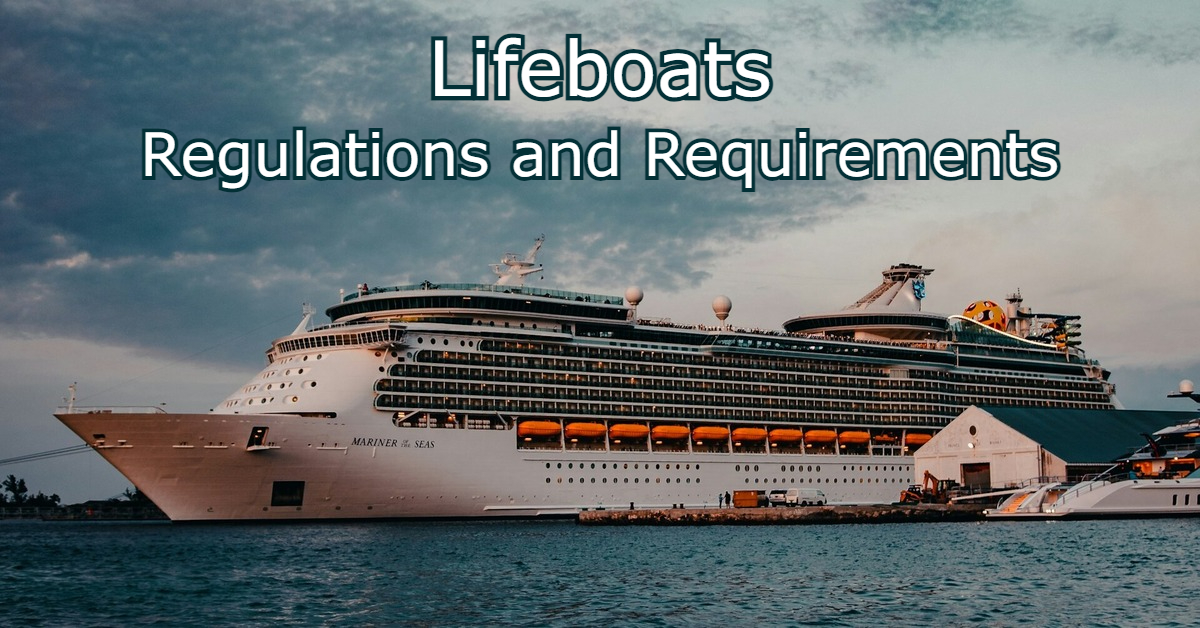
Lifeboats: Regulations and Requirements
In an emergency, portable vessels called lifeboats will get a ship’s occupants to relative safety. So how do lifeboats work?

What Are the Most Common Shipbuilding Woods?
While shipbuilders have switched to other practices, wood still has a place in the maritime industry. The numerous types available mean manufacturers have myriad options, so here’s a guide on shipbuilding woods.

Fiberglass vs. Steel: Which Is More Reliable?
Shipping professionals should get the most from their investment, so which is more reliable: steel vs. fiberglass? Here’s how to determine the better option.

How Fast Do Cruise Ships Go?

If you’ve ever taken a cruise or are planning one in the future, you might wonder, how fast do cruise ships go?
The average cruise ship travels at 20kts (Knots) between ports.
Introduction
Figuring out how fast cruise ships go goes hand in hand with learning all about cruise ship travel. Exploring how cruise ships operate teaches us all about the speed of a cruise, the differences between ship types, and general marine travel.
In short, the cruising speed of a ship dramatically depends on the ship’s size and design. The ship’s structure will determine how it burns fuel and how it navigates changing ocean conditions, all of which affect its speed.
The ship’s speed also depends on the cruise itinerary. A cruise ship needs to get to the next port on time, not early or late. So ships don’t always travel at their standard service speed.
Below, we answer all of your questions on speed and cruise ships. We’ll talk about the different variables that affect speed and see how cruise ships compare to other ocean-going vessels.
So, if you’re interested in how cruise lines operate and what affects ship speed, keep reading.
Do Cruise Ships Travel Faster at Night?
It’s a common misconception that cruise ships travel faster at night than during the day. This is probably because cruise ships slow down as they enter and leave ports. Since most cruise ships only enter or leave ports during the day, it can seem like they travel faster at night.
What Affects Speed on Cruise Ships
In reality, how fast cruise ships go has little to do with the time of day and more to do with fuel efficiency, weather, the ship’s schedule, and passenger comfort.
Fuel Consumption
Cruise ships have better fuel economy at certain speeds, and for both environmental and financial reasons , many cruise liners make fuel savings a priority. So, the speed of a cruise often depends on what is most fuel-efficient.
Weather Conditions
Wind and weather forecasts both play a role in how fast a cruise can travel. If the wind is working against the boat, it may slow it down.
Also, if the weather forecast predicts a major storm, the captain may decide to speed up to outrun the bad weather.
Cruise captains maintain speed to get them to port on time, not too early or too late. Ports typically charge by the hour so getting there early is costly. At the same time, cruise ships have a schedule they need to keep.
Passenger Comfort
Cruise ship speed also affects passenger comfort. Going faster can lead to a bumpy ride as faster speeds pull more of the hull out of the water. Since giving passengers a comfortable ride is vital, it’s unlikely that a captain would increase the speed unnecessarily.
However, if a passenger has a medical emergency and needs to reach the nearest port, the captain may choose to take the cruise ship to top speed.

What Is the Speed of the Fastest Cruise Ship?
Finding the fastest cruise ship isn’t as straightforward as you may think.
Cruise ships rarely travel at top speed. Instead, they stick to their cruising speed, which benefits fuel consumption and makes for a smoother ride. They typically only travel at top speed during sea trials when there are no passengers and burning more fuel isn’t a concern.
So, how is the top speed of a cruise ship measured?
They use an average based on the ship’s sea trial.
Sea trials are part of the safety tests that cruise ships undergo before their maiden voyage. During sea trials, the ship will have to test its maximum speed.
However, water conditions, bad weather, and several other factors can affect cruise ship speed on any particular day. So, the same ship might register two different top speeds if we were to give it trials on two separate days.
The Knot and the Nautical Mile
Before going any further, it’s crucial to understand how speed is measured on water.
“Knots” means nautical miles per hour. One nautical mile is different from one land mile. One land mile is 5,280 feet, while one nautical mile is 6,076 feet. So, to convert knots or nautical miles per hour to land miles per hour, you have to add 15% to the land mile.
Cruising Speeds and Top Speeds
The fastest cruise ships can reach a top speed of thirty knots. Thirty knots is fast for a ship, and most cruise ships never travel at it. Instead, they travel at their cruising speed.
The speed of a cruise on a Royal Caribbean Cruise ship, for example, is 18-20 knots. And most other cruise lines have an average speed of between 19 and 22 knots. For perspective, a 20-knot average cruising speed is the same speed as 23 miles per hour on land.
The Fastest Ship
Given how large cruise ships are, an average ship’s speed of 20 knots is pretty impressive. However, there are some much faster passenger vessels on record.
For example, the SS United States could make an Atlantic crossing at 35 knots! That’s a speed equal to forty miles per hour on land. The SS United States is retired now, but it still holds the record for the fastest ocean liner.
How Fast Does Queen Mary 2 Go?
When we hear someone ask “how fast do cruise ships go?”, the Queen Mary 2 always comes up. The Queen Mary 2 is the fastest ocean liner currently in service. It has an average speed of 28.5 knots but a maximum speed of 30 knots.

Traveling on the Queen Mary 2
The Queen Mary 2 can make a transatlantic crossing in five days at its top speed. However, it usually sticks to its average cruising speed and makes the trip in seven days.
The Queen Mary 2 is an impressive vessel. It’s the biggest ocean liner ever to set sail, weighing 149,215 tons and measuring 1,132 feet long. That’s twice as long as the Washington Monument is tall!
Traveling for Pleasure vs. Traveling for Transportation
Though the Queen Mary 2 carries passengers and has many features similar to a cruise ship, like a theater, spa, and nightclub, it’s not exactly a cruise ship. It’s an ocean liner. Technically, cruise ships are for pleasure, while ocean liners are for transportation.
While a cruise ship will take you to specific cruise destinations, it usually ends where it began. If your cruise ship travels from Port Canaveral, it will head back there at the end of the trip.
Ocean Liner Differences
Ocean liners transport passengers to a new location. The Queen Mary 2 , for example, will take you across the Atlantic from the US to Europe.
Ocean liners tend to have greater traveling speed because they’re built with transportation in mind. Besides being designed for maximum speed, ocean liners also have a few other key differences.
They tend to have a longer, pointed bow that helps them navigate high rising ocean waves. They also have an extra thick hull to maintain stability in rough conditions.
All of this allows ocean liners to navigate open waters more efficiently than cruise ships. So, an ocean liner’s cruising speed and top speed will always be greater than the speed cruise ships sail.

Can a Cruise Ship Go In Reverse?
Yes, a cruise ship can go in reverse. Of course, putting a massive cruise ship in reverse is a bit different than backing up your car.
How Thrusters Work
Cruise ships typically have bow thrusters that sit along the ship’s bow and are essentially locked in position. These help power the ship but don’t do much to help steer it.
Most ships also have two or three Azipods. Azipods consist of a pitched propeller mounted within a steerable pod. The pod can turn the propeller a full 360 degrees.
Typically, the Azipods all point in the same direction, towards the ship’s stern, which propels the ship forward. However, captains can adjust the amount of thrust and the direction of each pod, allowing the vessel to turn or even travel in reverse.
By using the Azipods and bow thrusters together, cruise ship captains can easily navigate ports and other tight areas that cruise ships travel.

How Fast Do Wooden Ships Go?
Asking how fast do cruise ships go might make you wonder how they compare to the wooden boats of yore. Wooden ships didn’t have nearly the same maximum speeds as modern ships.
Wooden Ships vs. Modern Vessels
A fast wooden ship had a service speed of between 13 and 17 nautical miles per hour. The USS Constitution , for example, capped out at 13 nautical miles per hour. Meanwhile, the famous Cutty Sark reached a top speed of 17.5 knots.

Today’s cruise ships are capable of far faster speeds, thanks to huge advancements in technology. As a result, an average large cruise ship travels at cruising speeds greater than the maximum speed of a historical wooden vessel.
How Fast Do Sailing Boats Go?
Sailing boats come in various forms, and each of them has a different max speed. Usually, sailboats are much smaller ships than cruise ships, and they rely on the wind to power them, so they tend to move at a slower pace.
A racing sailboat can reach up to 15 knots, but a regular sailboat moves at much slower speeds, usually only 4 to 6 knots.

So, How Fast Do Cruise Ships Go?
In truth, a cruise ship’s speed depends on the design of the ship, the itinerary, and the weather. But in the end, the average cruise ship speed doesn’t matter much, as long as the ship makes it to its next scheduled port on time and the captain keeps passenger comfort in mind.
Suggested Reading:
- 68 Memorable Sea Quotes For Ocean Lovers (2022)
- What Exactly Does An Upside Down Pineapple Mean?
Similar Posts
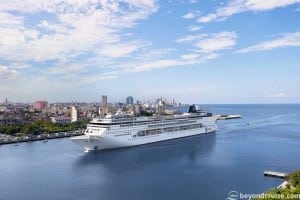
MSC announces Tampa as new homeport for ship in 2020
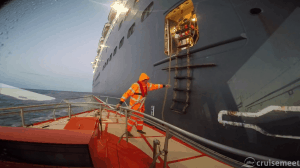
Watch harbour pilots disembark from Queen Mary 2

Queen Victoria 2017 refurbishment plans
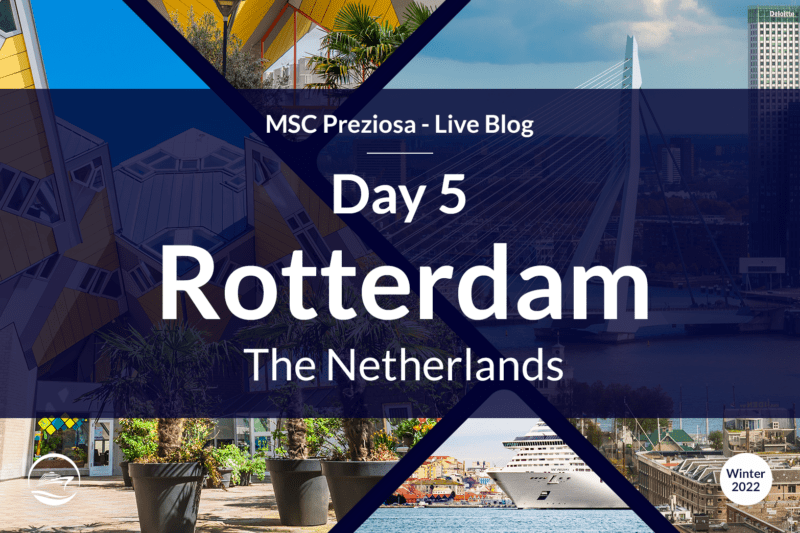
MSC Preziosa Live (2022) – Day 5 Rotterdam
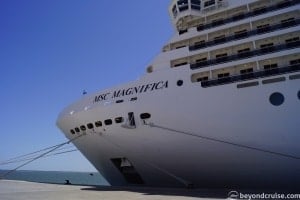
MSC Magnifica 14-night voyage – Full Daily Programs

Day 6 – Cadiz, Spain

Ship Speed: How Fast Does a Cruise Ship Go?

If you’ve ever sipped a beverage on a sun-kissed deck, you’ve probably wondered, “ How fast does a cruise ship go ?” It can’t be denied that a lot of concepts surrounding cruise ships can both excite and intrigue many of us. But let’s get real, the romance of the high seas and the unlimited buffet isn’t our only curiosity.
The purpose of this fun-filled piece? Well, we’re sailing full speed ahead into the captivating world of top-speed cruise ships and ship velocity. Yes, you heard it right! We’re set to answer that million-dollar question – just how swiftly do cruise ships carve their way through the waters? Strap on your lifejackets, folks. It’s time to dive deep into the world of nautical numbers and seafaring speed!
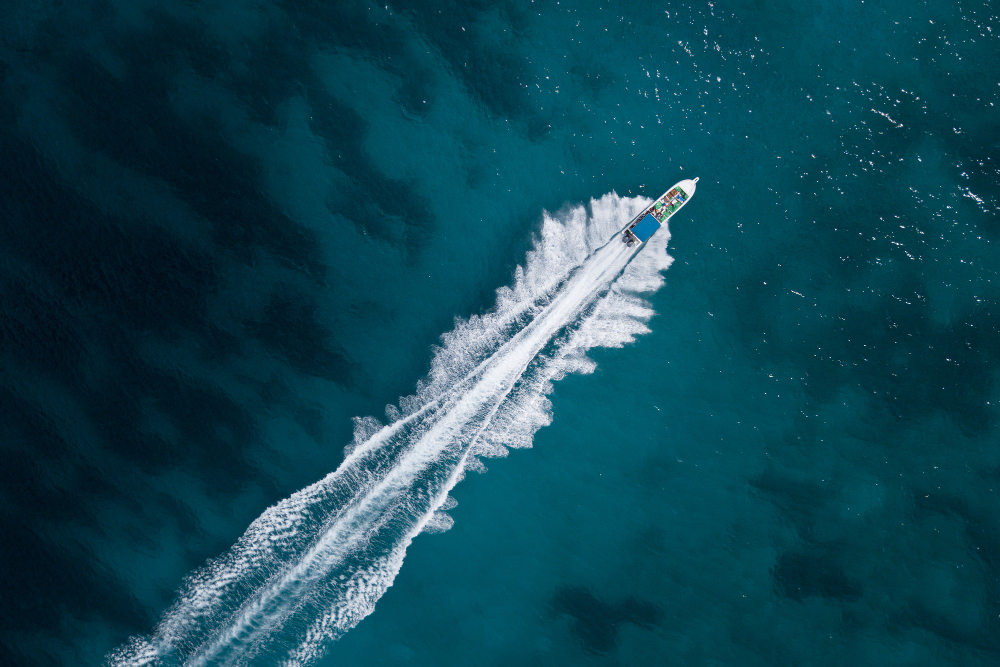
Understanding Ship Speed
Before we start, it’s essential to understand that the speed of ships is measured differently than we’re used to on land. Instead of miles per hour, sailors use nautical miles and knots.
A knot is just another way to measure speed. One knot equals one nautical mile per hour . To put that into perspective, one knot is about 1.15 regular miles per hour (the speed measurement we use on land). So, when you’re comparing speed in different contexts—on land, air, or sea—remember that the units of measurement aren’t the same. Learning about this is your first-class ticket to the nautical lingo club.
How Fast Does a Cruise Ship Go?
Now that you know the concept of ship speed, let’s dive into the meaty bit — how fast do cruise ships go? Most modern cruise ships — from the dazzling Royal Caribbean vessels to your everyday ocean liners — glide through the seas at an average speed of about 20-30 knots . That’s roughly 23-34 mph on land. Yep, that’s slower than your average bicycle race, but hey, we’re on holiday, right?
Now, the speed of most cruise ships isn’t just a “one knot fits all” deal. Several factors affect the average cruise ship speed. Everything from the ship’s design, the weather (rough seas require slower speeds), and even fuel efficiency come into play. It’s a delicate dance, or should we say, a well-coordinated sea shanty of factors that keeps these vessels smoothly sailing to your next port of call.
Comparison of Speeds of Different Cruise Ships

Let’s look at our cruise ship heavyweights: Royal Caribbean , Carnival Cruise Line, Norwegian Cruise Line, and the rest of the maritime band.
Royal Caribbean’s grand fleet, despite its majestic size, generally maintains a comfortable, fuel-efficient cruising speed of about 18-20 knots . Not bad for a floating city, eh? Carnival Cruise Line’s fun ships aren’t far behind, averaging around 21 knots . A snail’s race, but a race nonetheless!
As for our friends at Norwegian Cruise Line, they are typically cruising at a maximum speed of around 24 knots . It’s not really about going fast, but more about a relaxing journey on the ocean.
How Cruise Ship Speed Affects Itinerary

So, here’s the scoop on how speed affects your itinerary on the high seas.
You see, the speed of a cruise- ship’s speed top isn’t just about how fast it can zip from Miami to the Bahamas. It’s a delicate balancing act between ensuring you reach your next exciting port on time and providing a smooth and enjoyable journey. If your cruise ship decided to mimic a speedboat, well, let’s just say that poolside margarita might end up in your lap instead of your mouth. Not quite the vacation memory you were hoping for, right?
Cruise lines are expert jugglers, managing this balance with the finesse of a seasoned trapeze artist. They map out itineraries that mix scenic slow cruising (perfect for soaking up sunsets) with necessary bursts of speed to keep up with the schedule. In essence, they’re trying to maximize your time exploring fantastic ports and minimize the time you’re asking, “Are we there yet?”
The moral of the story? No need for ludicrous speed on the love boat. Your cruise is about the journey, not just the destination. After all, the only race on a cruise should be the one for the last deck chair!
Speed Constraints: Why Do Cruise Ships Travel at a Slower Speed?
Now, you might be asking, “Why don’t cruise ships just crank up the speed and zip us straight to paradise?” Well, I hate to break it to you, but it’s not all about you! There’s a method to the maritime madness.
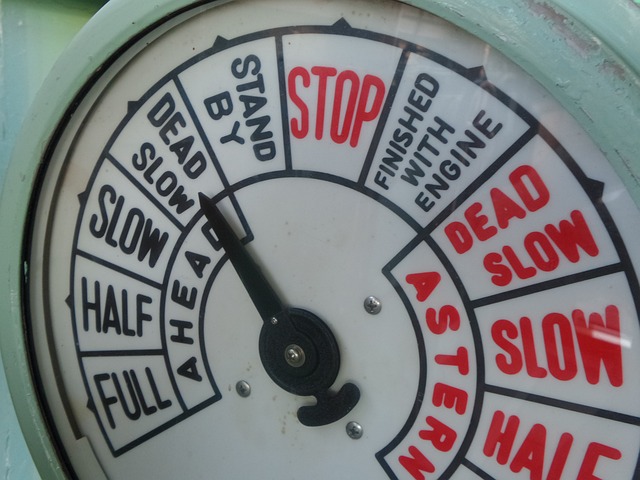
Our nautical buddies, the cruise ships, have to play nice with Mother Nature and Uncle Sam. You see, environmental factors such as wind, waves, and weather that affect cruise ship speed can mean it’s safer and more comfortable (nobody wants seasickness!) to slow things down a notch. Imagine trying to navigate through rough seas at top speed – even the sturdiest of cruise ships could start feeling like a cork bobbing in a bathtub!
Plus, there are all sorts of fun legal and safety constraints. Speed limits in certain areas protect marine life (you wouldn’t want to upset the dolphins, would you?) and help prevent accidents. And let’s not forget fuel efficiency . High speeds guzzle more fuel, which is bad for both the environment and the cruise line’s pocket.
So, while cruise ships may not always be setting speed records, remember they’re prioritizing smooth sailing and keeping Flipper and his friends happy. And really, who can argue with that?
What Are the Fastest Cruise Ships?
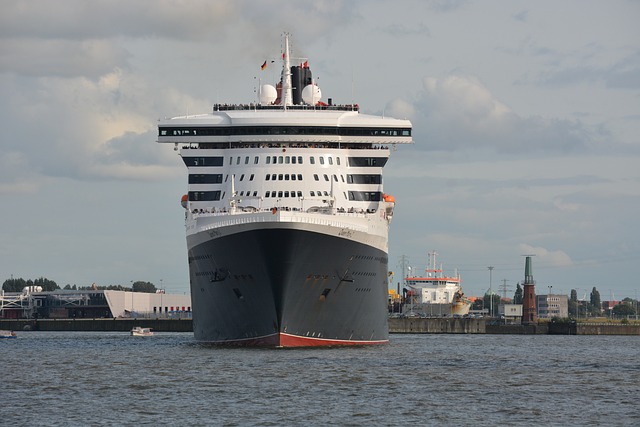
First up, let’s pay our respects to the fastest cruise ship of the Queen – Queen Mary 2 , that is. This ocean liner (technically not a cruise ship, but who’s counting?) holds the title for the fastest passenger ship, capable of speeds up to a staggering 30 knots. If you’re late for high tea in England, she’s your best bet.
Now, among the bona fide cruise ships, the ‘Need for Speed’ award goes to Cunard . These ships, while known for their entertainment offerings and sheer size.
They aren’t just about speed though. They are loaded with features to enhance passenger comfort, from stabilizers to reduce roll in rough seas, to high-tech navigation systems, and let’s not forget the zip lines and surf simulators for when you tire of the shuffleboard.
Innovations and Future of Cruise Ship Speed
Now, let’s take a futuristic glimpse at the world of cruise ship speeds. With new technological advancements popping up faster than the bubbles in your average cruise ship with champagne, the horizon of cruising speed is set for a shakeup.

For starters, we are seeing the dawn of a new era with the introduction of LNG-powered engines. These bad boys not only have the potential to rev up the ship’s speed, but they also come with added environmental brownie points for reduced emissions.
Speaking of innovative design enhancements, have you heard about the hull design tweaks ? Scientists, engineers, and what I can only assume are maritime magicians working on optimizing hull shapes to reduce water resistance and hence increase ship speed. Yes, folks, we’re talking about cruise ships potentially sporting the marine version of aerodynamic curves. Picture the fastest cruise ship with a sleek figure like a runway model, if you will.
But while we’re pushing boundaries in speed, we’re also eyeing efficiency and sustainability. Future cruise ships are likely to feature cutting-edge environmental protection and fuel-saving systems. So, we’re striving for a future where your modern cruise ship doesn’t just take you places fast but also does it while giving Earth a friendly nod.
To sum it up, the future of cruise ship speed is looking just as bright and promising as the neon dancefloor on the disco night of your cruise.
Alright, my fellow cruise ship enthusiasts, let’s wrap this up. So, the need for speed on the high seas isn’t just about getting you to the buffet faster. Rather, it’s a delicate ballet of factors, from hull design to ocean currents, and even those legal regulations.
Our beloved floating resorts aim to strike a perfect balance between getting you to your next margarita and ensuring you don’t spill it in the process. It’s about harnessing the power of modern vessels and also ensuring smooth sailing with an emphasis on comfort and efficiency.
The moral of the story? Fast or slow, just remember, the true joy of cruising isn’t just about how quickly you get there, but rather the journey itself – preferably with a tropical drink in hand!
How fast do Royal Caribbean ships go?
Ah, the Royal Caribbean , they’re not just royal by name, but also by speed. On average, the Royal Caribbean cruise ships go a comfortable pace of about 18-21 knots. But remember, this can fluctuate based on factors like weather, ocean conditions, or if the captain’s late for his tea time.
How far can a cruise ship travel in 24 hours?
Well, if we stick to the average cruising speed of about 20 knots, which is roughly equivalent to 23 miles per hour, cruise ships go about 550 nautical miles in 24 hours. However, don’t start packing your bags just yet, as actual distances can vary depending on multiple factors.
Who has the fastest cruise ship?
The cheetah of the cruise ship Savannah is none other than the SS United States. She roars across the waves at a speed of nearly 38 knots. But remember, she’s more of an ocean liner than a traditional cruise ship.
What is faster a cruise ship or a car?
While your car could easily leave a cruise ship in its wake on land, in the open ocean, it’s a whole different ball game. On average, cars can go about 60-70 miles per hour, while cruise ships go around 20-30 miles per hour. But, remember, while your car may win the speed race, it definitely can’t match the luxury of a cruise ship. After all, does your car have 24/7 room service and nightly shows? I didn’t think so.
Digital Marketer
I’m Bobby Pham, but you can call me “Bobby on Cruise.” I’ve been cruising the high seas and exploring the world for years, and I’m thrilled to share my passion and expertise with you. When not cruising, I spend my time on growing my marketing agency.
About FunkyCruise

How fast do cruise ships go: Unraveling the Speed Secrets of Cruise Ships
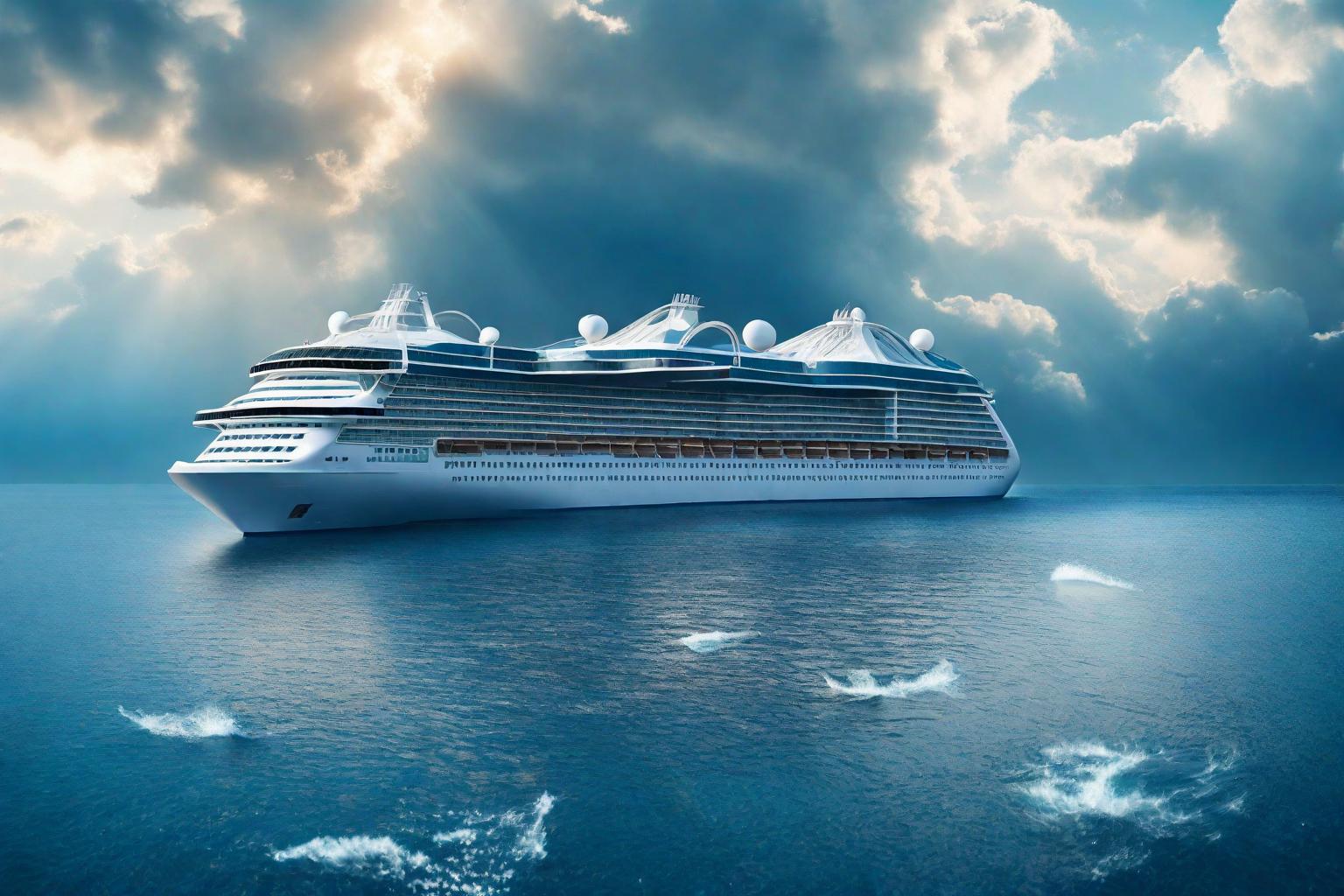
Have you ever wondered, “How fast do cruise ships go?” or “How far can a cruise ship travel in a day?” Setting sail on a cruise is an exhilarating experience, with the vast ocean expanse unfolding before you. Join us as we embark on a deep dive into the captivating realm of cruise ship speeds, uncovering the technological marvels that propel these ocean giants and exploring examples from renowned cruise lines.
1. Cruise Ship Speed Basics:
When picturing a cruise ship, images of leisurely voyages across calm waters often come to mind. But have you ever wondered how fast these massive vessels actually travel? Let’s dive into the basics of cruise ship speed:
Measuring Speed:
Cruise ship speed is typically measured in knots , which are nautical miles per hour (1 knot = 1.852 km/h). Unlike land vehicles with speedometers, cruise ships rely on a log to measure speed. This log throws a line with a weighted impeller attached, and the speed is determined by the number of rotations per unit time.
Average Speed:
The average cruise ship travels at a speed of around 20 knots (23 mph) when cruising. However, this can vary depending on several factors:
- Ship Size and Design: Larger ships often have more powerful engines, allowing for higher speeds. Newer ships also tend to be more aerodynamic and efficient, contributing to faster cruising speeds.
- Weather Conditions: Rough seas and strong winds can significantly slow down a ship. Cruise lines typically adjust speed to ensure passenger comfort and safety.
- Itinerary: If a cruise has multiple ports of call close together, the ship may need to travel faster to maintain the schedule. Conversely, cruises with longer stretches at sea might cruise at slower speeds for fuel efficiency and a more relaxed atmosphere.
- Fuel Efficiency: Cruise lines are increasingly focused on reducing fuel consumption and emissions. Newer ships often have features like optimized hull designs and advanced propulsion systems that allow for efficient cruising at lower speeds.
Maximum Speed:
Most modern cruise ships have a maximum speed of around 30 knots (34.5 mph) . However, they rarely reach this speed due to the factors mentioned above. Exceeding cruising speed can also be uncomfortable for passengers due to increased vibration and noise.
2. Notable Cruise Line Examples:
Let’s take a closer look at the speed prowess of some notable cruise lines:
- Royal Caribbean’s Oasis Class: Despite their massive size, ships like the Oasis of the Seas can achieve speeds of up to 22 knots.
- High-Speed Ferries: Smaller vessels, resembling cruise ships, but categorized as high-speed ferries, can surpass 30 knots.
- The fastest cruise ship in the world, the Royal Caribbean International’s Anthem of the Seas , can reach a top speed of 42 knots (48.6 mph). However, this is only used in emergency situations.

3. Propulsion Systems at Play: Cruise ships utilize diverse propulsion systems for efficient navigation. These include:
- Diesel-Electric Propulsion: A prevalent choice in modern ships, offering flexibility and fuel efficiency.
- Azipod Propulsion: These innovative podded units contribute to both maneuverability and speed.
- Gas Turbines: Some cruise liners incorporate gas turbines to bolster power output during instances demanding higher speeds.
4. Safety Prioritization: Safety takes precedence over speed in the cruise industry. Considerations such as weather conditions and the imperative for smooth navigation dictate captains’ decisions regarding cruising speeds.
5. Navigation Precision: Cruise ships deploy advanced navigation technologies, including GPS, radar, and sonar systems, ensuring precise maneuvering even at elevated speeds.
6. Daily Distance Covered:
The daily distance covered by a cruise ship can vary significantly depending on several factors, including:
Cruising speed: As mentioned previously, the average cruise ship travels at around 20 knots (23 mph) when cruising. However, this can range from 15-30 knots depending on the factors discussed earlier like ship size, weather, and itinerary
Itinerary: The planned route and number of ports of call significantly impact daily distance. Cruises with multiple close-by ports might cover shorter distances daily, while those with longer stretches at sea or farther-flung destinations might travel farther.
Duration: Shorter cruises naturally cover less distance per day compared to longer voyages.
Specific examples:
- A 7-day Caribbean cruise with multiple ports might cover around 200-300 nautical miles per day.
- A transatlantic crossing could involve daily distances of 500-600 nautical miles.
- A repositioning cruise between continents might cover even greater distances, reaching 800-1000 nautical miles per day.
Finding specific information:
Cruise lines typically publish itineraries showcasing the ports of call and estimated sailing times. Based on the sailing times and average cruising speed, you can estimate the daily distance. Additionally, some cruise booking websites and online resources provide tools to calculate daily distances based on the chosen itinerary.
Remember, daily distance is just one aspect of your cruise experience. Consider factors like destinations, onboard activities, and overall atmosphere when making your decision.
Cruise ship speeds represent a delicate balance of maritime engineering, combining technological sophistication with a commitment to passenger safety and comfort. As you embark on your next cruise adventure, take a moment to appreciate the engineering marvels that propel you across the seas at a controlled and comfortable pace. Bon voyage!
Here are official links from reputable sources and cruise lines for more information:
- Royal Caribbean – Cruise Ship Speed
- Carnival Cruise Line – Ship Fact
You may also like: Best River Cruise in USA
Leave a Reply Cancel reply
Save my name, email, and website in this browser for the next time I comment.
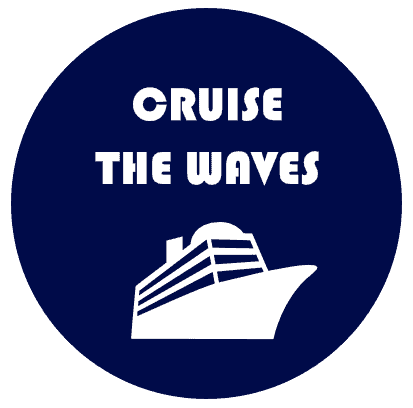
How Fast Do Cruise Ships Go?
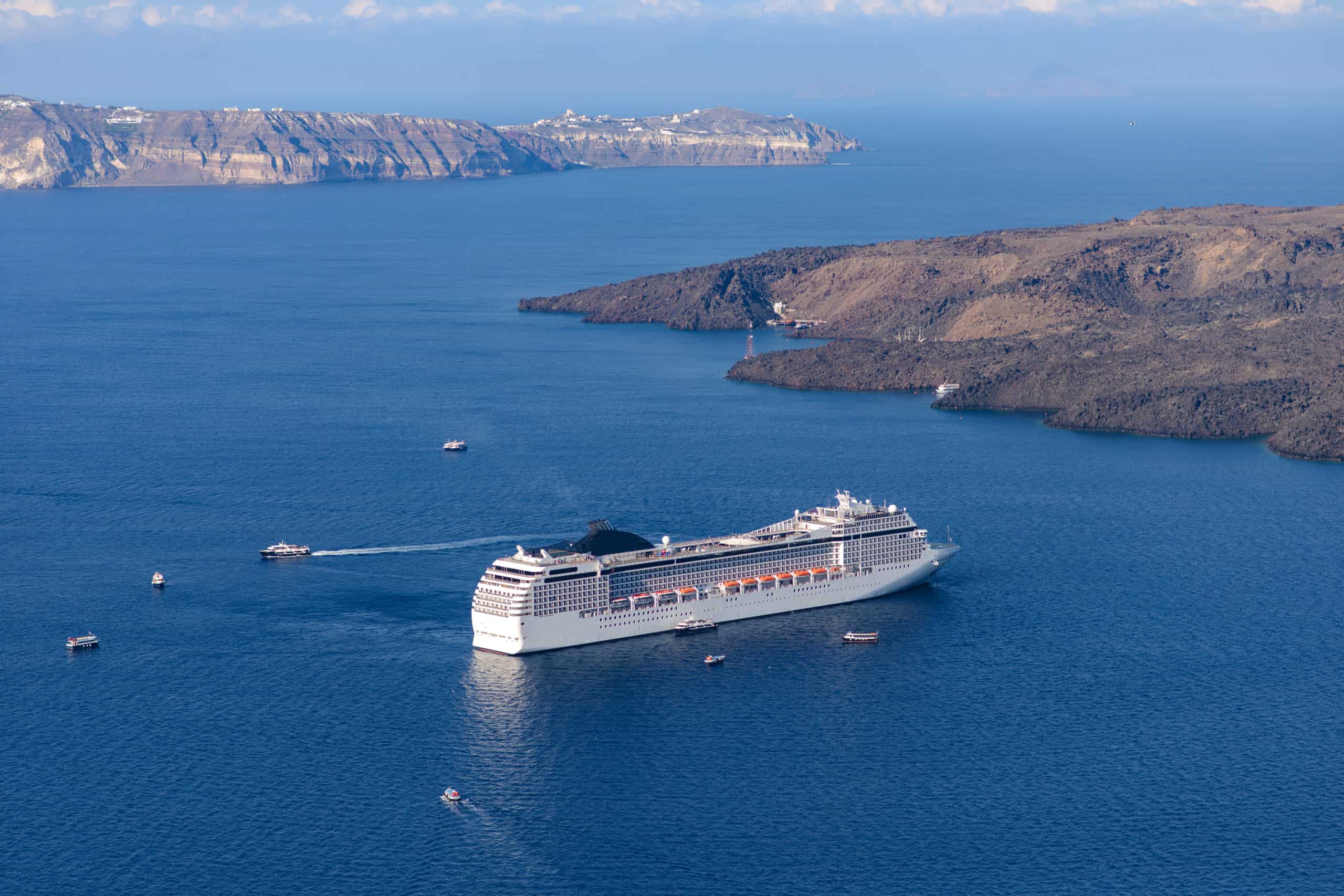
Have you ever wondered how fast a cruise ship actually goes? Check out this article below to find out which cruise ships are the fastest and why.
The average cruising speed for most modern cruise liners is around 14 knots. This means that when traveling under full power, a cruise liner will travel approximately 1 knot faster than what would be considered “normal” or top speed.
The difference between these two speeds depends upon many different variables including:
• Wind conditions
• Sea state
• Current strength
• Water temperature
• Weight distribution
• Hull design
• Engine type
• Fuel consumption
• Power output
• Propulsion system
• Number of passengers and crew onboard
• Length of the vessel
• Size of the vessel
• Speed restrictions in port
• Other factors such as weather, sea traffic, etc.
Cruise Line Top Speeds
Most large passenger ships have an overall length exceeding 500 feet with some reaching over 600 ft. These vessels are capable of achieving speeds up to 20-25 knots depending on their size and configuration. Smaller luxury yachts can reach speeds of 30+ knots while mega-yachts like Royal Caribbean’s Oasis Class ships can achieve speeds of 35+ knots!
What Is Normal Cruising Speed?
Normal cruising speed refers to the maximum speed at which a vessel travels without any additional propulsion systems. Most modern cruise lines use diesel engines to generate electricity for running all major electrical equipment aboard the ship.
In addition, they also utilize electric motors to drive various auxiliary machinery such as air conditioning compressors, elevators, water pumps, refrigeration units, generators, winches, cranes, etc. All of this requires significant amounts of energy.
Therefore, it makes sense to run everything possible during normal operation so that there isn’t excess fuel being burned just sitting idle. For example, if you’re sailing from Miami to San Juan, Puerto Rico, your boat may not need to make more than 10 knots because you’ll only be going about 100 miles per day.
However, once you get into international waters, then you might want to consider making 15 knots since you could potentially cover thousands of nautical miles each week. If you were planning on taking a trip across the Atlantic Ocean, then you’d probably want to plan on setting sail at night time when winds tend to be stronger and seas calmer. You wouldn’t want to set off during high wind season when waves are higher and currents are much slower.
How Does Size Affect Speed and Fuel Consumption?
As mentioned earlier, larger boats require greater horsepower to move them through the water. As a result, they consume more fuel compared to smaller craft. A typical yacht consumes less than 2 gallons per hour whereas a super yacht can burn upwards of 5 gallons per hour. It should be noted though that even small yachts can still consume several hundred pounds of gas every single month.
Why Do Ships Travel Faster When Under Full Steam?
When a ship is moving along at its highest rate of speed, it generates tremendous amounts of thrust by using both propellers and rudders. Propeller blades spin very quickly creating powerful forward motion. Rudder plates attached to the stern of the ship turn left or right to steer the vessel. Together, these devices create enough force to propel a ship forward at incredible rates of speed.
Is There Any Way To Increase Cruise Ship Speed?
Yes, but it takes quite a bit of work. First, you must determine how much extra power you need in order to increase your speed beyond what is normally required. Then, you must find ways to add that amount of power to your existing engine system. Once you’ve done that, you’ll need to figure out where exactly you want to put those new components. Finally, you’ll need to build and install the necessary hardware before you can actually test things out.
Does Cruise Ship Speed Matter?
Yes, it matters. Not only do you want to know how fast your ship goes, but you also want to know whether or not it’s safe to board. In fact, some countries have laws regarding maximum speeds which vary depending upon the type of vessel involved. For instance, ships with an overall length exceeding 300 feet cannot exceed 30 knots while vessels measuring up to 200 feet long can reach 35 knots. Vessels over 400 feet in length are limited to 25 knots. These rules apply regardless of weather conditions.
How To Convert Knots To MPH?
If you’re interested in converting knots to mph, simply multiply the number of knots times 0.62. So if you wanted to convert 20 knots to mph, all you’d have to do is multiply 20 x 0.62 12.4 mph. Keep in mind however that this conversion factor isn’t accurate unless you’re dealing with large distances such as oceans. On land, there aren’t any significant differences between the two measurements.
Why Do We Use Knots Instead of MPH?
Knots were originally used because they represented a unit of measurement based on time rather than distance. They were first introduced into maritime law in 1825. Before then, mariners had no way of expressing their speed other than by counting strokes of oars or sails. By dividing one minute into 60 seconds, sailors could easily calculate the number of minutes needed to cover a certain distance. However, since the invention of the steam-powered internal combustion engine, we now use miles instead of knots.
What Is The Difference Between KNOTS And MILES?
A mile equals 5280 yards. One nautical mile equals 1609 meters. Therefore, one knot equals about 1/5th of a nautical mile per hour. Since a nautical mile is equal to 6076 statute miles, one knot represents just shy of 2% of a statute mile per hour.
How is the top speed of a cruise ship measured?
Cruise lines measure the speed of their ships using GPS systems. A GPS receiver measures the position of the ship every few seconds. From this information, the computer calculates the ship’s velocity. If the ship has been stationary for more than five minutes, its speed is calculated from the last known location. Otherwise, the computer uses data collected during previous trips to estimate the ship’s current speed.
Why can newer cruise ships go faster?
Modern cruise ships are equipped with high performance engines that allow them to achieve higher speeds. Most cruise ships today feature diesel engines rated at 3,000 horsepower each. Some even boast 4,500 hp engines!
Is It Safe to Board A Cruise Ship When Its Top Speed Is Less Than 10 Knots?
No, it’s never safe to board a cruise ship whose top speed is less than ten knots. Even though cruise ships may appear to move slowly compared to larger ocean going vessels, they still possess tremendous amounts of momentum. As soon as the propellers begin turning, the ship begins moving forward. At best, a cruise ship might slow down slightly due to wind resistance.
Which Cruise Ship Is The Fastest?
The fastest cruise ship is the Norwegian Getaway which was built in 2008 and boasts an impressive maximum speed of 24 knots. Other notable cruise ships include Royal Caribbean International’s Quantum class of ships which features a maximum speed of 22 knots. These ships also come equipped with four massive thrusters located along the sides of the hull. Each thruster generates up to 5,200hp of thrust allowing the vessel to reach speeds over 25 knots.
How fast is the Queen Elizabeth 2 Cruise Ship?
Queen Elizabeth II is currently the world’s largest passenger ship measuring 984 feet long and displacing 100,000 tons. She carries nearly 7,000 passengers across her decks while sailing through the waters off New York City. Her maximum speed is 21 knots.
How Fast is the Queen Mary II Cruise Ship?
The Queen Mary II travels at 18 knots making it the second fastest cruise ship on Earth. Built in 1967, she is 882 ft long and weighs 110,000 tons. With room for almost 2000 guests, there is plenty of space aboard the QM2 for everyone to enjoy themselves. There are three restaurants, six lounges, eight bars, nine swimming pools, and seven whirlpool spas. In addition, there are several shops where you can purchase souvenirs and gifts.
How Fast Is The MSC Virtuosa?
The MSC Virtuosa travels at 20 knots making it one of the fastest cruise ships in the world. Measuring 692ft long and weighing 120,000 tons, the MSC Virtuosa offers all-suite accommodations for just over 1000 people. The ship includes 12 dining venues, 11 bars, 16 lounges, and 13 swimming pools. Onboard entertainment options include live shows, karaoke, dancing, and casino games.
How Fast Do Royal Caribbean Cruise ships go?
Royal Caribbean Cruises are the fastest of all cruisers in terms of their maximum speed and acceleration rate. They can reach up to 18 knots on some routes while others may only achieve 15-16 knots. These speeds are achieved by using twin screw propulsion systems which allow them to accelerate quickly from 0-20knots in just over 2 minutes!
How Fast Do Disney Cruise Ships go?
Disney Cruise ships have been known to exceed 20 knots but this has not always been true. For example, the first Disney Magic had a top speed of 17 knots. However, after being refurbished, its maximum speed increased to 19 knots. Today, the Disney Wonder is one of the fastest cruise ships in the fleet. It reaches speeds of 23 knots thanks to its powerful engine system.
How Fast Do P&O Cruise Ships Go?
P&O cruise ships typically operate at 16 knots. Their engines produce about 3,500 horsepower each giving them enough energy to propel the ship at a steady pace. Some newer models boast even higher speeds such as those found onboard the Pacific Aria. Its maximum speed is 26 knots.
What Are The Top Speed Records Of A Cruise Ship?
There are no official records regarding how fast a cruise ship goes because it varies depending on factors like weather conditions, sea state, etc.
How Fast Do Marella Cruise ships go?
Marella cruise ships usually sail at an average speed of 12 knots. On rare occasions they can reach 13 knots. Most of the time however, they cruise at 11 knots.
How Fast Do Costa Cruise ships go?
Costa cruise ships generally cruise at 10-12 knots. They often use diesel fuel instead of liquefied natural gas so they aren’t quite as efficient as LNG powered ships.
How Fast Do Princess Cruise Lines go?
Princess cruise lines tend to cruise at 10 -11 knots. Occasionally, they can hit 12 knots if the seas are calm.

How Fast Do Celebrity Cruise Line go?
Celebrity cruise line ships generally cruise at 10 – 11 knots.
How Fast Do MSC Cruise ships go?
MSC cruise ships normally cruise at 9–10 knots. If the wind is strong, then they might increase their speed slightly.
How Fast Do Cunard Cruise ships go?
Cunard cruise ships usually cruise at 7–8 knots. When sailing with favorable winds, they can sometimes get up to 10 knots.
How Fast Do Carnival Cruise Ships go?
Carnival cruise ships go anywhere from 8–9 knots. Sometimes they’ll cruise at 10 knots if the ocean is flat.
How Far Can A Cruise Ship Travel In A Day?
A typical cruise ship travels anywhere from 5,000 miles per day to 8,000 miles. Depending on the route taken, a cruise ship could cover more distance during a single trip.
How Fast Do Cruise Ships Go At Night?
At night cruise ships move slower due to reduced visibility caused by darkness. In addition, there’s less wind resistance meaning fewer waves are created. As a result, cruise ships don’t need to expend as much energy moving through water. At night, cruise ships also reduce their speed to avoid hitting other vessels.
How Long Does It Take To Cross The Atlantic Ocean?
It takes roughly 6 days to complete the crossing of the Atlantic ocean. During this journey, you’ll see plenty of sights along the way. You’ll pass through places like Bermuda, St. Lucia and Barbados.
How Long Does It Take To Cross The Mediterranean Sea?
It takes roughly 4 days to complete the crossing. While doing so, you’ll visit some amazing cities like Rome, Venice and Athens.
What Is The Slowest Cruise Ship?
The slowest cruise ship ever built was called the SS United States which had a top speed of just 2 knots. She was retired after only one year of service.
Check out this video on YouTube on how fast cruise ships go:
Leave a Reply Cancel reply
You must be logged in to post a comment.
Cruise the waves designed by Digital Burst Media

How Fast Do Cruise Ships Go?
Modern cruise ships are massive vessels that sail the oceans and provide family entertainment.
Many ocean liners weigh over 140 million pounds and yet manage to arrive at their destinations in prompt time.
One has to wonder: How fast can cruise ships go in the water? How much fuel does it take to transport a boatload of people?
Before you begin your vacation, take a second to read this article and learn some quick facts about cruise ships and their speed.
The average cruise ship can travel as fast as 24 knots per hour. The engine’s power outlet and the ship’s weight are a few factors that affect the speed.
One common reason for the cruise ship’s speed is to arrive at the port on time. If the ship arrived at its destination early, then the company would pay extra docking fees. Reducing the speed saves money on port costs.
Also, cruise ships are primarily tourist attractions, so this speed is perfect for travelers. Vacation-goers are paying for comfort, which can’t happen with a fast-moving ship.
If rough waters or bad weather demand it, the cruise ship captain might order the ship to sail at a faster speed than normal.
However, those are for emergencies only. For everyone’s safety, you can expect a cruise ship to sail at a gentle pace.
What’s the Difference Between Knots and MPH?
In the sea, a nautical mile means the same as miles per hour. This measurement gauges the distance traveled through the water.
Knots measure the speed of a ship and equate to one nautical mile per hour. The term refers to 17th-century ships that used a rope with knots at regular intervals to measure their speed.
Both units of measure require in-depth training to survive in the sea. A nautical mile helps you coordinate with the earth’s longitude and latitude systems. A knot tells you how long it would take to get there.
The Maximum Speed of Cruise Ships
Most cruise ships can reach a maximum speed of 30 knots or more.
These speeds are possible by the electric engines run on diesel fuel and the industrial propellers that push the boats forward.
The fastest cruise ship in the world is the Queen Mary 2. Cruising a top speed of 35 knots an hour, this vessel relies on electric propulsion to cross the waters.
Why Don’t Cruise Ships Go Faster?
The reason why cruise ships travel at average speed is because of fuel consumption.
One cruise ship can exhaust 10 gallons of fuel to reach a few hundred feet. Ships that use a lot of diesel fuel will run out before reaching the final destination.
Captains also know that travelers pay for an entertaining ride, so they slow the ship down during sunsets and specific portions of the voyage.
Cruise ships can travel at an average speed of 25 knots an hour. Depending on external factors and the shape of the water, the traveling speed will vary.
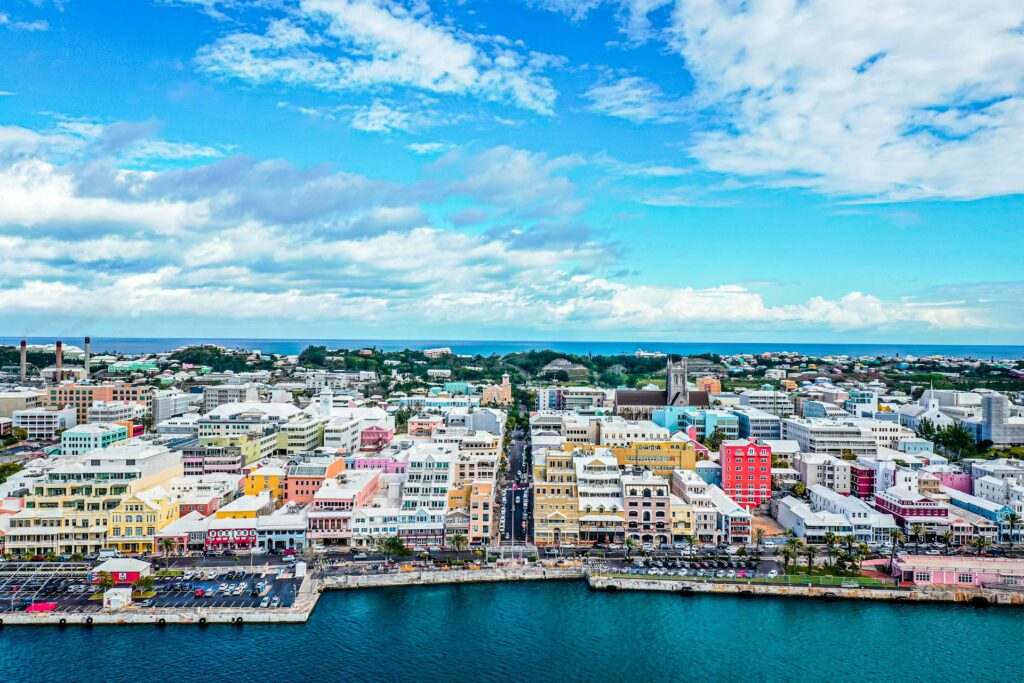
Bermuda Cruise Port Guide
Planning your cruise to Bermuda and trying to figure out what to expect at the port? There are multiple ports in Bermuda for cruise ships to dock: King’s Wharf and Heritage Wharf are both located in the Royal Naval Dockyard on Ireland Island North at the western tip of the Great Sound (the busiest cruise …

How Much Is a Disney Cruise?
The happiest place on Earth brings smiles to the seas with all the amenities offered on a Disney Cruise vacation. Between the pools, spa, shows, entertainment, and dining options, a Disney Cruise is a vacation with something for everyone. If you’re considering a Disney Cruise vacation, you’re likely wondering, “how much is a Disney Cruise?” …
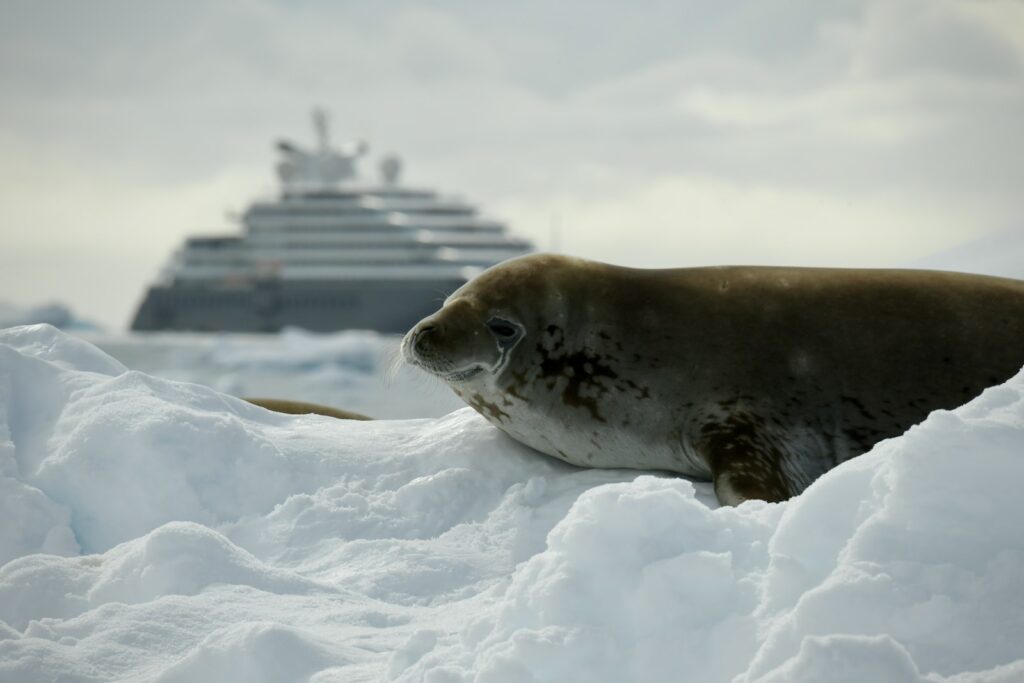
How Much Does an Antarctica Cruise Cost?
For many people, seeing Antarctica is a dream come true and the trip of a lifetime. The best way to experience it is by taking a cruise. Flying requires expensive charter flights with expert pilots, but cruises let you make multiple stops. Generally, a cruise to Antarctica typically costs at least $10,000 per person. Still, …

About Fred Dean
I've been cruising for 15 years, and I can't get enough.
Leave a Comment Cancel reply
Save my name, email, and website in this browser for the next time I comment.
Cruise Tips For Families & Single Cruisers
Things to Know Before You Cruise
How Fast Do Cruise Ships Really Go? Cruise Ship Speeds Revealed!
As a cruise enthusiast, I’ve always been curious about the speed of these massive vessels and how they can cover such vast distances in a day. So, I decided to delve deeper into the facts and figures surrounding the speed of cruise ships and the factors that can influence their velocity.
In this article titled ‘How Fast Do Cruise Ships Really Go? Cruise Ship Speeds Revealed!’, I’ll be sharing my findings on the cruising industry’s speed basics, the fastest ships, and the factors that can affect a ship’s velocity.
Cruise ships have always been a popular mode of travel for millions of people worldwide, offering endless entertainment, luxurious amenities, and exotic destinations. However, the speed of these vessels is a crucial aspect that often goes unnoticed.
Did you know that the average cruising speed of a cruise ship is between 18 to 22 knots, covering around 480 nautical miles in a day? That’s impressive, but what’s even more fascinating is that the maximum top speed of some of these massive ships can reach up to 25 knots, with Cunard’s Queen Mary 2 being the fastest at 30 knots.
In this article, we’ll be revealing the secrets behind the speed of cruise ships and what factors can influence their velocity. So, let’s get started!
- The average cruising speed of a cruise ship is between 18 to 22 knots (20 to 25 mph), while the maximum top speed is around 25 knots.
- The fastest cruise ship is Cunard’s Queen Mary 2, which can reach speeds of up to 30 knots.
- Cruise ships rarely reach their maximum speeds, and their speed can be influenced by various factors such as itinerary, fuel, distance to shore, hazards, and weather.
- In 24 hours, a cruise ship can cover about 480 nautical miles, and newer cruise ships have advanced technology to reduce friction and increase speed.
Cruise Ship Speed Basics
As someone who’s been in the cruise industry for several years, I can tell you that understanding cruise ship speed basics is like setting sail on a calm sea – it’s essential to a smooth journey.
Cruise ships typically travel at an average speed of 18 to 22 knots, which is equivalent to 20 to 25 mph. However, the maximum top speed of a cruise ship can reach up to 25 knots.
Cruise ship speed safety is a top priority for all cruise lines. Their ships are designed with advanced technology to increase speed and reduce friction, but speed can still be affected by various factors such as itinerary, fuel, distance to shore, hazards, and weather.
Additionally, it’s worth noting that cruise ships rarely reach their maximum speeds, as safety and passenger comfort are always taken into consideration. The impact of speed on the passenger experience is significant, as it can affect the amount of time passengers have at each port, the amount of time spent at sea, and the level of comfort they experience while on board.
Factors Affecting Speed
When planning a cruise, I take into consideration various factors that can affect the ship’s speed.
Weather conditions play a big role in determining how fast a cruise ship can go. High winds, waves, and storms can slow down the ship significantly, while calm seas and clear skies can allow for a smooth and speedy journey.
Another factor that affects cruise ship speed is fuel consumption. The amount of fuel a ship carries can determine how fast it can go and for how long. A heavier ship will require more fuel to maintain speed, while a lighter ship can go faster with less fuel.
Additionally, distance to shore and potential hazards along the route can also impact the ship’s speed and itinerary. Overall, it’s important to consider all of these factors when planning a cruise to ensure a safe and enjoyable journey.
Fastest Cruise Ships
I’ve had the opportunity to experience some of the fastest cruise ships in the industry, such as Cunard’s Queen Mary 2, which can reach speeds of up to 30 knots. But while it’s impressive to be able to travel at such high speeds on the water, it’s important to note that cruise ships rarely reach their top speeds due to a variety of factors such as itinerary, fuel, distance to shore, hazards, and weather.
To provide a better understanding of the top speed records and speed comparison between cruise ships, here’s a table that compares the top speeds of some of the fastest cruise ships in the world:
As you can see, the Queen Mary 2 holds the top spot for the fastest cruise ship in the world, while the other ships on the list have top speeds ranging from 23.9 to 22.6 knots. While speed may not be the main selling point for a cruise, it’s still interesting to compare and see how different ships stack up against each other.
Author and Resources
Through my experience in the cruise industry since 2006, I’ve gained access to a plethora of resources. These resources have allowed me to become a trusted source of information for over 1 million people per month who are planning their cruise holidays.
My social media presence on Instagram, Facebook, YouTube, Twitter, and LinkedIn has given me the opportunity to share cruise planning tips, advice, and insights with a wide audience. I also send a weekly email that’s read by 40,000 cruisers. This email requires confirmation via email.
My website, powered by Cruiseline.com, offers a comment section where readers can leave their thoughts and questions. The website saves the commenter’s name, email, and website for the next time they comment. To ensure a personalized experience, I make it a point to respond to as many comments as possible.
Overall, my goal is to provide valuable information and assistance to anyone planning a cruise vacation.
How do cruise ships navigate through hazardous weather conditions?
Navigating through hazardous weather conditions is a crucial aspect of cruise ship navigation. Advanced technology, including weather tracking systems and stabilizers, helps to minimize the impact of rough weather on the ship and its passengers.
What is the average distance a cruise ship can travel on a full tank of fuel?
Cruise ship fuel efficiency varies based on factors such as itinerary and speed. Additionally, ocean currents can impact speeds and fuel consumption. It’s difficult to determine an average distance traveled on a full tank of fuel due to these variables.
How do newer cruise ships reduce friction and increase speed?
Innovations in hull design and propulsion systems have reduced friction, increasing newer cruise ships’ speed. This benefits passengers by getting them to their destinations faster, providing more time to explore and experience the freedom of the open sea.
How do cruise ships handle emergency situations while at sea?
Cruise ships have strict emergency response plans and safety protocols in place to handle any situation at sea. These plans include evacuation procedures, communication protocols, and regular training exercises for crew members to ensure the safety of passengers and crew.
What is the process for designing and building a new cruise ship?
Designing and building a new cruise ship is a complex process that involves extensive research, planning, and shipbuilding techniques. From the initial concept to the final product, every detail is carefully considered to ensure a safe and enjoyable experience for passengers.
- Favorites & Watchlist Find a Cruise Cruise Deals Cruise Ships Destinations Manage My Cruise FAQ Perfect Day at CocoCay Weekend Cruises Crown & Anchor Society Cruising Guides Gift Cards Contact Us Royal Caribbean Group
- Back to Main Menu
- Search Cruises " id="rciHeaderSideNavSubmenu-2-1" class="headerSidenav__link" href="/cruises" target="_self"> Search Cruises
- Cruise Deals
- Weekend Cruises
- Last Minute Cruises
- Family Cruises
- 2024-2025 Cruises
- All Cruise Ships " id="rciHeaderSideNavSubmenu-4-1" class="headerSidenav__link" href="/cruise-ships" target="_self"> All Cruise Ships
- Cruise Dining
- Onboard Activities
- Cruise Rooms
- The Cruise Experience
- All Cruise Destinations " id="rciHeaderSideNavSubmenu-5-1" class="headerSidenav__link" href="/cruise-destinations" target="_self"> All Cruise Destinations
- Cruise Ports
- Shore Excursions
- Perfect Day at CocoCay
- Caribbean Cruises
- Bahamas Cruises
- Alaska Cruises
- European Cruises
- Mediterranean Cruises
- Cruise Planner
- Make a Payment
- Beverage Packages
- Shore Excursions
- Dining Packages
- Royal Gifts
- Check-In for My Cruise
- Update Guest Information
- Book a Flight
- Transportation
- Book a Hotel
- Required Travel Documents
- Redeem Cruise Credit
- All FAQs " id="rciHeaderSideNavSubmenu-7-1" class="headerSidenav__link" href="/faq" target="_self"> All FAQs
- Boarding Requirements
- Future Cruise Credit
- Travel Documents
- Check-in & Boarding Pass
- Transportation
- Perfect Day at CocoCay
- Post-Cruise Inquiries
- Royal Caribbean
- Celebrity Cruises
How fast do Royal Caribbean cruise ships go?
The top speed of Royal Caribbean cruise ships vary however the average cruising speed is about 18 to 20 knots depending on the ship and itinerary which is approximately 20 to 23 miles per hour.
Still need help? Contact Us
Get support by phone or email.
Email Your Questions
Locate a Travel Agent
Previewing: Promo Dashboard Campaigns
My Personas
Code: ∅.
Winter is here! Check out the winter wonderlands at these 5 amazing winter destinations in Montana
- Plan Your Trip
How Fast Do Cruise Ships Go
Published: December 11, 2023
Modified: December 28, 2023
by Julieta Jager
- Sustainability
Introduction
When it comes to the world of cruising, one of the factors that captivates travelers is the speed at which cruise ships travel. Whether you’re a first-time cruiser or a seasoned traveler, the speed of a cruise ship can impact your overall experience at sea. Understanding how fast cruise ships go and the factors that influence their speed can help you make informed decisions when planning your next cruise adventure.
As you embark on a cruise vacation, it’s essential to know that the speed of a cruise ship can vary depending on several factors. These factors can include the size and type of the ship, the route and distance it needs to cover, weather conditions, and the safety regulations imposed by maritime authorities. Cruise ship speeds are typically measured in knots, which represents the nautical miles traveled per hour.
Whether you’re sailing across the serene Caribbean waters, exploring the rugged Alaskan coastline, or crossing the vast expanse of the Atlantic Ocean, the speed at which your cruise ship travels will influence the duration of your voyage, the time spent in port, and the overall itinerary of your trip.
Understanding the speed of cruise ships is not just about the logistics of your trip; it can also impact your onboard experience. Some passengers enjoy the thrill of cruising at high speeds, while others prefer a more leisurely pace, allowing them to relax and take in the scenic views. Additionally, the speed of a cruise ship can affect its stability and maneuverability, which are crucial factors for both passenger comfort and safety.
In the following sections, we will delve into the various factors that can affect cruise ship speeds, explore the typical speeds of different types of ships, and discuss the decisions that influence the speed of a cruise ship. By gaining insights into these aspects, you’ll be better equipped to choose the right cruise for your preferences and make the most of your time at sea.
Factors Affecting Cruise Ship Speed
Several factors can impact the speed at which a cruise ship travels. Understanding these factors can provide valuable insight into why cruise ships operate at different speeds and the considerations that go into determining their cruising velocities. Here are some key factors that influence cruise ship speed:
- Ship Size and Design: The size and design of a cruise ship play a significant role in determining its speed. Generally, larger ships have more powerful engines and can achieve higher speeds. Additionally, the hull design and streamlined shape of modern cruise ships contribute to their ability to navigate through the water efficiently.
- Engine Power: The power of a cruise ship’s engines directly affects its speed. Cruise ships are equipped with powerful diesel-electric or gas turbine engines that provide the necessary propulsion to move through the water. The engine power is typically measured in terms of horsepower or kilowatts.
- Weather Conditions: Weather conditions at sea can significantly impact cruise ship speed. Strong headwinds or rough seas can slow down a ship’s progress, while favorable tailwinds can increase its speed. Cruise lines closely monitor weather conditions and may alter their itineraries or adjust speeds to ensure passenger safety and comfort.
- Route and Distance: The distance a cruise ship needs to travel and the chosen route can influence its speed. Longer routes may require higher cruising speeds to maintain the scheduled itinerary, while shorter routes can allow for a more relaxed pace. Additionally, ships traveling through narrow channels or congested ports may need to reduce their speed for navigation and safety reasons.
- Regulatory Restrictions: Maritime authorities impose various regulations on cruise ships, including speed limits in certain areas. These restrictions ensure the safety of the vessel, its passengers, and the environment. Cruise lines adhere to these regulations and adjust their speeds accordingly to comply with the rules.
These factors, in combination or individually, influence the cruise ship’s speed, highlighting the complexity of the decision-making process behind each voyage. Cruise lines carefully consider these factors to optimize the guest experience, maintain safety, and meet the expectations of their passengers.
Typical Cruise Ship Speeds
When it comes to cruise ship speeds, there is a wide range depending on various factors such as ship size, itinerary, and desired passenger experience. Here are some typical speeds you can expect to encounter on a cruise ship:
- Standard Cruising Speed: Most modern cruise ships have a standard cruising speed of around 20 to 24 knots (23 to 28 mph or 37 to 44 km/h). This speed allows for a comfortable voyage while maintaining a reasonable schedule to ports of call.
- Slow-Speed Cruising: Some cruise ships, especially those on longer itineraries or ones focused on scenic destinations, may operate at slower speeds. These slower speeds can range from 10 to 15 knots (11 to 17 mph or 18 to 28 km/h) and allow passengers to enjoy breathtaking views and a more relaxed onboard atmosphere.
- High-Speed Cruising: On the other end of the spectrum, certain cruise ships are designed and built for high-speed cruising. These ships can reach speeds upwards of 25 knots (29 mph or 46 km/h) and are commonly found on transatlantic or transpacific voyages, where time is of the essence, or on specialty cruises focused on fast-paced entertainment and activities.
It’s important to note that these are general guidelines, and actual cruise ship speeds can vary depending on the factors mentioned earlier. Additionally, cruise lines may adjust speeds to accommodate various operational considerations such as fuel efficiency, scheduling, and passenger comfort.
When planning your cruise vacation, it’s beneficial to research the typical speeds of the ships you are considering. The speed of a cruise ship can impact the overall duration of your voyage and the amount of time you have to explore each destination. If you prefer a leisurely pace and want to spend more time in port, you may opt for a cruise on a ship that operates at slower speeds. Conversely, if you are looking to cover more ground or have limited time, a high-speed cruise ship may be more suitable for your needs.
Being aware of the typical speeds of cruise ships enables you to select a voyage that aligns with your travel preferences and time constraints, ensuring a fulfilling and satisfying cruising experience.
High-Speed Cruise Ships
High-speed cruise ships are designed to offer passengers faster travel, allowing them to cover more ground in less time. These ships are equipped with powerful engines that enable them to reach impressive speeds and provide a unique cruising experience. Here are some key points about high-speed cruise ships:
- Transatlantic and Transpacific Voyages: High-speed cruise ships are commonly found on transatlantic and transpacific routes. These voyages involve crossing vast bodies of water, and the ability to cruise at high speeds allows passengers to reach their destinations more quickly, reducing the overall duration of the voyage.
- Time-saving: For travelers with limited vacation time or those who prefer to spend more time exploring port cities, high-speed cruise ships can be a great option. These ships can cover longer distances in a shorter amount of time, maximizing the time spent at various destinations.
- Entertainment and Activities: High-speed cruise ships often offer a wide range of onboard entertainment and activities to keep passengers engaged during the shorter voyages. From casinos and theaters to water parks and sports facilities, these ships aim to provide a lively and action-packed experience for guests.
- Modern Design: High-speed cruise ships are usually built with modern and sleek designs to enhance their speed and efficiency. These ships often incorporate advanced technologies, such as advanced stabilization systems, to ensure a smooth and comfortable ride even at high speeds.
- Specialty Cruises: Some cruise lines offer specialty high-speed cruises that cater to specific interests or themes. These cruises may focus on adventure, racing events, or other activities that require faster travel. They attract enthusiasts who seek the thrill of high-speed cruising combined with unique experiences.
It’s important to note that high-speed cruise ships generally prioritize speed over leisurely travel. While they provide an exciting and time-saving option for certain voyages, they may not offer the same level of relaxation and immersive experience as slower-paced cruises. Therefore, it’s essential to consider your preferences and priorities when selecting a cruise ship, taking into account the desired balance between speed and onboard amenities.
High-speed cruise ships are a testament to the advancements in maritime technology and navigation, offering passengers the opportunity to explore distant destinations within shorter timeframes. Whether you’re looking to cross an ocean quickly or seeking a fast-paced and lively onboard experience, high-speed cruise ships offer a unique and thrilling way to travel the world’s seas.
Slow-Speed Cruise Ships
While high-speed cruise ships cater to travelers who prefer a swift and efficient way of reaching their destinations, slow-speed cruise ships offer a more relaxed and leisurely cruising experience. Here are some key points about slow-speed cruise ships:
- Scenic Cruising: Slow-speed cruise ships are often chosen for itineraries that focus on scenic destinations. These ships allow passengers to take in breathtaking views, enjoy longer periods of time at sea, and fully immerse themselves in the beauty of the surrounding landscapes.
- Relaxation and Serenity: Slow cruising offers passengers an opportunity to unwind and fully enjoy the amenities and services available onboard. With more leisurely travel, there is ample time to lounge by the pool, indulge in spa treatments, or simply relax on your private balcony with panoramic views of the ocean.
- Extended Port Visits: Slow-speed cruise ships often allow for extended stays in port cities, giving passengers more time to explore and experience the local culture and attractions. This slower pace allows for a deeper immersion in each destination.
- Intimate Atmosphere: Slow-speed cruise ships are typically smaller in size, offering a more intimate and personalized experience for passengers. This creates a sense of community onboard, with opportunities to connect with fellow travelers and build lasting friendships.
- Relaxed Itineraries: Slow cruising operates on a more relaxed schedule, with shorter distances covered each day. This allows passengers to enjoy a stress-free journey with plenty of time to soak up the onboard activities, including enrichment programs, fine dining experiences, and live entertainment.
Slow-speed cruise ships provide a counterpoint to the fast-paced world we often find ourselves in. They appeal to those seeking a slower, more leisurely pace, allowing them to savor every moment of their cruise vacation. This type of cruising is particularly popular for scenic coastal journeys, such as Alaska cruises or river cruises.
It’s essential to consider your preferences, travel goals, and desired level of relaxation when choosing a slow-speed cruise ship. If you’re looking for a serene and laid-back experience with a focus on enjoying the onboard amenities and exploring each destination at a leisurely pace, a slow-speed cruise ship may be the perfect choice for you.
Slow cruising offers a truly unique and calming approach to travel, providing an opportunity to unwind, connect with nature, and create lasting memories, all while indulging in the luxurious comfort of a cruise ship.
Factors Influencing Cruise Ship Speed Decision
The decision regarding the speed at which a cruise ship operates involves several factors that cruise lines carefully consider. These factors aim to ensure the safety, comfort, and satisfaction of passengers, as well as the overall efficiency of the voyage. Here are some key factors that influence the cruise ship speed decision:
- Itinerary: The ports of call and the overall itinerary play a significant role in determining the cruise ship’s speed. Cruise lines analyze the distances between destinations and the time available in each port to decide on an appropriate cruising speed. They aim to balance the desired itinerary with the comfort and enjoyment of passengers.
- Passenger Experience: Cruise lines strive to create a memorable and enjoyable experience for passengers. The speed of the ship can contribute to this by allowing for on-time arrivals, maximizing the time available for activities and excursions, and providing a smooth and comfortable sailing experience.
- Fuel Efficiency: Fuel consumption is a crucial consideration for cruise lines, both from an environmental and financial standpoint. By optimizing the speed of their ships, cruise lines can achieve greater fuel efficiency, reducing emissions and operating costs. This may involve finding an optimal balance between speed and fuel consumption.
- Weather Conditions: Safety is paramount in the cruise industry, and weather conditions play a significant role in determining the ship’s speed. In the face of adverse weather, such as strong winds or heavy storms, cruise ships may slow down or alter their course to ensure the safety and comfort of passengers and crew members.
- Regulatory Constraints: Maritime authorities impose regulations regarding ship speeds in certain areas to protect the environment and ensure safe navigation. Cruise lines comply with these regulations and adjust the speed of their ships accordingly. These constraints can influence the overall speed decision for a particular voyage.
By carefully considering these factors, cruise lines aim to create an optimal balance between itinerary, passenger experience, fuel efficiency, safety, and compliance with regulations. The speed decision is a thoughtful process that takes into account multiple aspects to provide a memorable and enjoyable cruising experience for passengers.
It’s important to note that the specific influence of these factors may vary between cruise lines and individual voyages. Factors such as the size and design of the ship, the target market, and the cruise line’s overall strategy also come into play when determining the speed at which the ship will operate.
Ultimately, the cruise ship speed decision revolves around the overarching goal of ensuring that passengers have an incredible and satisfying experience while maintaining the highest standards of safety, environmental responsibility, and operational efficiency.
The speed at which cruise ships travel is a significant aspect of the overall cruising experience. Whether you prefer the excitement of high-speed cruising or the relaxation of a slower-paced journey, understanding the factors that influence cruise ship speeds is essential for planning a memorable and fulfilling cruise vacation.
Factors such as ship size, engine power, weather conditions, route and distance, and regulatory restrictions all play a role in determining the speed at which a cruise ship operates. By considering these factors, cruise lines aim to provide passengers with the optimal balance between itinerary, passenger experience, fuel efficiency, safety, and compliance with regulations.
Typical cruise ship speeds range from 20 to 24 knots for standard cruising, with slower speeds around 10 to 15 knots for more scenic itineraries and higher speeds exceeding 25 knots for transatlantic or transpacific voyages. Understanding the typical speeds of different cruise ships allows you to select a voyage that aligns with your preferences and time constraints.
Whether you choose a high-speed cruise ship for time-saving and exhilarating adventures or a slow-speed cruise ship for a relaxed and immersive experience, both offer unique advantages and opportunities for exploration. High-speed cruise ships excel in covering longer distances efficiently, while slow-speed cruise ships prioritize scenic cruising, extended port visits, and serenity.
The decision regarding cruise ship speed considers factors such as itinerary, passenger experience, fuel efficiency, weather conditions, and regulatory constraints. Cruise lines carefully weigh these factors to provide an optimal cruising experience that ensures passenger satisfaction, safety, and environmental responsibility.
Ultimately, the speed at which a cruise ship travels contributes to the overall enjoyment and fulfillment of your cruise vacation. By understanding the factors influencing cruise ship speeds and considering your preferences and priorities, you can choose the perfect cruise ship and itinerary to create lasting memories and make the most of your time at sea.

- Privacy Overview
- Strictly Necessary Cookies
This website uses cookies so that we can provide you with the best user experience possible. Cookie information is stored in your browser and performs functions such as recognising you when you return to our website and helping our team to understand which sections of the website you find most interesting and useful.
Strictly Necessary Cookie should be enabled at all times so that we can save your preferences for cookie settings.
If you disable this cookie, we will not be able to save your preferences. This means that every time you visit this website you will need to enable or disable cookies again.
How Fast Do Cruise Ships Go?

June 21, 2023
The average speed of cruise ships is 20 knots (23 mph, 37 km/h), and the current fastest cruise ships are the MV Glory Sea ship and the Queen Mary 2 ship, both of these vessels can achieve a cruise speed of 30 knots (35 mph, 56 km/h).
The maximum speed ever recorded by a passenger ship is 39 knots (44.87 mph or 72.24 km/h) but this was achieved by the SS United States which is technically an ocean liner and not a cruise ship.
In this article you’ll learn more about the speed of cruise ships and the factors that influence how fast these impressive vessels can break through the waves.
Let’s explore!
What is a Knot?
How did the knot become the measuring speed of the seas, what is the difference between top speed and cruising speed, what was the fastest cruise ship in history, how these giant cruise ships can move themselves, cruise ship fuel usage: size vs. efficiency, 1. itinerary, 2. weather events, 3. emergencies, 4. fuel conservation.
A knot is a unit of speed used in maritime and air navigation as well as in meteorology.
1 knot is equal to 1 nautical mile per hour, or 1.15 mph and 1.852 km/h.
Ancient sailors measured the speed of their moving ships by throwing a floating object into the sea and then counting the time it took to pass the ship’s stern using a particular type of sandglass. Called the Dutchman’s log , this device became the standard tool for measuring speed until the 16th century.
At the end of the 16th century the Dutchman’s log was replaced by a newer device called the Chip log.

In this chip log, knots were tied at equidistant intervals in a rope and on the end of the rope a piece of wood was attached to it. To measure the speed of a boat, mariners used to toss the end of this rope behind the ship and allowed the rope to roll out freely.
By counting the knots that passed over the bow within a certain time, sailors measured the ship’s speed. For example, a ship traveling at 10 knots was said to go 10 nautical miles in an hour.
Cruise ships often choose a cruising speed or service speed that is comfortable for passengers. This will be somewhere below the fastest possible speed the vessel can reach. The cruising speed also takes fuel consumption into account.

The top speed of ships differs from their comfortable service speed. The route of a particular ship affects its speed, and cruise ships rarely travel at a speed that would make it uncomfortable for passengers. Also, traveling at the fastest possible speed with all engines open would hurt efforts to conserve fuel and travel efficiently.
For closer ports, captains may opt to travel more slowly. For farther destinations, a ship may take on additional speed in open waters where it can travel more efficiently.
Sometimes, ships float or idle to allow guests to enjoy scenic venues. In Hawaii, cruise ships often pause to let passengers take pictures of erupting volcanoes. Similarly, cruise ships in Alaska pause for weather and glaciers for safety reasons.

Launched in 1969, Cunard’s Queen Elizabeth 2 faithfully toted passengers until it was decommissioned in 2008. The QE2 was intentionally built to be the world’s fastest passenger ship. Her service speed alone was over 28 knots. To reach this heady speed, the ship used only seven engines. This left two in reserve to allow for non-disruptive maintenance. Reputedly, the QE2 had a top speed of 34 knots.
This speed came at a cost. The 963-foot ship took one gallon of fuel to move forward 50 feet. With 10 gallons of fuel, she could travel 500 feet.
- Top Speed: 34 knots or 39 mph
- Displacement: 49,800 tons
- Capacity: 2,900 passengers and crew
- Status: Now a floating hotel in Dubai

Launched in 2004, the Queen Mary 2 is Cunard’s new flagship. At that time, it was the longest and biggest ship in the world — a title now held by Royal Caribbean’s Freedom of the Seas . It was the longest and largest ship on the oceans. The QM2 is the only transatlantic cruise ship currently in operation, and it offers one annual cruise that crosses the Atlantic. The mega-ship is still the largest ship under commission, with a service speed of 26 knots.
- Top Speed: 30 knots (34.5 mph)
- Displacement: 79,300 tons
- Capacity: 3,950 passengers and crew
- Status: Still in operation

What powers these behemoths of the sea? Without powerful engines , cruise ships would never make it out of port.
Diesel reciprocating engines power older cruise ships. The engines supply the power to turn propeller shafts that move the boat by displacing water. A transmission system connecting the engines to the propellers determines how fast the propellers move, thus the speed of the boat.
Many modern ships use gas turbines or diesel-electric engines to propel the boat and power shipboard systems. Larger ships may incorporate two power sources for propulsion and electrical power, respectively.
Gas turbine engines create heat and transform it into mechanical energy to produce electricity. In a combustion chamber, these engines compress hot air. The hot exhaust is used by a turbine that spins a shaft that in turn spends the generators. This is similar to how diesel-electric engines operate. The output shafts connect to generators to create electricity.
Both these engines gobble up tons of fuel. The QE2 used 380 tons of fuel every day to achieve 29 knots per hour. The large ship carried enough fuel to last 12 days between ports. Usually, ships use fueling barges to fill their tanks or top up at their ports of call. Using lower-grade diesel, the powerful engines that power these boats are not as efficient as diesel used in cars and trucks.
Currently, all cruise ships use propellers or screws to push the vessel through the water or to go in reverse. Airplanes require very fast propeller speeds to move through the air. However, ships rely on torque power, move more slowly, and rarely top 30 knots due to the effect on the passengers and crew.

Size affects fuel consumption and, therefore, efficiency on cruise ships. Smaller ships consume less fuel for trips of the same distance. The average speed also impacts fuel consumption, a fact any captain is keenly aware of. The average ship uses 250 tons of fuel per day . That’s a whopping 80,000 gallons per day or 800,000 gallons for a 10-day trip!
Just like a car on the highway, higher speeds for ships create aerodynamic drag. This requires more fuel to maintain the same speed. Most cruise ships maintain a speed of 21 to 24 knots to avoid aerodynamic drag that could eat up the ship’s fuel supply. Running out of gas in the middle of the ocean is obviously not an option.
In general, cruise ships up to 1,100 feet long must carry as much as two million gallons of fuel to make the trip between ports of call. In comparison, a private motor yacht that’s 60 feet long carries up to 1,200 gallons while the Exxon Valdez holds 55 million gallons of fuel.
Royal Caribbean’s Harmony has four-story-high engines. It burns through nearly 1,400 gallons of fuel every hour. That’s 66,000 gallons every day, which creates a lot of pollution. In recent years, there has been enormous regulatory pressure to make big ships friendlier to the environment and the ocean that they sail on.

What Impacts the Speed of Ships?
Assuming a cruise ship is optimally designed for weight load, its speed will be the square root of its horsepower divided by weight. However, operators who want to improve their speed cannot just offload some weight and expect to achieve maximum speed. Where the weight lies matters just as much. For example, front-loading the boat creates drag and slows it down.
Besides, traveling at top speed doesn’t present the most comfortable ride for passengers. That’s why captains take their time and travel at comfortable average cruising speeds.
Here are several factors that impact how fast a cruise ship goes:
Cruise ships crossing the Gulf of Alaska often slow down to let passengers share close encounters with the magical sea life in the area. Sometimes, ships have to slow down because of unfavorable sea conditions that cause rough water and high waves. At other times, cruise ships slow down for beautiful views of coastal cities and natural attractions such as volcanoes.

Passengers may also note that boats slow in shallow water such as that found close to harbors. This prevents the boat from unexpectedly running into objects at low tide or in shallow seas. In open water, ships often move much faster toward faraway destinations. There’s more room to maneuver in deep water far away from populated areas.
Just as heavy wind and rain impact how fast a car can go on land, the weather at sea greatly impacts the speed of cruise ships. The direction of the wind can improve the average speed of a boat if it comes from astern, or behind the boat, pushing the cruise ship in the direction it’s traveling. On the other hand, a headwind pushing against the bow or front of the boat can significantly slow it down, requiring more energy to travel at the same speed. Wind shear from wind hitting the boat from either side creates drag and makes it harder for the boat to move forward, consuming more fuel than a calm sea or one with a lucky tailwind.

Captains often decide to idle in position or increase speed to wait out or outrun a storm.
Thankfully, emergencies don’t happen all that often on the high seas aboard a cruise ship. If someone falls off the boat, the ship has to slow down and turn around to attempt to rescue. Sometimes, another vessel requires assistance, and the crew prepares the boat for top speed to answer the SOS. In case of an outbreak of illness or disease on board, ships sometimes must anchor offshore or cruise around until they are cleared to enter their port of call.

Moving at slower speeds helps to conserve fuel. Ships drilling their way through the water experience more resistance than a car cruising down the highway. This results in monstrous energy consumption and big boats burn through fuel fast when traveling at top speeds.
Imagine a cruise ship that requires nearly 225 tons of fuel every day to achieve an average cruising speed of 24 knots. By decreasing its speed by three knots per hour, this ship could save 75 tons of fuel a day. With potential savings in fuel and cost of 33%, slowing down is better for the environment and the owner who writes the check to the fuel company.
About the author

Travel Reporter & Editorial Director
Ph.D. in Geography, Travel Photographer, and Software Engineer. Been on 4 continents and loved them all.
Latest Posts

Travel Blog
Most Hotel Rooms are Terrible: They Don’t Prioritize a Good Night’s Sleep
Read more →

200 Original Travel Slogans that are actually Great

Behind the Hype: 17 Myths About Being a Digital Nomad
Travel Guides You Can Trust
About Travelness
Brand Assets
Recent Posts
Tours & Activities
Tours in Europe
Digital Security
© 2024 Travelness. All Rights Reserved.
Terms of use - Privacy policy
Join our Adventure: Get all my insider tips for traveling on a budget
CruiseOverload
How Fast Do Cruise Ships Go At Night?
have you ever walked around a cruise ship at night and wondered why it was going so much faster?
Do cruise ships go faster at night? Or am I going crazy?
Exactly how fast do cruise ships travel and do they go faster at night?
Table of Contents

A modern cruise ship travels at the speed of roughly 20 knots (23 miles per hour) at night. Most cruise ships have a maximum speed of 30 knots (34.5 miles per hour.)
The average cruise ship speed is the same at night and day.
But the truth is that the speed of a cruise ship at night can vary depending on a number of factors.
For example, the size and type of the ship, the weather conditions, and the distance to the next port of call can all impact the speed.
Cruising Speed vs Top Speed
Cruise ships have two types of speed: cruising speed and top speed. The cruising speed is the speed at which the ship usually travels, and it’s what you’ll experience most of the time.
The top speed is the maximum speed the ship can reach, but it’s rarely used because it consumes a lot of fuel.
Do Cruise Ships Travel Faster at Night?
Cruise ships don’t travel faster at night, but they might appear to because there are fewer distractions.
At night, you’re not likely to see other ships or land, which can make the ship’s movement seem faster.
How Does Size Affect Speed and Fuel Consumption?
The size of a cruise ship can affect its speed and fuel consumption. Larger ships are generally slower and consume more fuel than smaller ships.
This is because larger ships have more weight to carry and need more power to move.
On top of the increased weight and power requirements, a larger cruise ship will have increased drag. This will cause it to go slower and consume more fuel.
The shape and design of the ship’s hull can also affect its speed and fuel efficiency, with some designs being more streamlined and efficient than others.
Plus, the propulsion system used by the cruise ship can also impact its speed and fuel consumption.
Older ships may use less efficient propulsion systems, such as steam turbines, while newer ships are more likely to use more advanced technologies like diesel-electric or gas turbine engines, which can be more efficient.
Modern engineering and technological advancements are continually improving the efficiency of larger ships, making them more environmentally friendly and cost-effective to operate.
Why Cruise Ships Measure Speed in Knots (and How to Convert It)
Cruise ships measure speed in knots because it’s a nautical measurement that is easy to use.
A nautical mile is slightly longer than a regular mile and is equal to 1.852 kilometers.
Using knots as a measurement of speed is particularly useful for maritime purposes because it allows ships to determine their speed relative to the ocean’s current and wind conditions, which can have a significant impact on the ship’s navigation and fuel consumption.
In addition, knots are used universally in the maritime industry, making it easy for ships from different countries to communicate and share information about their speed.
One knot is equal to one nautical mile per hour.
To convert knots to miles per hour, you can multiply the speed in knots by 1.15078. For example, a ship traveling at 20 knots would be traveling at approximately 23 miles per hour (20 x 1.15078 = 23.0156).
To convert knots to kilometers per hour, you can multiply the speed in knots by 1.852. For example, a ship traveling at 20 knots would be traveling at approximately 37 kilometers per hour (20 x 1.852 = 37.04).
What’s the Average Speed of a Cruise Ship?
The average speed of a cruise ship is around 20 knots (23 miles per hour).
However, this can vary depending on the ship’s size, age, and the conditions at sea.
Why Do Ships Use Nautical Miles?
Ships use nautical miles because they are based on the circumference of the earth and are more accurate for measuring distances at sea.
One nautical mile is equal to one minute of latitude.
Does Cruise Ship Speed Matter?
Cruise ship speed can affect passenger comfort and the ship’s fuel efficiency. Higher speeds can cause more motion and vibrations, which can make some guests uncomfortable, especially if they are prone to seasickness .
Additionally, faster speeds can consume more fuel, which can impact the ship’s overall efficiency and profit .
Why Can Newer Cruise Ships Go Faster?
Newer cruise ships have more advanced technology and more powerful engines, which allows them to go faster than older ships.
Plus, newer ships are designed to be more fuel-efficient, which can help offset the increased fuel consumption of higher speeds.
When Do Cruise Ships Reach Close to Maximum Speed?
Cruise ships usually reach their maximum speed during sea trials, which are conducted before the ship enters service.
During sea trials, the ship is pushed to its limits to test its performance and safety.
How Is the Top Speed of a Cruise Ship Measured?
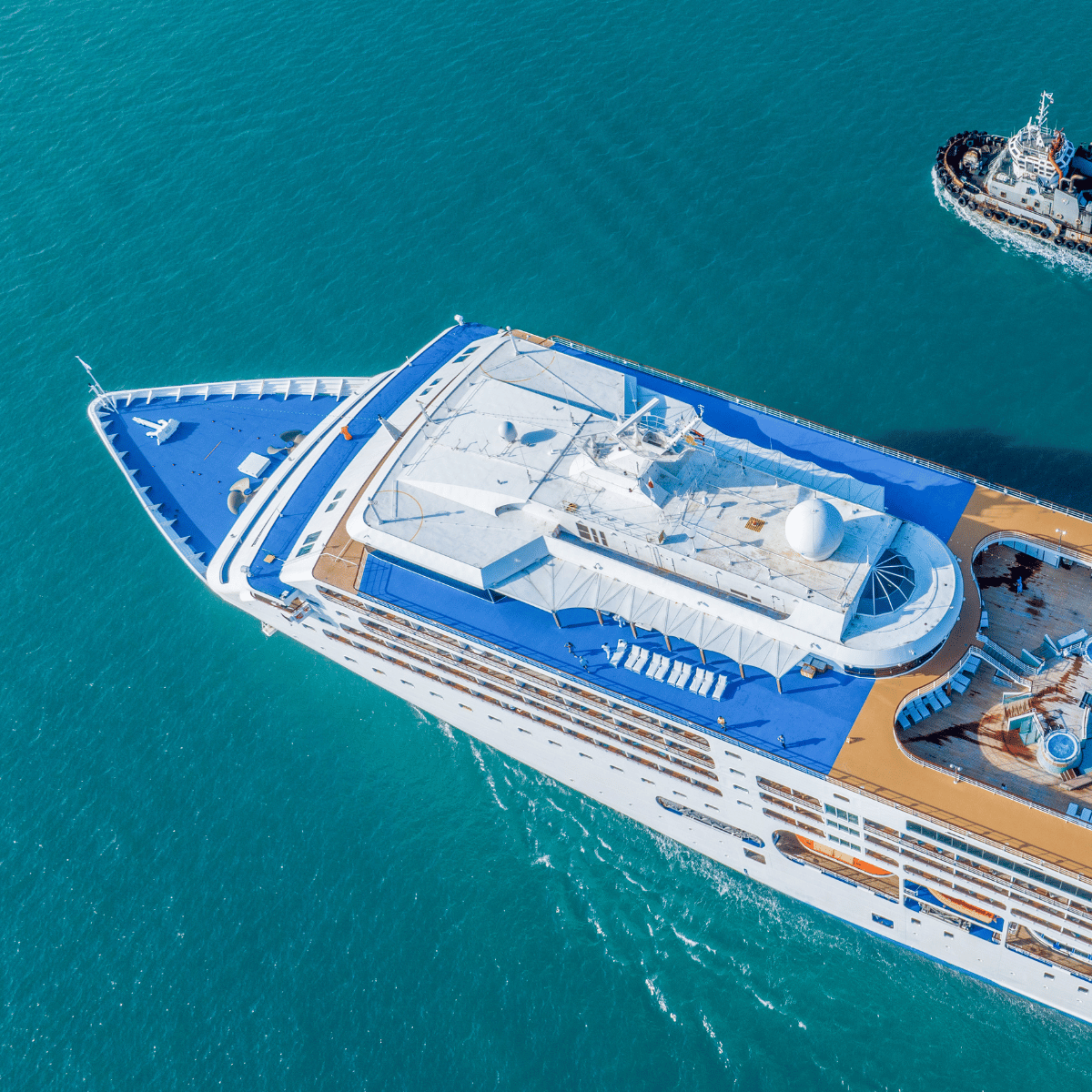
The top speed of a cruise ship is measured during sea trials using specialized equipment.
The ship’s speed is measured over a set distance, and the time it takes to cover that distance is recorded.
How Fast Do Cruise Ships Go in MPH?
Cruise ships typically travel at speeds of around 20 knots, which is equivalent to 23 miles per hour.
there can be some variability, of course. But the average cruising speed tends to be 23 mph as that’s the most comfortable for guests onboard.
A typical cruise ship isn’t in a rush to get somewhere so they don’t have to use their maximum speeds.
How Fast Do MSC Cruise Ships Go?
MSC cruise ships have a top speed of around 24 knots (28 miles per hour).
They typically don’t go at their top speed, unless they are behind schedule. Most MSC cruise ships will cruise along at a comfortable 20 knots.
How Fast Do Disney Cruise Ships Go?
Disney cruise ships have a cruising speed of around 21 knots (24 miles per hour).
Disney cruise ships rarely travel at their top speed as there is no need to do so.
The average large cruise ship has their schedules timed out for a smoother ride and to allow for fuel efficiency.
How Fast Do Sailing Boats Go?
Sailing boats can travel at various speeds depending on their size and the conditions at sea. Smaller boats can travel at speeds of around 5-10 knots (6-12 miles per hour), while larger boats can travel at speeds of up to 30 knots (35 miles per hour).
Overall, the speed of a cruise ship is an important factor in its performance and efficiency.
While it’s not the only factor to consider when booking a cruise, it’s helpful to understand how it can impact your experience on board.
How Long Does It Take to Cross the Atlantic Ocean?
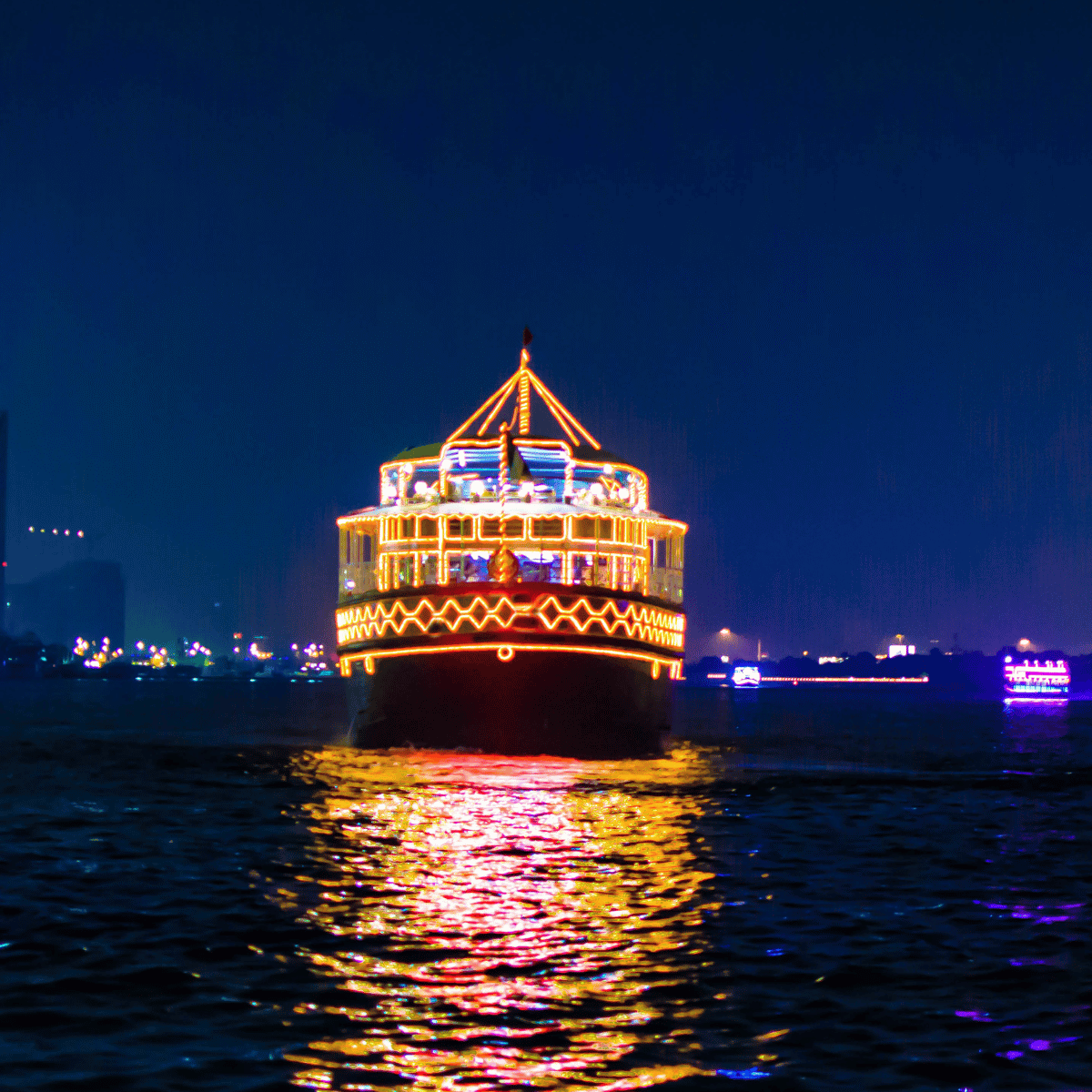
If you’re planning a cruise that includes an Atlantic crossing, you may be wondering how long it will take to reach your destination. The answer depends on several factors, including the itinerary, the ship’s speed, and the distance between ports.
On average, a transatlantic crossing takes about six to eight days. However, some itineraries may take longer or shorter depending on the ports of call and the distance between them.
For example, a cruise that departs from New York and ends in Southampton may take less time than one that departs from Miami and ends in Barcelona.
During the Atlantic crossing, the ship will travel at a steady speed, typically between 20 and 25 knots. This translates to about 23 to 29 miles per hour.
While this may not sound particularly fast, it’s important to remember that cruise ships are designed for passenger comfort rather than speed.
To ensure that passengers have a comfortable journey, cruise ships are equipped with a variety of amenities, including spacious rooms, dining options, and entertainment venues.
Some ships also offer features like spas, fitness centers, and pools to help passengers relax and enjoy their voyage.
Overall, a transatlantic crossing can be a unique and memorable experience, offering the chance to see new places, meet new people, and enjoy all the amenities that a modern cruise ship has to offer.
Whether you’re traveling for business or pleasure, you’re sure to have a great time on your journey across the Atlantic.
How Far Can a Cruise Ship Travel in a Day?
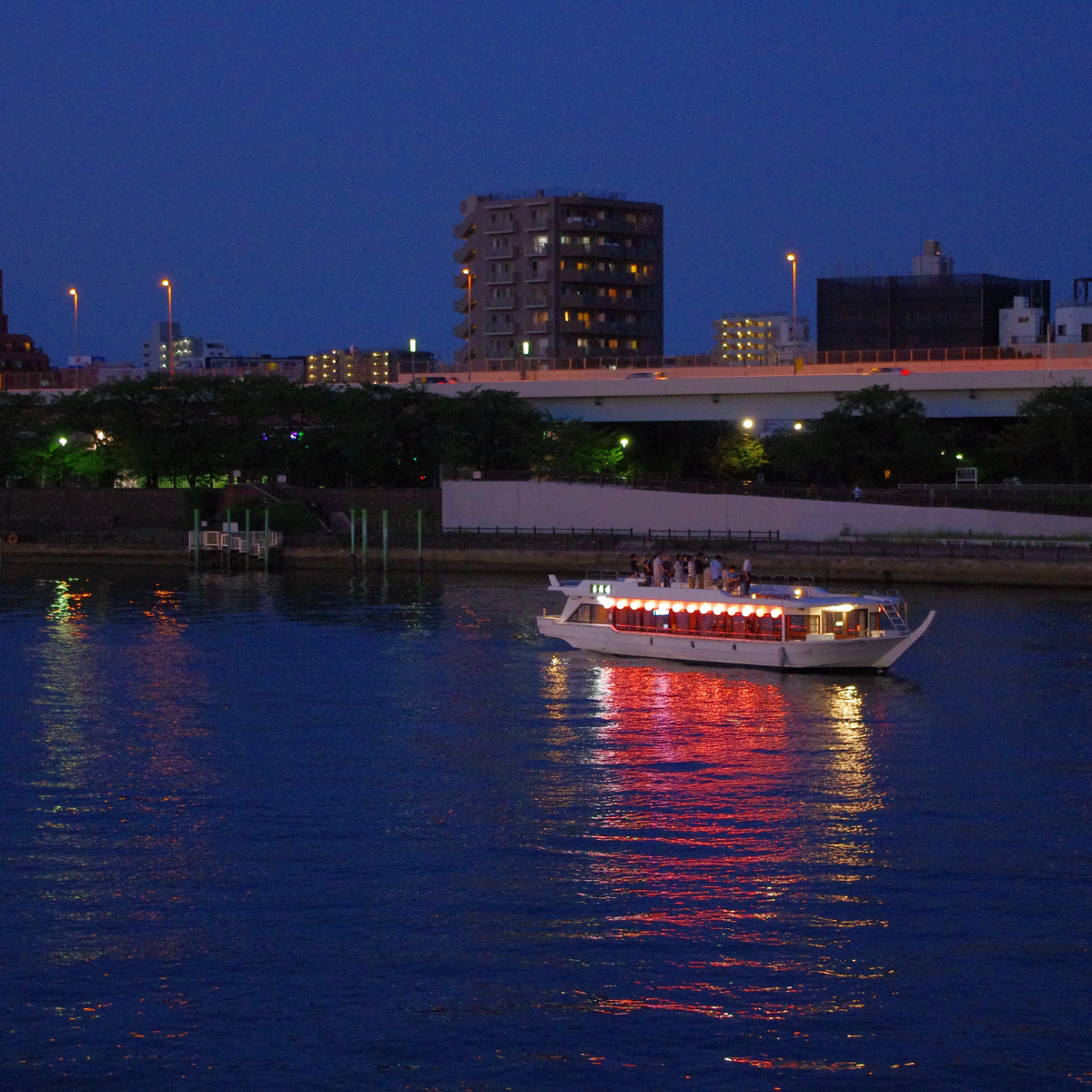
When you’re on a cruise ship, it can feel like you’re in a world of your own, sailing the seas with nothing but the open water around you.
But have you ever wondered just how far a cruise ship can travel in a day? Let’s take a closer look.
It’s important to note that the distance a cruise ship can travel in a day will depend on a number of factors, including the ship’s schedule, fuel consumption, hull design, and more.
Modern cruise ships are technological marvels, with some of the largest cruise ships in the world measuring over 1,000 feet in length and weighing over 200,000 tons.
When it comes to fuel consumption, cruise ships are notoriously thirsty. The largest cruise ships in the world can burn up to 250 tons of fuel per day, which is enough to power a small city.
However, many modern cruise ships are designed to be more fuel-efficient, with advanced hull designs and propellers that help to reduce drag and improve speed.
On average, a cruise ship can travel around 20-24 knots per hour, which is equivalent to around 23-28 miles per hour.
This means that in a 24-hour period, a cruise ship could travel anywhere from 480 to 672 nautical miles, or around 552 to 772 miles.
Of course, the distance a cruise ship can travel in a day will also depend on other factors, such as the number of crew members on board and the speed at which the ship is traveling.
In general, however, modern cruise ships are capable of traveling vast distances in a relatively short amount of time, making it possible to explore some of the most remote corners of the world in comfort and style.
Similar Posts

How To Remember Port And Starboard On A Cruise Ship (7 EASY Ways)

29 Cruise Cabin Hacks Every Traveler MUST-KNOW
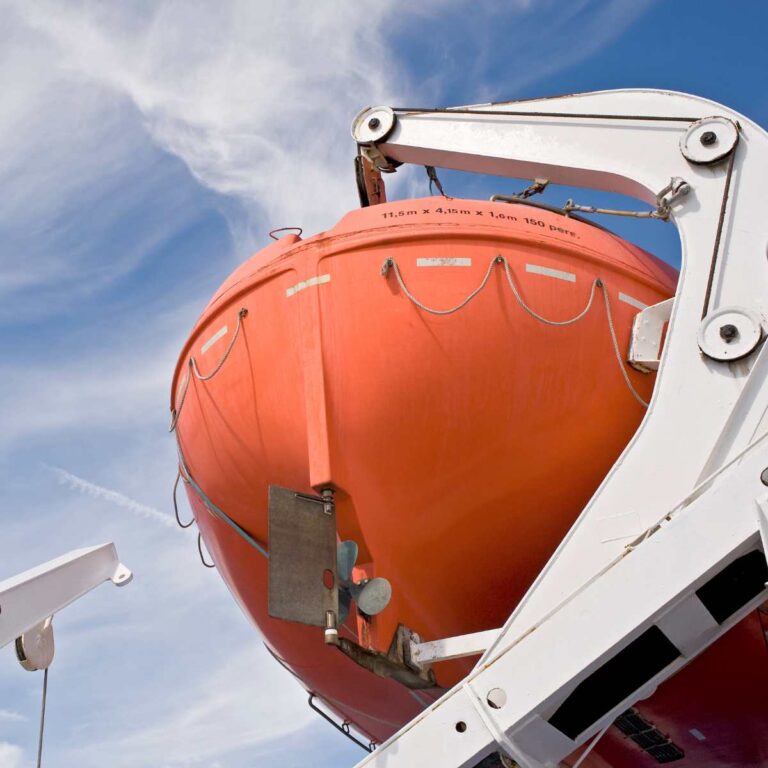
Cruise Ship Lifeboats: Are There Enough?!

How To Get Away With Smoking On A Cruise Ship: What Smokers NEED To Know

What Can You Not Bring On A Cruise (16 Prohibited Items To Leave Behind!)

Can You Drink At 18 On A Cruise? (Drinking Ages Explained!)
Leave a reply cancel reply.
Your email address will not be published. Required fields are marked *
Save my name, email, and website in this browser for the next time I comment.

Why A Cruise Ship Can't Simply Turn Around And Let Late Guests Back On
A s an experienced cruiser and travel agent, I'm often asked why cruise ships can't just turn around for late guests. It's not a simple task. This is due to strict safety protocols, the time it takes for a turnaround, and the significant costs associated with delays. There are also preventative measures in place to help guests avoid such situations. Though accidents and unforeseen events such as traffic delays or mechanical failures can create issues that are unavoidable, most of the time, the failure to return to the ship on time is due to guests not planning properly and situations involving alcohol-related carelessness. If you're left behind though, it may be comforting to know that while each case is treated differently, cruise lines and port agents have procedures in place (where possible) to help you return to the ship at the next port.
Unfortunately, for guests who are left behind, the ship can't simply stop and turn around to pick them up. That can be extremely frustrating. However, understanding the complexities of cruise ship operations can help you avoid such predicaments, so let's dive in and look at what you should know if you miss your ship at a cruise port.
There are many reasons why cruise ships can't just stop and turn around to pick up guests that are left behind. Even seemingly simple solutions like taking a private boat or tender to reach the ship and allow guests on board aren't as easy to do as one might think. With that being said, nearly ever experienced cruiser that I know has stories about "pier runners" that caused ships to delay departure by minutes or even as long as an hour. Typically, these longer delays are caused by cruise line-organized excursion trips, which guarantee that you will be returned safely to the ship. Other times the guests simply got lucky.
I feel like as they industry has become more corporate and ships have gotten larger that these exceptions are far less frequent though - especially for the mass-market lines like Carnival, Royal Caribbean, and Princess where every penny is pinched. For instance, on one of my first cruises, I remember that our ship left the dock in Cozumel and paused for half hour a few hundred yards offshore till a group of guests met the ship in a private boat. That wouldn't happen today though, even if there were calm seas that would allow for a smooth but unplanned tendering.
Ultimately, there are two main reasons why cruise ships can't - or won't - simply turn around or wait for guests to reach the pier after the scheduled departure time. The first is that cruise ships are HUGE vessels displacing 100,000 gross tons or more and can't just turn around or hang out in the harbor waiting for guests. The second is that delays cost enormous amounts of money and cause a handful of late guests to inconvenience thousands of others who respected the ship's schedule.
Cruise Ships Are Huge Vessels That Can't Just Stop And Go Back
Cruise ships are ultimately colossal floating cities. It is physically impossible to stop on a dime and turn around when a guest is late. Even if they could, in many harbors it would be disruptive to marine traffic to have a huge vessel blocking the channel while waiting for a couple guests to arrive.
Every action that a captain makes when it comes to cruise ship operations is carefly planned in cooperation with local authorities to ensure that his (or her) ship and those around it are able to operate safely. It's not just about size and mechanics, it's also about safety protocols, legal implications, and passenger responsibility. You see, each ship has emergency procedures that need to be followed. Communication methods, such as announcements and alerts, are used to keep you informed. If you don't heed these, you're putting yourself and others at risk. Besides, there are legal implications to ponder. Cruise lines have a responsibility to all passengers, not just one late guest. Remember, the sea is not a highway that you can simply U-turn on.
On some occasions - as I mentioned above - it is technically feasible to run a tender out to the ship but this brings with it complications such as the captain already filing paperwork listing the number of guests on board, paid taxes based on those numbers, and possibly most important ... every deviation from schedule results in thousands of dollars being wasted because a guest wasn't able to plan to arrive back in time.
Delays Cost The Cruise Line Lots Of Money
You might not think about how much money cruise ships make during the voyage since people typically think of their cruise fare as how ships make money. Cruise fare however only makes up 62% of the total revenue , while onboard spending makes a whopping 38%. If we break that down to an average of $650 onboard spending per passenger on a 7-day cruise, that works out to be about $0.064 per minute ... not too bad right? Well, multiple that by 3,000 passengers! That's nearly $200 per minute that the ship is delayed due to not be able to operate as planned. This is a bit oversimplified, but the point remains - this is an industry where small things scale up REALLY FAST, and so you might not think about how individual actions can make big impacts, but they do!
Let's examine how these extra costs are divided. Some of the other expenses that you might not even consider will affect a ship's ability to wait for guests, much less turn around and pack.
Casino and Shops May Remain Closed
One major consequence of delays caused by waiting for late passengers is the financial impact on the cruise line. The casino and shops onboard may remain closed, resulting in substantial loss of income. You need to understand passenger responsibility. When you're late, the ship faces timetable constraints. The crew's workload increases as they must deal with the fallout. Financial penalties can mount up quickly, affecting everyone on board.
Tax Policies On Drinks May Be Higher In Port
In addition to the income loss from closed shops and casinos, you might not realize that delays could also inflate the cost of your onboard drinks due to higher tax policies in port. This is mostly passed on to the guests, but some guests wait to buy their next drink until after departure so that they can avoid paying extra taxes. Some ports may even prohibit the use of drink packages for similar reasons.
Delays Require The Ship To Burn More Fuel To Go Faster To The Next Port
The ripple effect of a delayed departure doesn't stop at just a minor inconvenience for the guests; It also forces the ship to burn more fuel to make up lost time, which can significantly inflate the cruise line's expenses.
Speed adjustments must be made to guarantee you reach the next port on time, and these maneuvers aren't fuel-efficient. Not only does this impact the company's bottom line, but it also increases the environmental footprint of your voyage. Finally, in the event of emergencies, protocols need to be followed, which may also be hampered by delays. So, being punctual isn't just about avoiding inconvenience, it's about ensuring a smooth, sustainable, and safe journey for you and your fellow passengers.
Maritime Fees May Increase The Longer The Ship Is In Port
Besides the added fuel costs and safety concerns, you'd also have to factor in the maritime fees that can stack up the longer a ship remains in port. You see, port regulations aren't made to be broken. They're strict, and any delay can result in increased fees.
The consequences of tardiness don't just inconvenience the cruise line—they hit them where it hurts—their wallets. This is why ship departure policies are so rigid.
Clearance Procedures Have Already Been Completed
Clearance procedures aren't just a quick stamp on a piece of paper - they're a complex process that involves rigorous checks, careful coordination, and thorough compliance with regulations. They guarantee passenger safety and crew accountability and adhere to legal implications.
Before the ship leaves port, several steps are completed:
- A passenger and crew check guarantees everyone is accounted for.
- Clearance procedures with local port authorities are finalized.
- Security checks and screenings are conducted for safety.
- Loading of cargo, food, and other supplies is completed.
These steps aren't simply about customer service but also about maintaining the strict protocols that govern cruise ship operations and help to ensure smooth transit through a web of international bureaucracy. Once these procedures are completed, turning back isn't as simple as it might seem.
What Cruise Ships Do To Help Guests Avoid Being Left Behind In A Port
To help you avoid the stress of being left behind, cruise ships implement several measures such as scheduled return times, frequent reminders, local port agents, and technology-assisted updates.
With guest safety in mind, clear return times are communicated before and during your excursion. Frequent reminders ensure you're aware of the ship departure time. If you're running late, local port agents can assist you, acting as a part of the emergency procedures.
Additionally, technology plays a critical role in guest accountability, with some cruise lines using apps to send departure reminders and updates directly to your mobile device. Finally, before the ship leaves a port, crew members perform a headcount to ensure everyone's on board, maintaining port security.
What Happens If You Are Late And Your Ship Leaves Without You?
Knowing the steps to navigate this stressful situation is critical if your cruise ship leaves without you. As a passenger, your responsibility doesn't end once you step off the ship.
- First, find your passport. It's likely with the port staff as part of the ship's communication protocols.
- Next, contact the cruise line's port agent. They'll assist with emergency protocols, including reuniting you with your ship.
- Immediately call your travel insurance provider. They can clarify liability issues and help with travel arrangements.
- Reach out to your travel agent. While the port agent is your best "boots on the ground contact", your travel advisor may be able to help with booking your emergency flights or facilitating other assistance, including communicating with family and friends who are on the ship that left without you.
- Finally, understand your insurance benefits. If you have missed connection or travel delay coverage, they'll prove beneficial.
Conclusion: Mistakes Happen But Your Ship Can't Just Wait For You To Get There
Even for conscientious cruisers, mistakes can happen that cause you to be late returning to the port. This happened to me several years ago in Grand Cayman when my friends and I had "too much fun" at a local rum distillery and didn't remember that our watches were not set properly to ship time. We got lucky and the last tender was running late so we managed to make it back to the ship and avoid getting left behind. That's an experience that I don't want to repeat and I don't want you to deal with that stress either!
So, if you're on a cruise, don't be late back to the ship! It can't just turn around for tardy guests. Doing so would break safety rules, cost lots of money, and mess up the ship's schedule. Luckily, ships use announcements and tech to keep you informed. But if you do miss the boat, don't worry, there are procedures in place to help you. Remember, being punctual is key to a smooth sailing experience!

Help me choose: which Alaska Cruise is right for me?
Apr 23, 2024 • 7 min read
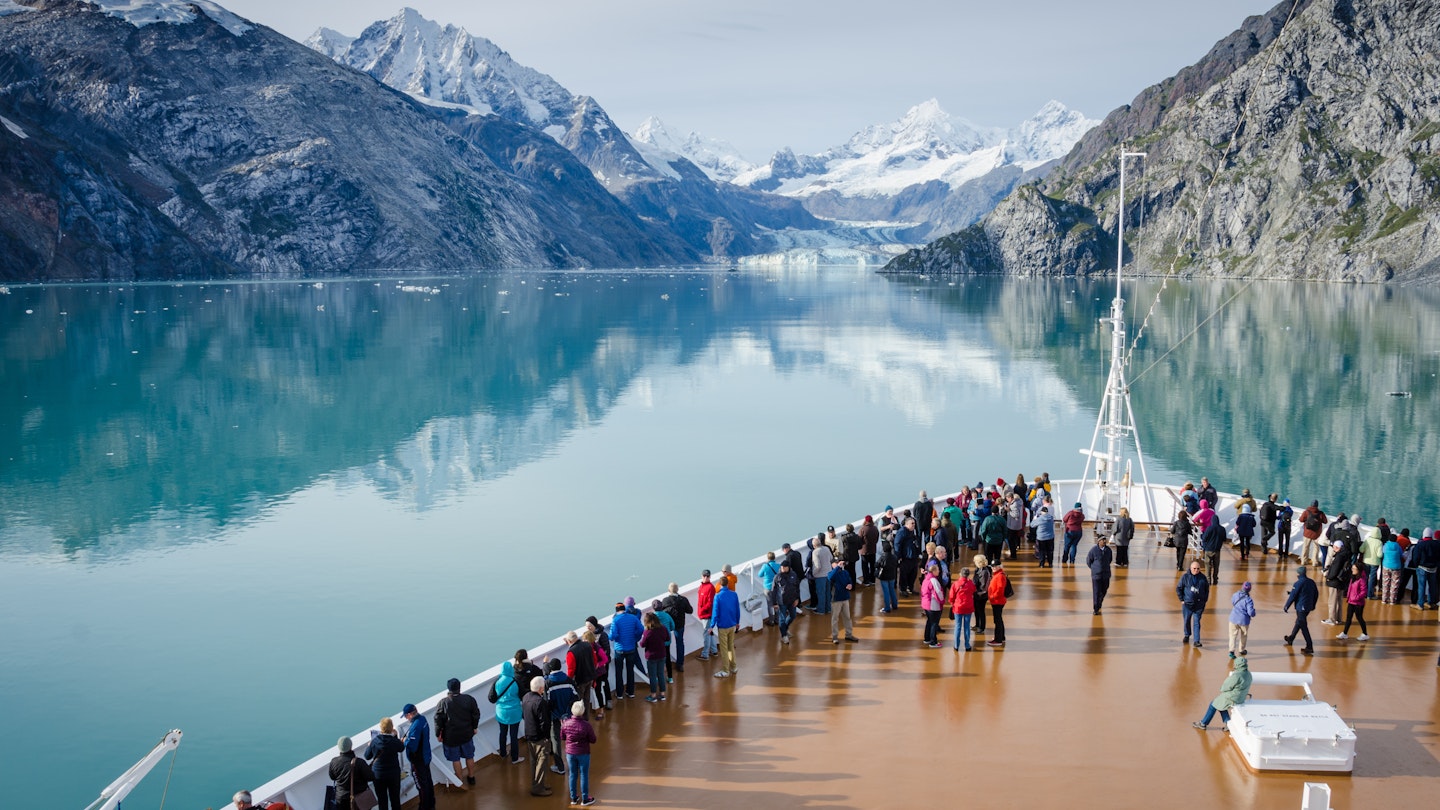
Taking to the water is a wonderful way to see Alaska's incredible coastline © Bala Sivakumar / Getty Images
Alaska's impressive southern coastlines contain hordes of island archipelagos, deep fjords and ancient glaciers. Nearly all of the area is roadless, so seafaring vessels, including cruise ships, are a popular way for visitors to experience these pristine areas.
Large cruise companies sail Alaska's Inside Passage from Seattle , Washington and Vancouver , and on through the Gulf of Alaska to Seward or Whittier. In between, passengers usually stop in Ketchikan , Juneau and Skagway , and then sail up College Fjord to see glaciers stretching their icy fingers into the sea. You'll see plenty of stunning scenery along the way but not up close – for most cruisers, it's more than enough to satisfy.
Smaller cruises max out at around 200 passengers and can nose into Southeast Alaska's nooks and crannies, launching skiffs and kayaks from their lower decks for an immersive shore visit full of exploration. These vessels may not stop in local ports, instead anchoring at night and offering guests the chance to hike a remote shoreline, whale-watch from a kayak or attend a presentation by indigenous artisans. If any ports are visited, they're likely to be smaller communities like Wrangell, Sitka, Petersburg and Yakutat.
Additionally, with the Northwest Passage now open to marine traffic, the northwestern city of Nome is a regular port of call for higher-end, midsize cruise lines to expose passengers to the rural reaches of coastal Alaska. The Aleutian Island city of Unalaska is also on some boutique cruise line itineraries, so check carefully that the region that sparks your interest.
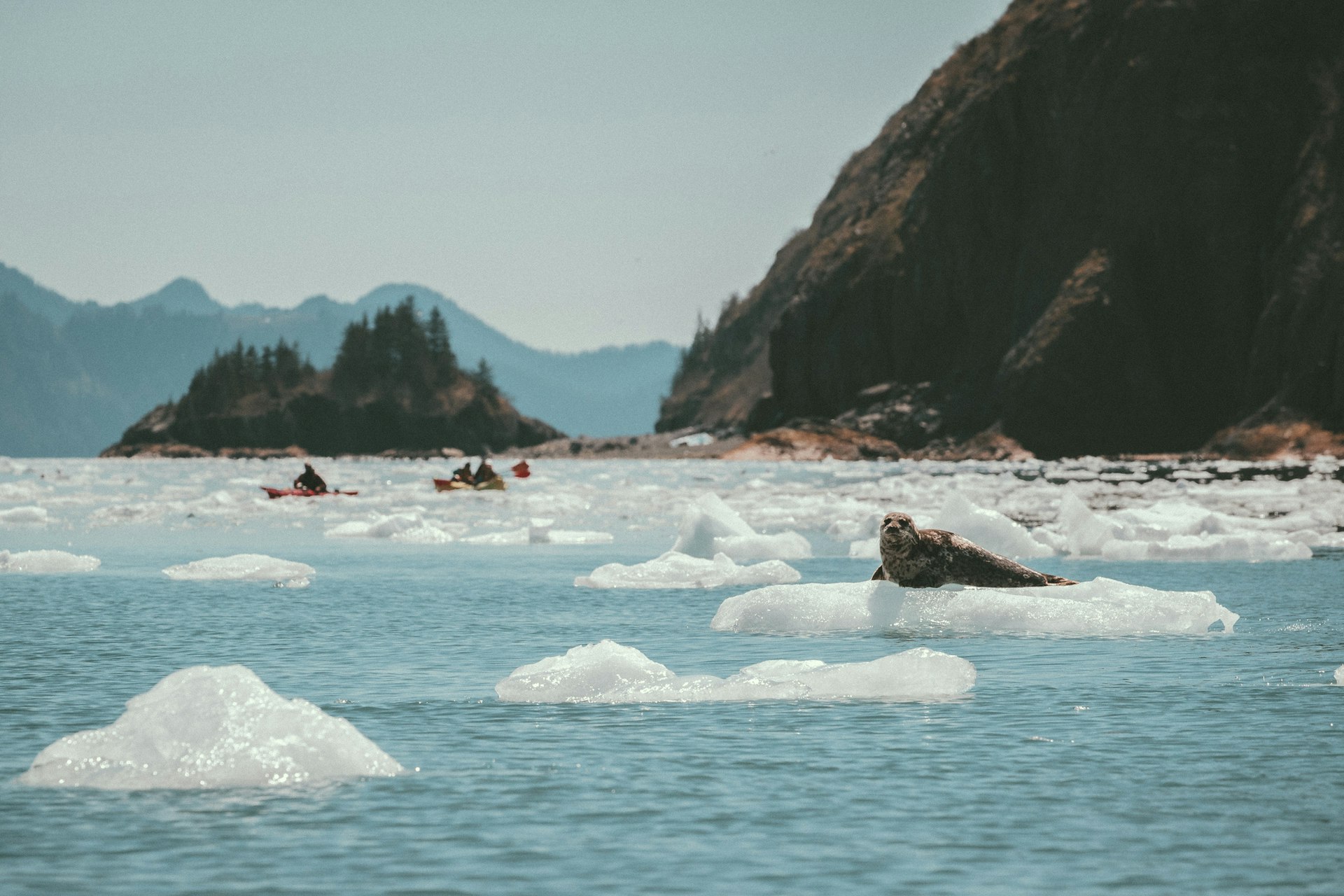
Which part of Alaska should I choose to cruise?
For an overview of Alaska The standard Inside Passage cruise between Vancouver or Seattle and Seward or Whittier is an excellent choice, boasting beautiful scenery and the chance to experience a route taken by steamships of the late 1800s. You’ll get a snapshot of the Tongass National Forest , glaciers and the occasional whale or bear, but not up close unless you’re on a specific shore excursion. Holland America, Cunard and Viking all have cruises that fit this itinerary.
Taking a deep dive into Alaska’s coastal regions Book a small ship cruise between Sitka, Ketchikan, and Juneau for a week or longer in the nooks and crannies of southeast Alaska. You’ll hike where there are no trails, paddle without another human in sight, and get to know the traditional lands of Alaska’s Coastal Native tribes. We like Alaskan Dream Cruises, UnCruise Adventures and Lindblad Expeditions for smaller, more sustainable cruises.
To discover Alaska’s rich history You can’t skip Ketchikan, Juneau or Skagway on an itinerary. Juneau is the state capital and a former mining community. Ketchikan once was a major player in the timber industry and has a sordid past steeped in bootlegging and brothels. Skagway was a jumping-off point for the Klondike Gold Rush beyond Chilkoot Pass and has an old railroad to prove it. All three cities are often on large ship itineraries.
Explore Alaska’s most remote coastal areas Consider a luxury midsize (or smaller) cruise to places like Dutch Harbor in the Aleutian Islands or to the northwestern city of Nome. Both combine a look at the rugged, raw coastlines with time spent on shore in towns with few frills. Weather can often be cold, rainy and windy, but if you want a unique adventure in Alaska, check out the itineraries from Hurtigruten.
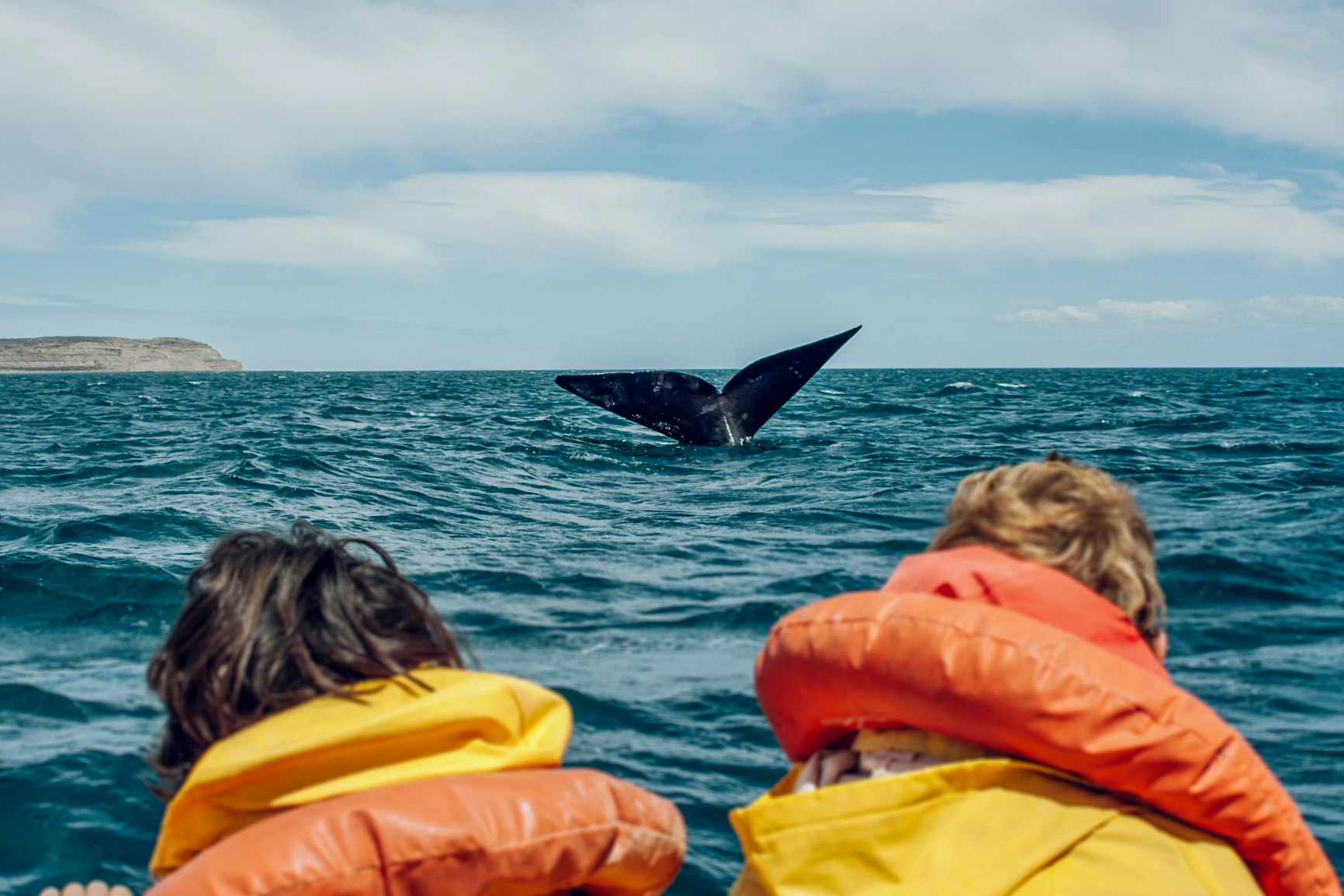
When should I go?
Depending on the cruise line, sailings begin in late April and continue through to early October. The most dependable weather typically appears in July and August, but that's also the most popular (and expensive) time; pick a trip earlier or later in the season for cheaper passage and shore excursions.
For spring and fall passengers, know that temperatures will be cooler than you might expect and variable types of precipitation, including snow showers, aren't unusual. In the summer, it's still cool on deck and near glaciers, so don't expect a lot of outdoor pool time or sunbathing on board.
If spotting wildlife is a priority, consider cruising during the salmon runs, when bears are most active and can be spotted from the decks of the ship. Humpback whales often follow schools of herring and other small fish during the summer and can be seen anytime between May and September before they migrate to Hawaii or Mexico .
How do I know my cruise line is operating sustainably?
While all travel has environmental and cultural impacts, cruising leaves its mark to varying degrees on Alaska's fragile ecosystems. The average large cruise ship can have a carbon footprint greater than 12,000 cars and produce up to a ton of trash each day. While there can be a positive economic impact on ports of call, a small community visited by 15,000 people per day during sailing season can intrinsically change.
The industry's trade group Cruise Line International Association (CLIA) touts a desire for "conscious cruising." They have guidelines for water conservation and upgrades to heating, air-conditioning and ventilation, with a goal for ships to be net zero by 2050. There is also a focus on respecting the cultural traditions of destinations through cooperative regenerative tourism that preserves a community's unique history, culture and values.

What kinds of activities can we experience?
Onshore activities differ depending on the size and style of the cruise. Traditional excursions are created to fit a specific number of people, all of whom come from the ships and are expected to be in port for a specific time. They provide an overview of Alaska's history, culture, recreation and industry, and don't offer much of a personal touch.
Smaller boutique cruises strive to immerse their guests in the wild Alaska they've researched and desire to experience. Trips to shore rarely involve large port cities except for embarking and disembarking – instead, they drop kayaks in the water from the ship or use a rubber skiff to reach a deserted shoreline for a hike. The communities they visit are usually smaller, like Petersburg, Wrangell or Haines.
- Glacier & Wildlife Tours: Cruise for a few hours aboard a smaller vessel to witness whales, otters, seals and icy glaciers.
- Dogsledding: Learn about mushing, huskies and the operations of sled-dog kennels before taking a spin behind a team.
- ATV Adventuring: Rev up for a wilderness or tundra tour aboard a four-wheeler or side-by-side vehicle.
- Flightseeing: Take a unique peek at Alaska's landscapes from above, spotting wildlife, and ogling glaciers and mountain ranges.
- Alaska Native Traditions: Learn the ways of Alaska's many tribal groups, with dancing, drumming and art displays as part of the program.
- Ride a Historic Train: Skagway's White Pass Yukon Railroad climbs over Chilkoot Pass for a hands-on gold-rush history tour.
- Paddle Power: Hop in a raft or kayak and explore Alaska's beautiful coastlines and rivers.
Need-to-know before you go
Plan for wet weather Alaska’s southeastern region is part of a rainforest, where wet conditions are the norm even in summer. Bring waterproof rain gear, sturdy shoes, a hat and gloves to stay warm and dry.
Know your physical limits If mobility or other health issues may affect your ability to enjoy a cruise to the fullest, consider traveling with a larger operator. These companies are well-versed in accessibility and have made accommodations for those with mobility needs. Smaller ships are full of trip hazards and watertight door jambs and require bending and stepping up or down to access activities like kayaking or skiff rides.
Plan your own shoreside activities There is no requirement to book excursions or activities through the cruise line. If a more independent style of exploration is your thing, feel free to do your own research ahead of time or visit each port of call’s visitor bureau upon arrival. Just be sure to adhere strictly to the ship’s boarding time.
Look to shoulder season sailings Not only will you often receive a significant discount, you’ll also be able to witness Alaska’s seasonal transitions and fewer crowds at ports of call.
Know what "all-inclusive" really means: Drill down into the details of your cruise and ask questions about meals, alcoholic beverages, activities and shore trips. It may be that a smaller cruise line will include everything at one price.
Explore related stories
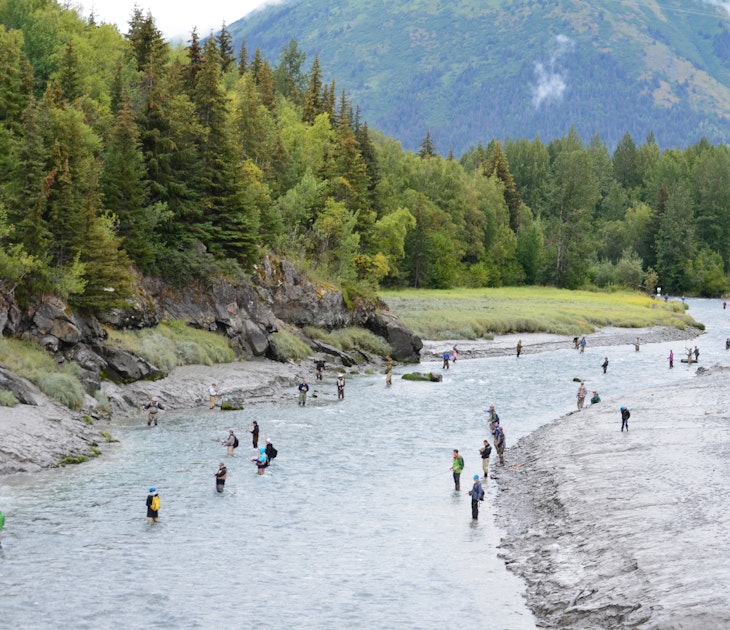
Apr 24, 2024 • 7 min read
If fishing is on your list of outdoor adventures, here is a how-to primer for casting a line in the 49th state.

Apr 22, 2024 • 6 min read

Apr 19, 2024 • 10 min read

Apr 18, 2024 • 7 min read

Apr 15, 2024 • 12 min read

Apr 6, 2024 • 9 min read

Apr 5, 2024 • 6 min read

Apr 4, 2024 • 7 min read

Mar 27, 2024 • 7 min read
Protect Your Trip »
The 13 best solo cruises for 2024 (no supplement fare).
Set sail for a solo adventure at sea.
The Best Solo Cruises

Getty Images
Relax by the pool, attend shows, dine with new friends and more on your next solo cruise.
Whether you're embarking on your first cruise alone or you've been on solo cruises before, single travelers will find more options than ever when it comes to cruising solo. Many cruise lines offer single staterooms with the same amenities as other cabins, at a price similar to what you'd pay with double occupancy fares. You'll also find special promotions where the single supplement fee is reduced or waived, making it more affordable to reserve a spacious stateroom or luxurious suite with even more amenities – including personalized butler service, an added perk of booking with many luxury lines .
If you're ready for a maritime adventure, an extended vacation or simply a quick getaway from home, these top cruise lines offer some of the best options for solo travelers on waterways around the world.
Lines with solo accommodations and waived fees
Norwegian cruise line.

Courtesy of Norwegian Cruise Line
Launched in 2010, Norwegian Epic was the first cruise ship in the industry to feature studio accommodations for solo travelers. Norwegian Cruise Line offers this category on nine of the 19 ships in its fleet, including the newest ship, Norwegian Viva. These cabins, at an average size of 100 square feet, are designed and priced with the solo traveler in mind. They have no single supplements – and studio rooms on board Norwegian Bliss even boast virtual windows.
Guests of the studios get access to the private Studio Lounge. In this exclusive space, you can socialize with other solo travelers and enjoy complimentary refreshments. There are also singles meetups throughout the voyage and plenty of fun-filled onboard activities to mingle with like-minded cruisers. Solo travelers can check out all the fun for singles on Norwegian Viva this winter on a cruise to the Caribbean , or in spring 2024 as the ship sets sail for the Mediterranean .
Book a Norwegian Cruise Line voyage on GoToSea, a service of U.S. News.
MSC Cruises

Courtesy of MSC Cruises
MSC Cruises offers interior and balcony solo cabins for single cruisers on its Meraviglia-class ships: the MSC Meraviglia, Bellissima, Grandiosa, Virtuosa and the newest vessel in the fleet, MSC Euribia. The second-newest ship, MSC World Europa, has 28 cabins – 10 Studio Interior and 18 Studio Ocean View staterooms – designed specifically for solo travelers. MSC World America, set to debut in 2025, will also feature the solo studio staterooms.
During voyages with MSC Cruises , single cruisers are invited to a complimentary, hosted cocktail party to mix and mingle with other solo travelers. The daily program is also an excellent source to discover additional activities, entertainment and opportunities to meet other cruisers. You'll have onboard special events like the themed 70s-inspired Flower Party and the White Party, where the ship is decked out in festive white decor and guests don their best white attire. In addition, there are various sports tournaments, or you can show off your culinary expertise during a MasterChef competition.
MSC's Caribbean and Bahamas cruises departing from Miami and New York City feature an overnight visit to Ocean Cay, the line's private island and marine reserve. While there, singles can participate in fun-filled evening activities like a Champagne Sunset Cruise or a glow paddleboarding excursion in the lagoon, then attend the lively Luna Libre Party and the lighthouse show.
Find an MSC Cruises itinerary on GoToSea.
Holland America Line

Michel Verdure | Courtesy of Holland America Line
Three of Holland America Line's newest ships each offer 12 solo cabins to accommodate single travelers: the Pinnacle-class Nieuw Amsterdam, Rotterdam and Konigsdam. These ocean view staterooms range in size from 127 to 172 square feet and feature the same amenities as the double occupancy cabins but with a double bed. The cruise line's Single Staterooms are priced for one person. If a guest chooses to book a different stateroom, single supplements for double occupancy cabins are as much as 100% over the standard fare, depending on the voyage and the cabin category.
Long committed to solo travelers, the line offers many activities where guests can meet other singles such as wine tastings, cocktail mixers, exercise classes, daily quizzes, sports challenges and more. If you're a solo traveler and a member of AARP, Holland America is now the exclusive cruise benefit provider to AARP's members. Solo cruisers will have access to an AARP member-only onboard credit that ranges from $50 to $200, depending on the itinerary and stateroom category.
For itineraries, Holland America's Alaska cruises and cruisetours are perfect for solo travelers, offering many opportunities to connect with fellow cruisers. Another favorite for singles is the line's fall voyages sailing from Boston to Québec City or Montreal.
Explore Holland America Line deals on GoToSea.
Royal Caribbean International

Michel Verdure | Courtesy of Royal Caribbean International
Royal Caribbean International features studio staterooms on select ships that range in size from 101 to 199 square feet. These solo accommodations include interior rooms, virtual balcony staterooms and a super studio ocean view stateroom with a balcony. The cabins do not carry the single supplement fee singles encounter when booking other types of staterooms, making them an attractive option when traveling alone.
Once on board the ship, solo cruisers will have countless options to engage and socialize with other travelers. When it comes to dining with Royal Caribbean , make a reservation at the Japanese restaurant Teppanyaki for an entertaining meal with new friends, or join fellow foodies for the intimate Chef's Table experience (the dining venues vary by ship). Singles can also participate in onboard activities like trivia contests, drink seminars, escape rooms, dance classes and pool parties.
If you need more thrills to stay busy and to meet people, Royal Caribbean's ships feature world-class shows and entertainment alongside adrenaline-pumping rides and attractions. If you're sailing in the Caribbean, there are plenty of opportunities to meet and chat with other passengers at the line's private island, Perfect Day at CocoCay.
Compare Royal Caribbean International cruises on GoToSea.
Atlas Ocean Voyages
Luxury line Atlas Ocean Voyages offers single cruisers 183 square feet of beautifully appointed space in solo accommodations that come without single supplement fees. These ocean view staterooms feature a queen bed, a panoramic picture window, a private spa bathroom with a rain shower and body jets, a stocked minifridge replenished daily with personal favorites, and other luxurious amenities. Single guests can also book other stateroom or suite categories with single supplements starting at 50% of the double occupancy price.
The line's three intimate yacht-style cruise ships – World Navigator, World Traveller and the new World Voyager, whose inaugural season begins in Antarctica in November 2023 – are all-inclusive . Meals at all the dining venues, premium beverages and wines, gratuities, culturally immersive excursions, and more are included in the fare. With fewer than 200 guests on board, there's an atmosphere of conviviality on these ships – especially when exploring remote destinations with like-minded and adventurous travelers during expeditions in Antarctica and the Arctic.
Read: The Top Cruises on Small Ships
Celebrity Cruises

Tim Aylen | Courtesy of Celebrity Cruises
Celebrity Cruises' new Edge-class ships offer some of the best options for solo cruisers. The line's two newest vessels, Celebrity Beyond and Celebrity Ascent (set to debut in late 2023), each boast 32 single staterooms with an Infinite Veranda. In addition, Celebrity Apex has 24 solo cabins, and Celebrity Edge features 16 staterooms for individual guests. These one-person accommodations offer a minimum of 131 square feet of space and the same upscale amenities you'll find in other category staterooms on their ships. Solo guests can look for special promotions where the single supplement is waived on select Celebrity voyages throughout the year.
Once on board the vessel, check out the daily program for activities conducive to meeting others – like wine tastings, cocktail-making classes and more. You'll also enjoy thrilling top-notch entertainment around the ship in The Theatre, The Club and Eden. A few popular cruises for singles are the line's Caribbean and Mexico itineraries on Celebrity Beyond.
Book a Celebrity Cruise on GoToSea.
Virgin Voyages

Courtesy of Virgin Voyages
The hip vibe on board the adults-only Virgin Voyages ships is ideal for solo cruisers looking to meet other travelers. Its superyacht-style ships – Scarlet Lady, Valiant Lady and Resilient Lady – offer 40 interior cabins ranging in size from 105 to 177 square feet. There are also six Sea View staterooms with portholes boasting between 130 to 190 square feet of space. These Insider and Sea View cabins are designed and priced for single travelers, with amenities like high-tech mood lighting and roomy rain showers. The line also runs promotions where solo cruisers can book double occupancy staterooms without paying a single supplement.
Activities and festival-like entertainment around the ships foster fast friendships. Diners will enjoy the interactive experience at Gunbae, the lively Korean barbecue venue. The "grog walk" is a fun pub stroll where solo sailors can join fellow mates while sipping and snacking their way through all the signature bars. For even more fun, check out the evening shipwide events such as the themed Scarlet Party, which features live music and immersive experiences. The line also hosts meetups for singles throughout each voyage.
Read: The Top Adults-Only Cruises
Avalon Waterways

Courtesy of Avalon Waterways
Avalon Waterways' river and small-ship cruises traverse waterways around the world, including in Europe, Asia, Africa and South America. The company waives the single supplement on a selection of staterooms, including its Panorama Suites, on select European and Asia departures. The company recommends booking early as the specially priced cabins do sell out. Solo travelers make up about 10% of the passengers on this river cruise line .
Avalon's fleet of Suite Ships operates in Europe and Southeast Asia and features cabins with a minimum of 172 square feet. About 80% of the staterooms are Panorama Suites, which have 200 feet of living space, beds with a view and the river cruise industry's only open-air balcony. With Avalon excursions, solo cruisers have opportunities to meet like-minded guests during immersive tours, cooking classes, wine tastings, yoga or fitness classes, biking or hiking trips, and more. Single guests can choose to dine at tables for just two people or ones that can accommodate up to eight passengers.
Read: Cruise Packing List: Essentials for Your Next Cruise
Tips on Trips and Expert Picks Newsletter
Travel tips, vacation ideas and more to make your next vacation stellar.
Sign up to receive the latest updates from U.S News & World Report and our trusted partners and sponsors. By clicking submit, you are agreeing to our Terms and Conditions & Privacy Policy .
AmaWaterways

Courtesy of AmaWaterways
Two single occupancy staterooms are available on four of AmaWaterways' river cruise ships: AmaDolce, AmaDante, AmaLyra and AmaCello. These accommodations do not have single supplement fees. Solo cruisers can also book staterooms with a 20% single supplement on select sailings in Europe and Southeast Asia. (Note that this pricing does not apply to certain stateroom categories and suites.)
With the friendly, small-ship atmosphere, solo cruisers will find it comfortable to socialize with other passengers and the crew. Onboard activities and immersive excursions also create opportunities for fostering friendships, especially among like-minded travelers. Excellent options for solo cruises include themed sailings centered around music and wine or the magical Christmas markets itineraries along the Danube, Rhone and Rhine rivers.
Explore AmaWaterways deals on GoToSea.
Lines with discounted supplement fares

Courtesy of Azamara
Azamara's special offers for solo travelers include reduced single supplements of 25% to 50% of the double occupancy rate on select sailings. The line's four midsized sister ships – carrying no more than 700 passengers – are mostly all-inclusive. Amenities included in the cruise fare include most meals; standard spirits, wines and beers; bottled water, soft drinks, and specialty teas and coffees; shuttle service in port; gratuities; and complimentary AzAmazing Evenings ashore or Destination Celebration experiences on the ship. Dining at the two specialty restaurants is an additional cost unless guests have accommodations in the Club World Owner's Suites, Club Ocean Suite or Club Continent Suite.
Single guests on Azamara cruises will find events during the sailing and venues around the ship where you can mix and mingle with other solo travelers and chat with the friendly crew. Intimate and culturally immersive excursions also create opportunities to meet passengers with similar interests. Azamara Onward, the latest ship, boasts the new Atlas Bar, a great spot to meet other travelers.
For itineraries, Azamara's signature "Country-Intensive Voyages" are a favorite of solo cruisers, including the 10- or 11-night Greece Intensive Voyage. For an extended sailing, check out the festive 12-night Carnival in Rio Voyage, which features a stop in Rio de Janeiro during the city's famed Carnival.
Compare Azamara cruises on GoToSea.
Cunard Line

Courtesy of Cunard Line
Cunard Line features dedicated solo staterooms on its three ships, priced at approximately 166% to 174% of the equivalent double occupancy cruise fare. Guests can choose between a spacious Britannia Inside or Britannia Oceanview cabin, or opt for a larger stateroom with a single supplement. For a little "me time" pampering while on board, solos will appreciate 24-hour room service, complimentary Penhaligon's toiletries and a chilled bottle of sparkling wine. Single guests will also be invited to get-togethers. You can either dine alone at venues around the ship such as the main dining room or choose to share a table with other passengers.
With an international mix of travelers, single cruisers will find many opportunities to meet and chat with others, especially during a Transatlantic Crossing. During the sailing, you'll find many enriching and relaxing activities that encourage socializing. According to Cunard , there's a sense of camaraderie and a passion around the voyage – and the unique travel experience of crossing the Atlantic Ocean.
Find a Cunard Line cruise on GoToSea.
Silversea Cruises

Courtesy of Silversea Cruises
Luxury line Silversea Cruises offers 25% single supplements on various voyages throughout the year, including expedition cruises to destinations like the Galápagos Islands , Antarctica and the Arctic, and Greenland. The line's all-inclusive fares include luxurious ocean view suites, gourmet dining, complimentary wines and spirits, gratuities, onboard enrichment and entertainment, shore excursions, and more. Solo travelers will even have personalized butler service to indulge their every whim.
The line's fleet of a dozen intimate ships, carrying no more than 728 guests, offers a clubby atmosphere perfect for meeting solo and like-minded travelers. Single guests will also have the opportunity to engage with other solo passengers during a welcome reception with Champagne at the beginning of each voyage. Popular itineraries for Silversea's single cruisers include its Transoceanic journeys, a bucket list trip for many cruisers .
Explore Silversea Cruises deals on GoToSea.

Courtesy of Seabourn Cruise Line
Seabourn has special offers throughout the year where solo cruisers can take advantage of reduced pricing equal to double occupancy fares or discounts on the single supplement starting at 25% above the double occupancy fares. These rates are available on select voyages, including expedition cruises. Frequent solo cruisers and members of the luxury line's Seabourn Club Diamond Elite will also find reduced single supplements on Diamond Elite Single Supplement Sailings. In addition, club members receive invitations to exclusive events, where they can meet and mingle with fellow cruisers. Solo passengers are also invited to sit with the ship's officers, crew and entertainers at dinner – and there are hosted get-togethers for single travelers.
Solo cruisers will enjoy beautifully designed oceanfront suites and all-inclusive amenities on board Seabourn 's intimate ships. These perks include world-class dining; complimentary premium wine and spirits; a spa and wellness program in partnership with Dr. Andrew Weil; included gratuities; and the line's enrichment series, Seabourn Conversations. Single cruisers looking for an extended holiday will enjoy longer voyages on the line's newest purpose-built expedition ship, Seabourn Pursuit.
Compare Seabourn cruises on GoToSea.
Why Trust U.S. News Travel
Gwen Pratesi has been an avid cruiser since her early 20s. She has visited destinations around the globe on nearly every type of ship built, including the newest megaships, luxury yachts, expedition vessels, traditional masted sailing ships and intimate river ships on the Mekong River. She used extensive research and experience as a solo cruiser to write this article. Pratesi covers the travel and culinary industries for major publications, including U.S. News & World Report.
You might also be interested in:
- The Top Party Cruises
- The Top Transatlantic Cruises
- The Top 3-Day Cruise Itineraries
- Solo Travel for Women: The Best Places and Tips
- The Best Cruise Insurance Plans
The Best Places to Travel Alone

Tags: Travel , Cruises
World's Best Places To Visit
- # 1 South Island, New Zealand
- # 4 Bora Bora
If you make a purchase from our site, we may earn a commission. This does not affect the quality or independence of our editorial content.
You May Also Like
Best whale watching tours in maine.
Marisa Méndez April 23, 2024

The Best Wineries in Napa Valley
April 23, 2024

The Best East Coast Beaches
April 19, 2024

The Best Hard-sided Luggage Picks
Erin Evans , Rachael Hood , Catriona Kendall , Amanda Norcross and Leilani Osmundson April 17, 2024

The Best Carry-on Luggage

The Best Luggage Brands
Rachael Hood April 17, 2024

The Best Yellowstone National Park Tours
John Rodwan April 17, 2024

The Best Rome Colosseum Tours
Laura Itzkowitz April 17, 2024

Best Alaska Tours
Lyn Mettler April 16, 2024

The Best Fredericksburg Wine Tours

- Starting a Business
- Growing a Business
- Small Business Guide
- Business News
- Science & Technology
- Money & Finance
- For Subscribers
- Write for Entrepreneur
- Entrepreneur Store
- United States
- Asia Pacific
- Middle East
- South Africa
Copyright © 2024 Entrepreneur Media, LLC All rights reserved. Entrepreneur® and its related marks are registered trademarks of Entrepreneur Media LLC
I Work From a Cruise Ship for 3 Months a Year. Here's How I Stay Productive at Sea. Improved WiFi speed and reliability have been game-changers for remote workers who want to work on a cruise.
By Elle Hardy • Apr 24, 2024
Key Takeaways
- Walter Biscardi runs his travel business remotely from cruise ships for three months each year.
- He said WiFi reliability has improved, but video calls and finding power outlets can be challenging.
- Biscardi recommends Virgin Voyages for remote workers because of the spaces to work and the WiFi.
This article originally appeared on Business Insider .
This as-told-to essay is based on a conversation with Walter Biscardi, a 59-year-old travel agent based in Orlando. The following has been edited for length and clarity.
I used to work in film, television, documentary, and marketing, and I ran two creative agencies in Atlanta for 25 years.
A few years ago, my wife and I turned my second passion, travel, into " Where's Walter Travel ." We specialize in travel planning services for cruises , group vacations, theme park tours, and company retreats.
We live in an Orlando rental, but I run the travel-planning business from a cruise ship for three months out of the year.
We started taking advantage of our remote working situation after the pandemic
In a few short years of working on cruise ships, I've noticed that more and more people are starting to do the same thing.
We predominantly cruise the Caribbean. Last year, our three months were spread over six different trips on the Royal Caribbean , Oceania , Virgin Voyages , and Carnival cruise lines. If it were up to me, I'd be at sea for six months a year, but my wife prefers three.
This year, we'll be back on Virgin Voyages in June and on the Sun Princess in October. We're planning a few more, too.
WiFi speed and reliability onboard ships have been game-changers
Working remotely on the Sky Princess. Walter Biscardi via BI
I don't always look for speed but rather consistency and reliability.
Even though the WiFi is reliable on most ships , it's still not perfect, and you need to manage your expectations. The WiFi on ships is satellite-based, so the signal will be slower if there's a lot of cloud cover. Rain may also temporarily cut it out completely.
The WiFi signal in rooms can be weak. When I get on board, I walk around public places, look at the ceiling, and find the repeaters, which amplify the router's signal. I park myself under a repeater to work, so at least I know I'm getting the fastest signal.
Video calls can be dicey, but voice calls over WiFi work well
Most of my work is using emails, social media apps, and a web browser, so I don't tend to have problems. The upload speed is the most difficult thing about working on a cruise ship.
Working from a cruise ship might not be for you if you're required to upload a video to YouTube or be on video for 100% of your Zoom calls. Zoom with video turned off works well. I post TikToks all day, but uploading to YouTube will fail almost every time.
Turn off your cell service on the ship, even if you have unlimited roaming overseas. Phones use satellite maritime cellular, and it's ridiculously expensive. I've heard of people who have come home with $1,000 cellular bills because they didn't turn off their roaming.
I can typically make most of my calls over WiFi, but you won't be able to on some ships. Texting from ship to land usually works well if you're using the same type of phone as the person you're messaging, but when you're texting cross-platform, sometimes it doesn't work.
Finding power outlets can be challenging
Outlets on the Scarlet Lady. Walter Biscardi via BI
Typically, if you need to put in a full day of work connected to power, you need to stay in your room. One tip to finding power when you're looking around public areas is to see where they plug in the vacuum cleaners.
I strongly recommend bringing a powerboard with multiple USB sockets. I have one with 10 USB connections, so I can charge my phone, GoPro, and other devices simultaneously.
Virgin Voyages ships are the most friendly for remote workers
The galley on a Virgin Voyages ship is set up like a coffee shop, with easily accessible power and USB sockets at the table. There are dozens of outlets, as they're inviting people to bring their laptops and work from the ship.
I usually upgrade to the premium WiFi option, which can cost anywhere from $19 to $39 per day on most lines, but Virgin only charges $10 per day to upgrade.
I work in an office at home, so working on a cruise is a big change
I operate at sea as I do on land, with the same office hours available to my clients other than when I know we're going on an excursion.
Cruise ships are comparable to remote working spaces, but they offer so much more. On a cruise, almost everything is included: breakfast, lunch, dinner, coffee, entertainment, and most amenities.
If I want to take a break from work, I go to the pool. When I finish for the day, I'll go to the theater to see a show.
Meeting places are usually free on a cruise ship. Generally, all you have to do is reserve a conference room. AV facilities are usually included too, although you may have to pay a setup fee.
Remember to be respectful — many people are on board for a vacation. I've been out by the pool and seen people taking business calls on speakerphone, which is ridiculously annoying.
I suggest picking at least one port on every cruise and make it a 'ship day'
About 75% of people will get off the ship at any port, so staying on board feels like you have the whole place to yourself.
Activities like the pools will still be open, and the spas will often discount their services by 20-40% on port days.
Of course, I still recommend getting off and exploring as much as possible — that's what cruises are for.
Want to be an Entrepreneur Leadership Network contributor? Apply now to join.
Editor's Pick Red Arrow
- James Clear Explains Why the 'Two Minute Rule' Is the Key to Long-Term Habit Building
- They Designed One Simple Product With a 'Focus on Human Health' — and Made $40 Million Last Year
- Lock Younger Americans Don't Necessarily Want to Retire in Florida — and the 2 Affordable States at the Top of Their List Might Surprise You
- I Tried Airchat , the Hottest New Social Media App in Silicon Valley — Here's How It Works
- Lock This Side Hustle Is Helping Farmers Earn Up to $60,000 a Year While Connecting Outdoor Lovers With Untouched Wilderness
- Are Franchises in the Clear After the Expanded Joint Employer Rule Was Struck Down? Industry Experts Answer 2 Critical Questions About What's Next.
Most Popular Red Arrow
Most people have no business starting a business. here's what to consider before you become an entrepreneur.
You need to find the right business opportunity at the right time and take the right steps to beat the odds.
AI vs. Humanity — Why Humans Will Always Win in Content Creation
With the proliferation and integration of AI across organizations and business units, PR and marketing professionals may be tempted to lean into this new technology more than recommended.
Who You Hire Matters — Here's How to Form a Team That's Built to Last
Among the many challenges related to managing a small business, hiring a quality team of employees is one of the most important. Check out this list of tips and best practices to find the best people for your business.
This Leadership Technique is the Secret to Optimal Team Performance
Through my experience in business, I've found one particular leadership technique that works better than others.
After Noticing That Dogs Had Better Fresh Food Options Than Babies, This Entrepreneurial Couple Started a Company. 50 Million Meals Later, They're Running the Fastest-Growing Kids Meal Delivery Company in America.
Ben Lewis and Angela Vranich, co-founders of Little Spoon, detail the launch and massive growth of their healthy baby and kids food brand.
7 Ways You Can Use AI to 10x Your Leadership Skills
While technology can boost individual efficiency and effectiveness, it's essential to balance their use with human intuition and creativity to avoid losing personal connection and to optimize workplace satisfaction.
Successfully copied link

IMAGES
VIDEO
COMMENTS
Here is the cruising speed of some popular cruise ships: Carnival Cruise Line: Carnival Vista: 23 knots. Carnival Breeze: 22 knots. Carnival Liberty: 19.6 knots. Carnival Fantasy: 19.5 knots ...
Depending on the exact ship, cruise ships can get up to a good speed given the need. Cruise ship speeds are measured in knots, and one knot is 1.15078 miles per hour on land. Royal Caribbean says its cruise ships go as fast as 18 to 20 knots, depending on the specific ship and itinerary travelled. This is equivalent to 20 to 23 miles per hour ...
A knot is the nautical measure of speed used by cruise ships and other maritime vessels. One knot represents 1 nautical mile per hour. But "knot" isn't simply a misspelled nickname for "naut" (as in nautical mile). Its origins are far more literal, according to the United States' National Ocean Service. In the 17th century, ship crews measured ...
The average cruise ship speed is approximately 20 knots, equivalent to 23 mph. Top-end cruise liners can reach speeds between 21 to 24 knots under optimal conditions. On its inaugural trip, the SS United States holds the historical record with a top speed of 38 knots. Various factors, including fuel efficiency and passenger comfort, influence ...
The average speed of a modern cruise ship is roughly 20 knots (23 miles per hour), with maximum speeds reaching about 30 knots (34.5 miles per hour). How fast a ship is able to sail depends on ...
How fast is a cruise ship, which is the fastest cruise ship in the world, all about cruise ship speed (average/top) measured in knots, mph, kph. ... Caribbean's Oasis-Class (nearly 225,300 tons each) cruise with an average speed of 20 knots (23 mph / 37 kph) and can go with "top speed" 22,5 Kn (26 mph / 42 kph). ...
How Fast Do Cruise Ships Go? The average cruise ship speed is about 18-22 knots (or 20-25 MPH). Keep in mind that this is the average speed, not the fastest speed the ship can travel. There are ...
February 7, 2024. Cruise ship speed typically has an average cruising speed between 20 and 25 knots (23-29 mph or 37-46 km/h). Some of the fastest cruise ships, like the Queen Mary 2, can reach speeds of up to 30 knots (34.5 mph or 55.5 km/h). It's important to note that these speeds are not constant, as they can fluctuate depending on the ...
For ships sailing at sea, speed is measured in knots and nautical miles. One nautical mile is approximately 1.15078 miles per hour on land. In other words, you will never a true sailor say, "This ship is sailing at 20 miles per hour!" Most cruise ships sail around 20 knots per nautical mile, which translates to 23 miles per hour on land.
While passengers are on the ship eating dinner, hanging out by pool, gambling in the casino, or watching a show, most cruise ships can sail along at a cruising speed of about 22 knots. Since a knot is about 1.15 miles per hour, a cruising speed of 22 knots comes out to roughly 25 miles per hour. Not every ship goes this fast, but many do.
The average speed of a cruise ship is typically around 18 to 22 knots, which translates to about 20 to 25 miles per hour. This speed allows for a smooth and enjoyable sailing experience for passengers. For comparison, an average cruising speed of 20 knots is equivalent to traveling at 23 miles per hour on land.
The fastest cruise ships can reach a top speed of thirty knots. Thirty knots is fast for a ship, and most cruise ships never travel at it. Instead, they travel at their cruising speed. The speed of a cruise on a Royal Caribbean Cruise ship, for example, is 18-20 knots. And most other cruise lines have an average speed of between 19 and 22 knots.
The Bottom Line. Cruise ships travel relatively slowly, with an average speed of 18 to 22 knots (20 to 25 miles per hour). Ocean liners like Queen Mary 2 can reach top speeds of 30 knots, but for true cruise ships, the maximum speed is more like 25 knots. So when asking how fast can a cruise ship go, really you're asking about theoreticals ...
While your car could easily leave a cruise ship in its wake on land, in the open ocean, it's a whole different ball game. On average, cars can go about 60-70 miles per hour, while cruise ships go around 20-30 miles per hour. But, remember, while your car may win the speed race, it definitely can't match the luxury of a cruise ship.
But have you ever wondered how fast these massive vessels actually travel? Let's dive into the basics of cruise ship speed: Measuring Speed: Cruise ship speed is typically measured in knots, which are nautical miles per hour (1 knot = 1.852 km/h). Unlike land vehicles with speedometers, cruise ships rely on a log to measure speed. This log ...
How Fast Do Carnival Cruise Ships go? Carnival cruise ships go anywhere from 8-9 knots. Sometimes they'll cruise at 10 knots if the ocean is flat. How Far Can A Cruise Ship Travel In A Day? A typical cruise ship travels anywhere from 5,000 miles per day to 8,000 miles. Depending on the route taken, a cruise ship could cover more distance ...
How Fast Do Cruise Ships Go? The average cruise ship can travel as fast as 24 knots per hour. The engine's power outlet and the ship's weight are a few factors that affect the speed. One common reason for the cruise ship's speed is to arrive at the port on time. If the ship arrived at its destination early, then the company would pay ...
Weather conditions play a big role in determining how fast a cruise ship can go. High winds, waves, and storms can slow down the ship significantly, while calm seas and clear skies can allow for a smooth and speedy journey. Another factor that affects cruise ship speed is fuel consumption. The amount of fuel a ship carries can determine how ...
How fast do Royal Caribbean cruise ships go? The top speed of Royal Caribbean cruise ships vary however the average cruising speed is about 18 to 20 knots depending on the ship and itinerary which is approximately 20 to 23 miles per hour.
However, some vessels from popular cruise lines, such as Carnival and Royal Caribbean, are known to go over 25 knots from time to time. Despite this fast speed, most cruise ships will never even ...
Understanding how fast cruise ships go and the factors that influence their speed can help you make informed decisions when planning your next cruise adventure. As you embark on a cruise vacation, it's essential to know that the speed of a cruise ship can vary depending on several factors. These factors can include the size and type of the ...
How Fast Do Cruise Ships Go? Feross Bessadeg. June 21, 2023. The average speed of cruise ships is 20 knots (23 mph, 37 km/h), and the current fastest cruise ships are the MV Glory Sea ship and the Queen Mary 2 ship, both of these vessels can achieve a cruise speed of 30 knots (35 mph, 56 km/h). The maximum speed ever recorded by a passenger ...
A modern cruise ship travels at the speed of roughly 20 knots (23 miles per hour) at night. Most cruise ships have a maximum speed of 30 knots (34.5 miles per hour.) The average cruise ship speed is the same at night and day. But the truth is that the speed of a cruise ship at night can vary depending on a number of factors.
If stopping at these ports — or really anywhere outside the Caribbean — is at the top of your vacation wish list, you'll have to prioritize a smaller Royal Caribbean ship or go with higher-end ...
9 Things You Need to Know About a D-Day River Cruise. This year marks the 80th anniversary of D-Day. Most river cruise lines include tours to the Normandy Beaches as part of a Seine River cruise ...
Cruise Ships Are Huge Vessels That Can't Just Stop And Go Back Cruise ships are ultimately colossal floating cities. It is physically impossible to stop on a dime and turn around when a guest is late.
The average large cruise ship can have a carbon footprint greater than 12,000 cars and produce up to a ton of trash each day. While there can be a positive economic impact on ports of call, a small community visited by 15,000 people per day during sailing season can intrinsically change. ... Need-to-know before you go. Plan for wet weather ...
To determine whether or not you need a passport to cruise, you first need to figure out if the itinerary is closed-loop or open-loop (also known as open-jaw). Closed-loop cruise: A closed-loop ...
Courtesy of Cunard Line. Cunard Line features dedicated solo staterooms on its three ships, priced at approximately 166% to 174% of the equivalent double occupancy cruise fare. Guests can choose ...
WiFi speed and reliability onboard ships have been game-changers. Working remotely on the Sky Princess. Walter Biscardi via BI. I don't always look for speed but rather consistency and reliability.